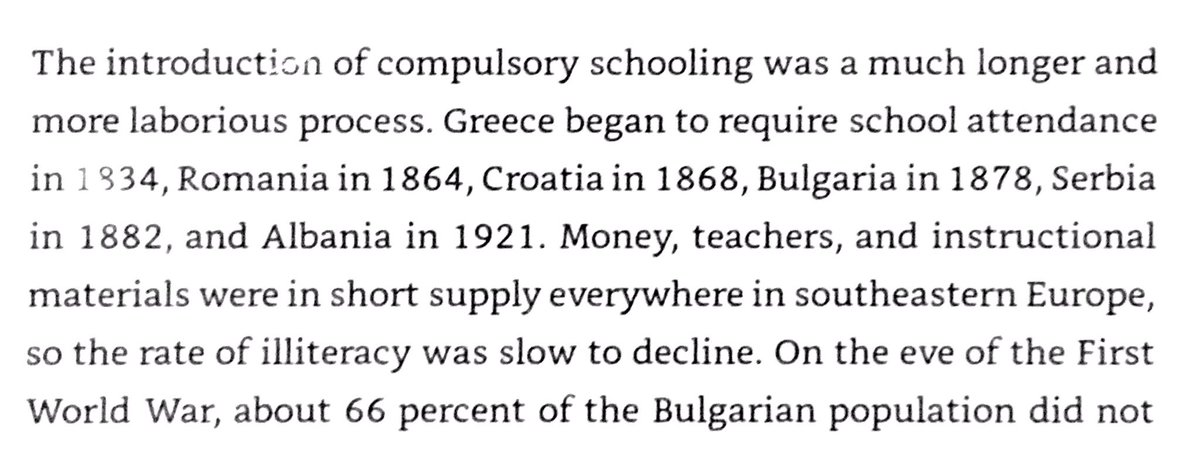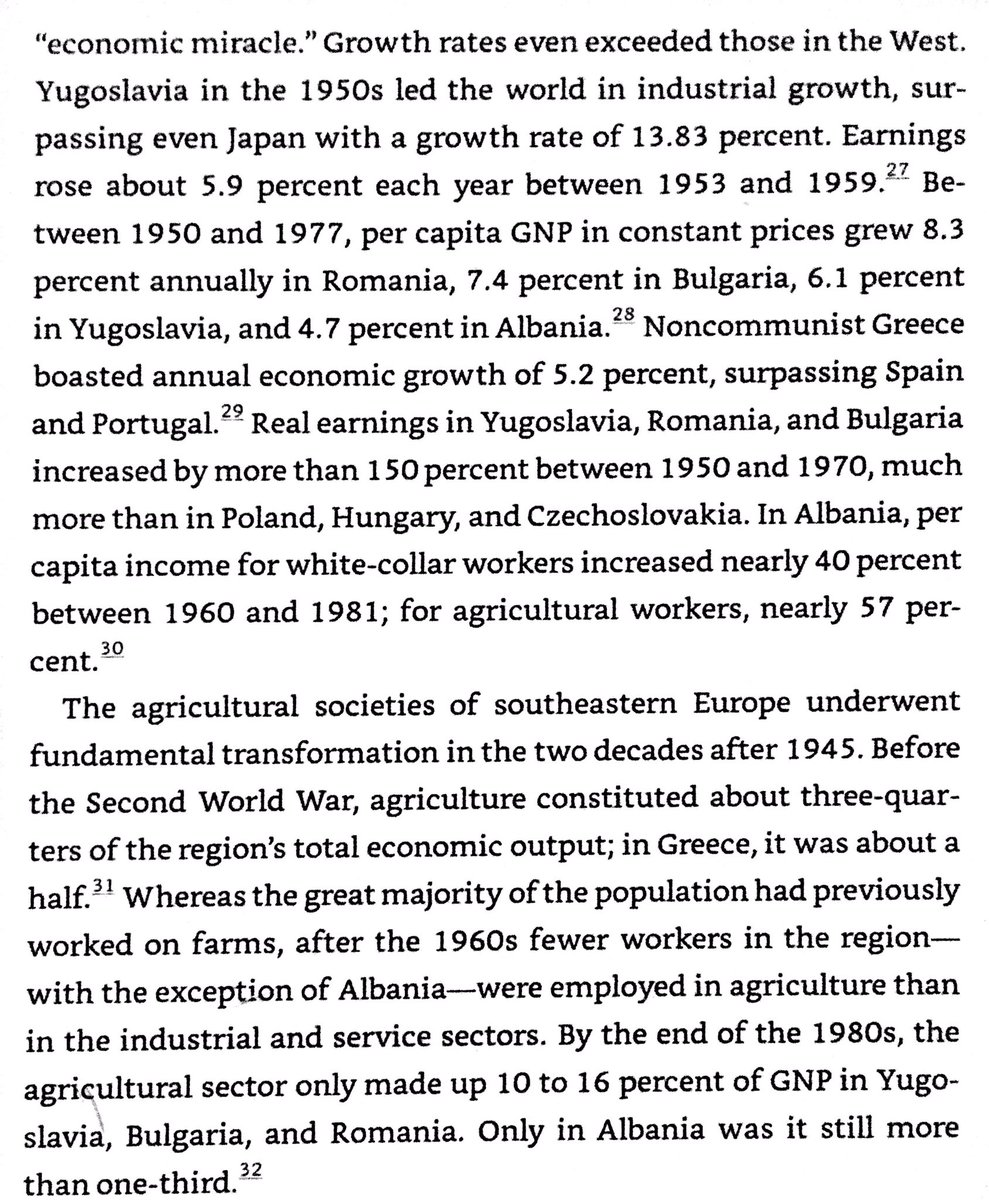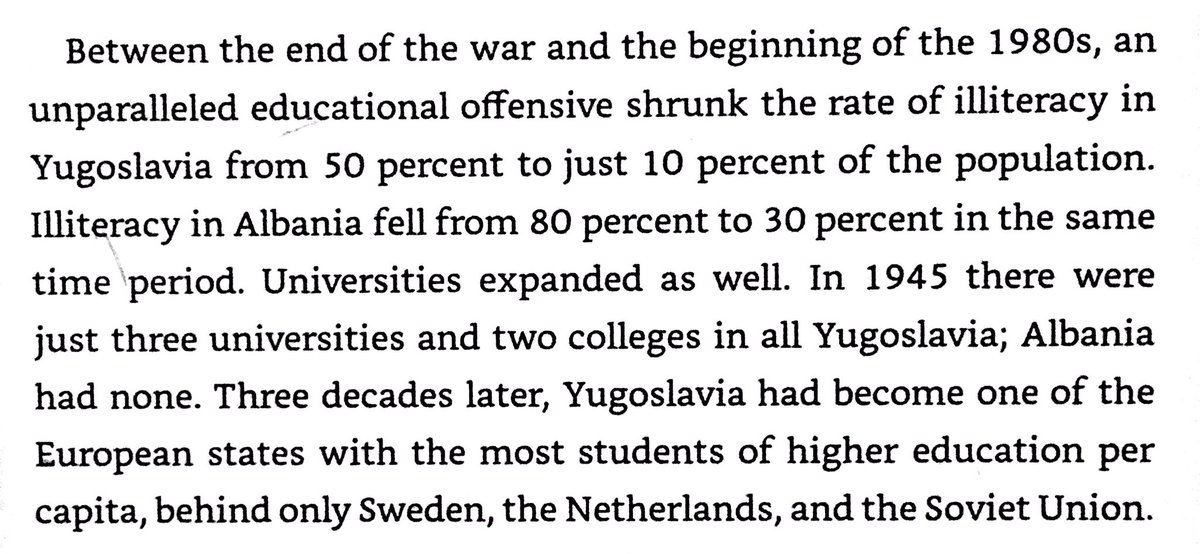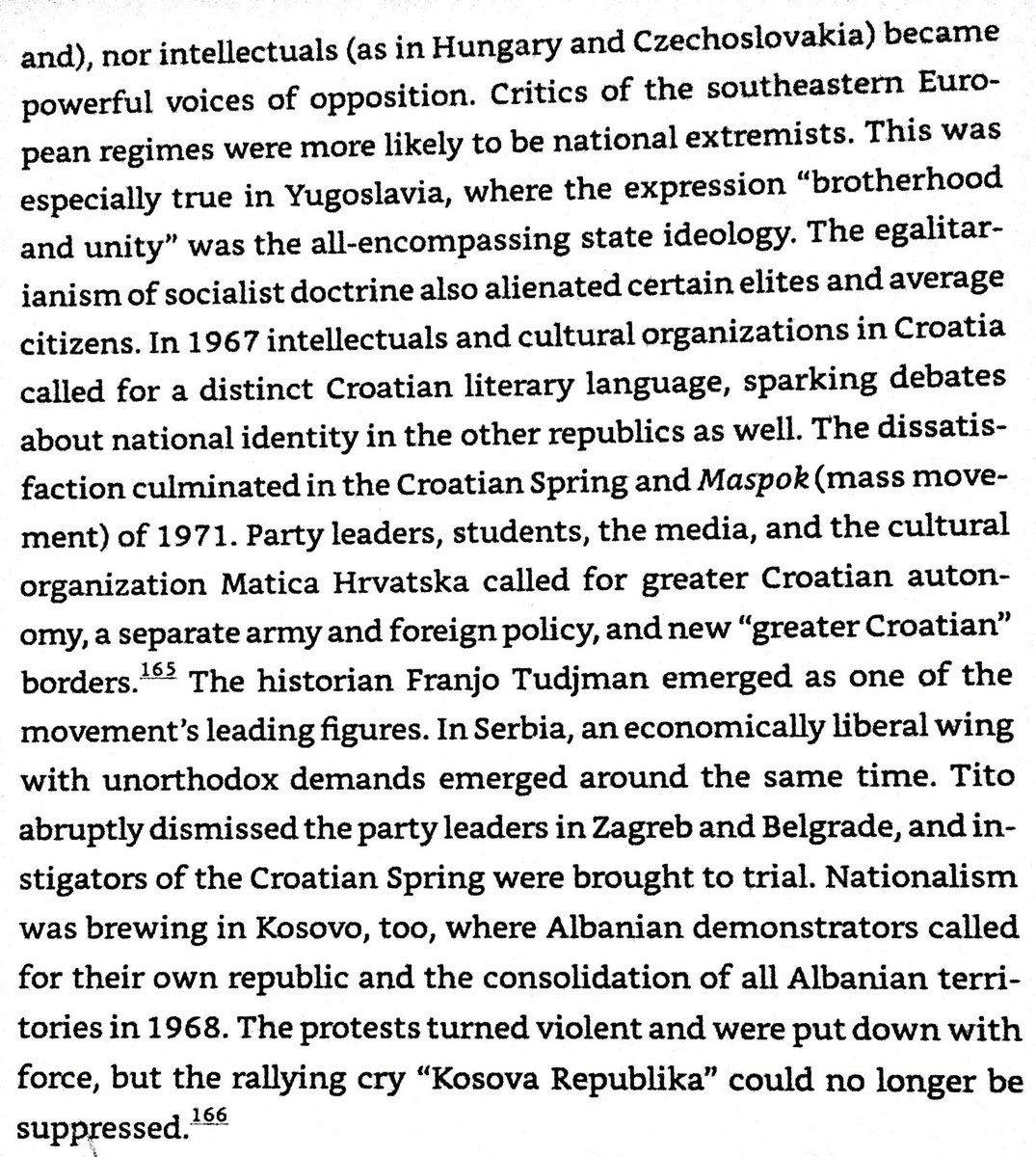Thread with excerpts from “The Great Cauldron: A History of Southeastern Europe” by Marie-Janine Calic 

Translation from original German by Elizabeth Janik. Original title was “Südosteuropa”.
Disputes over the origins of the Romanians & Albanians - did they form in their current areas in ancient or classical times, or are they the result of medieval migrations? 


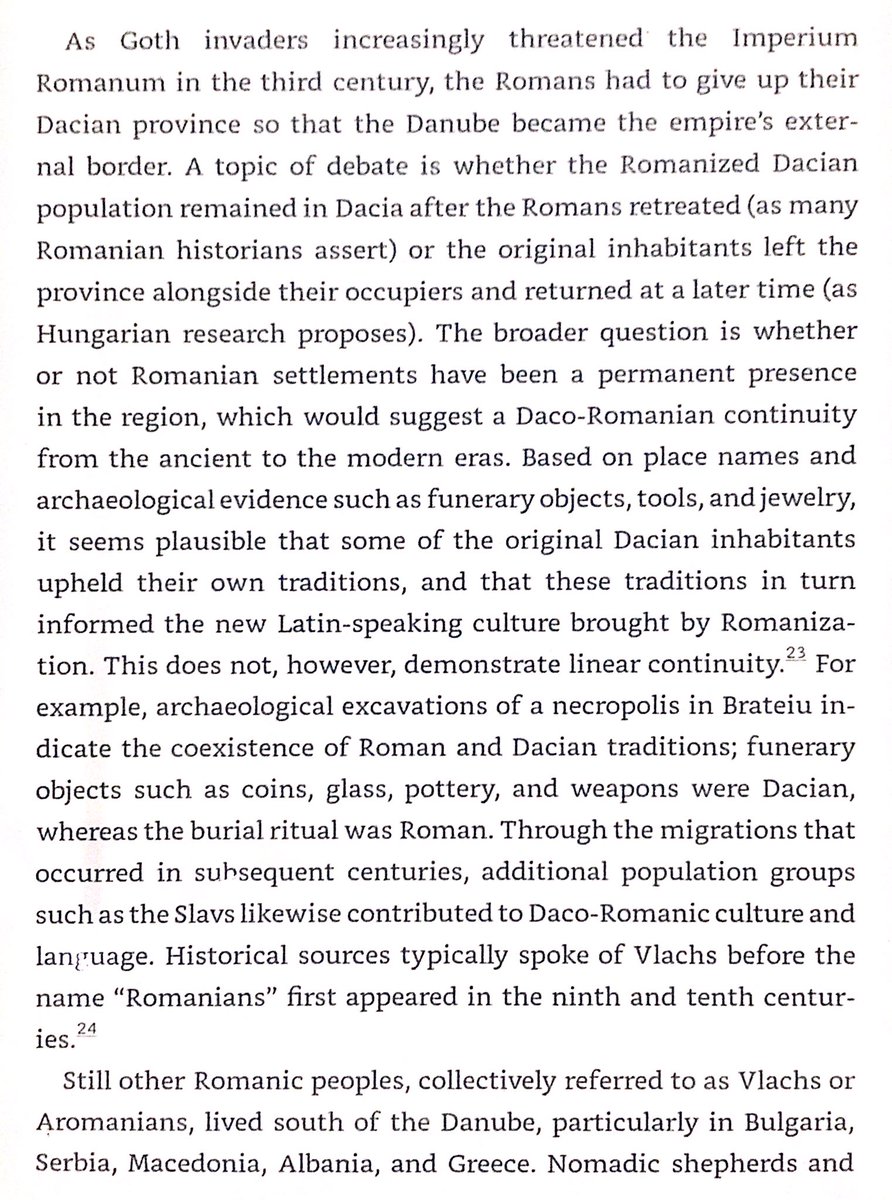

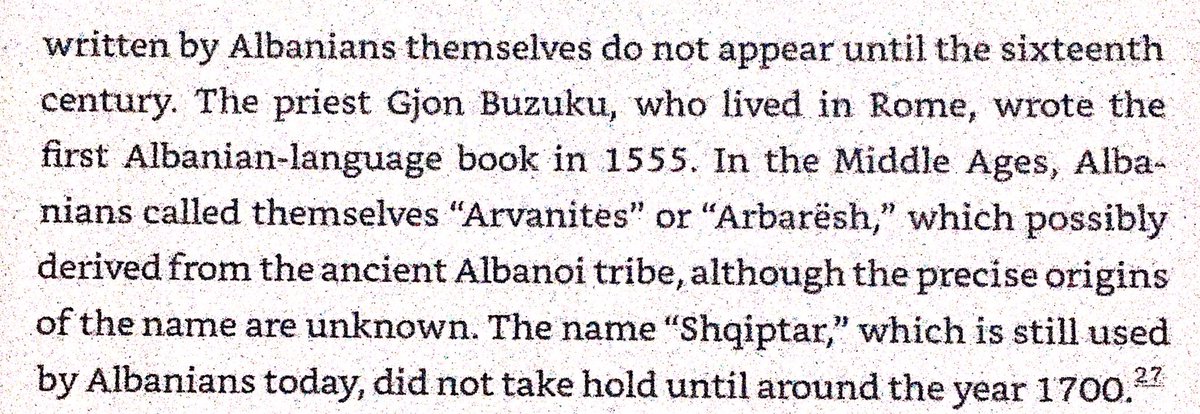
Slavs invaded Balkans with Avars in 7th century. They absorbed most of the peoples of the Balkans due to more robust social & economic system (even if less sophisticated), but in Greece the Byzantines re-Hellenized them in 9th century. 



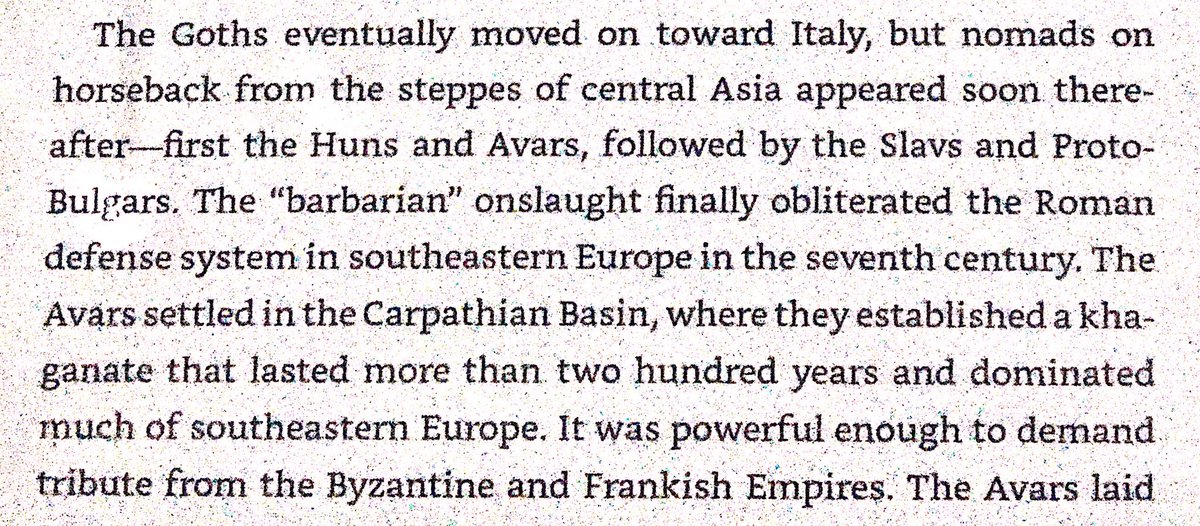
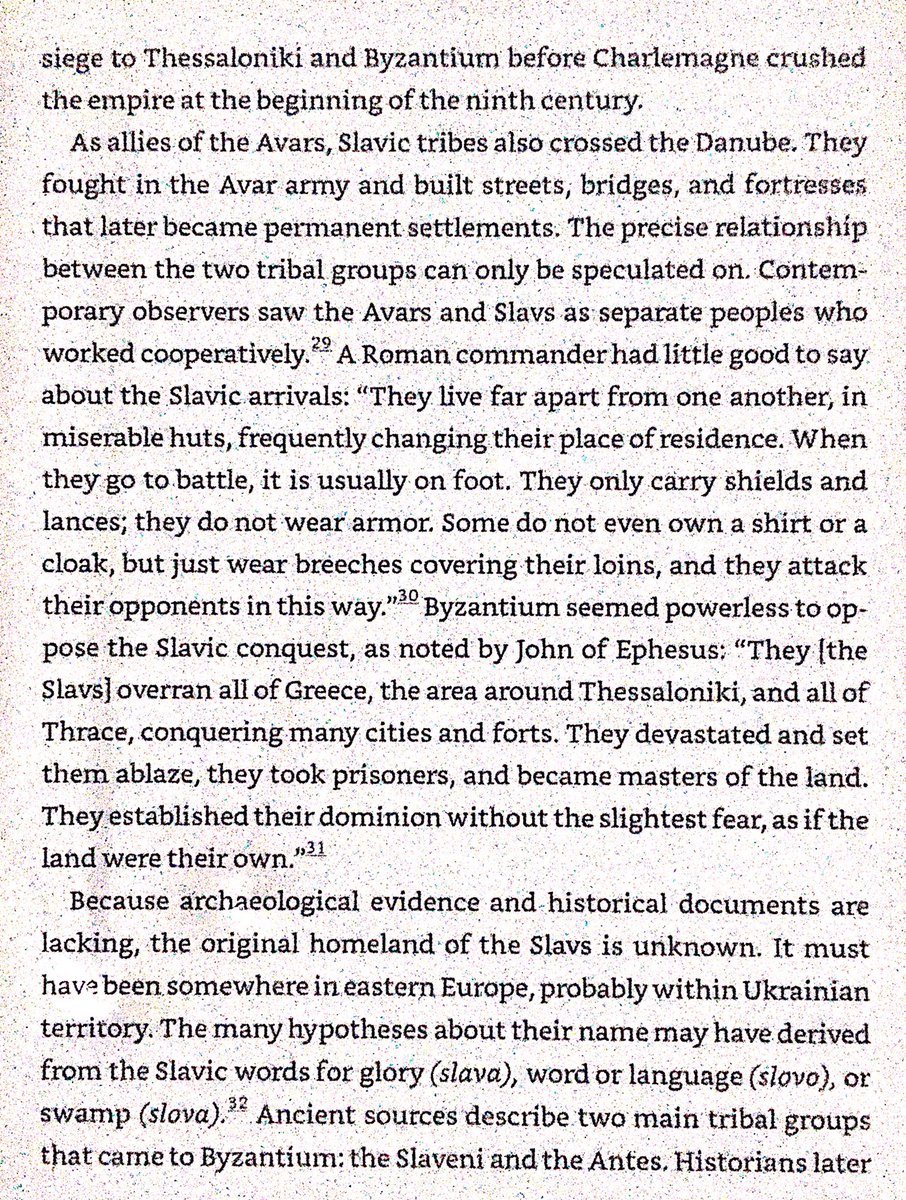
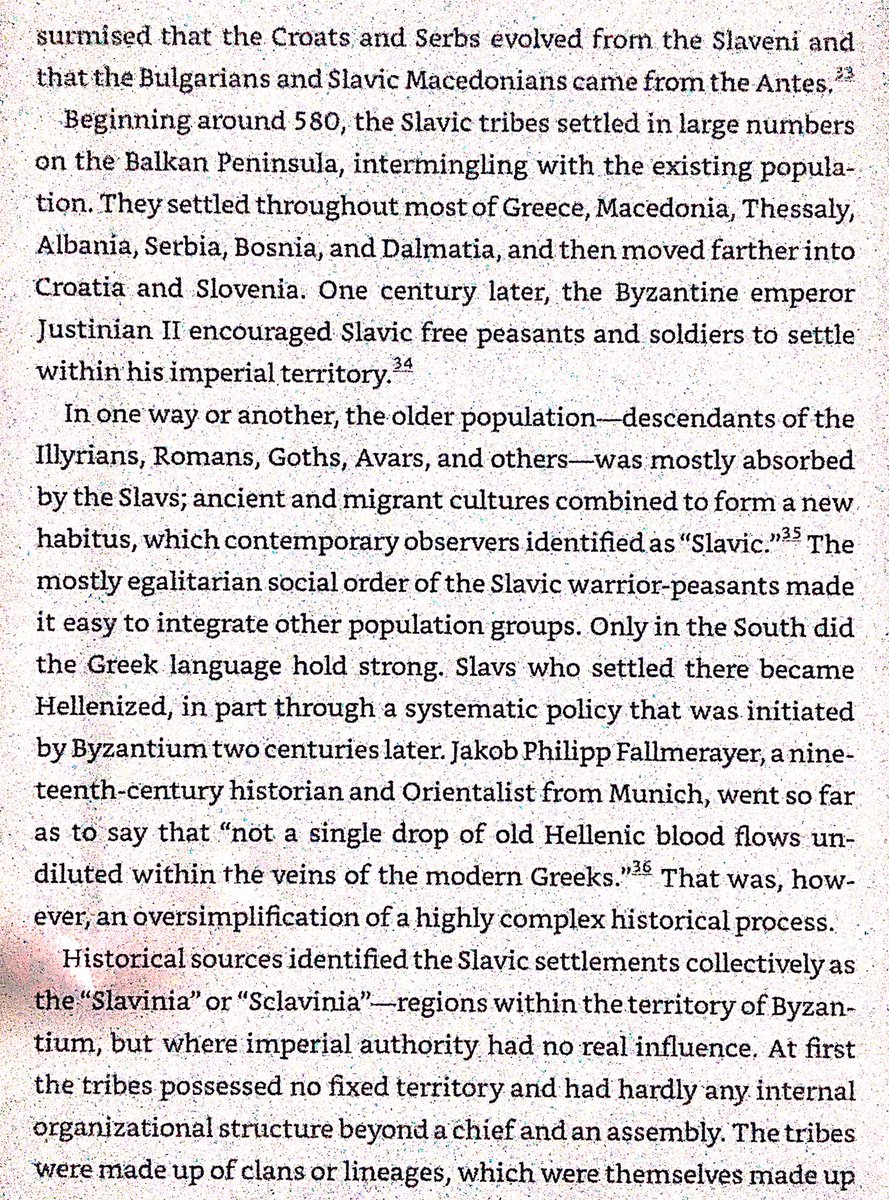
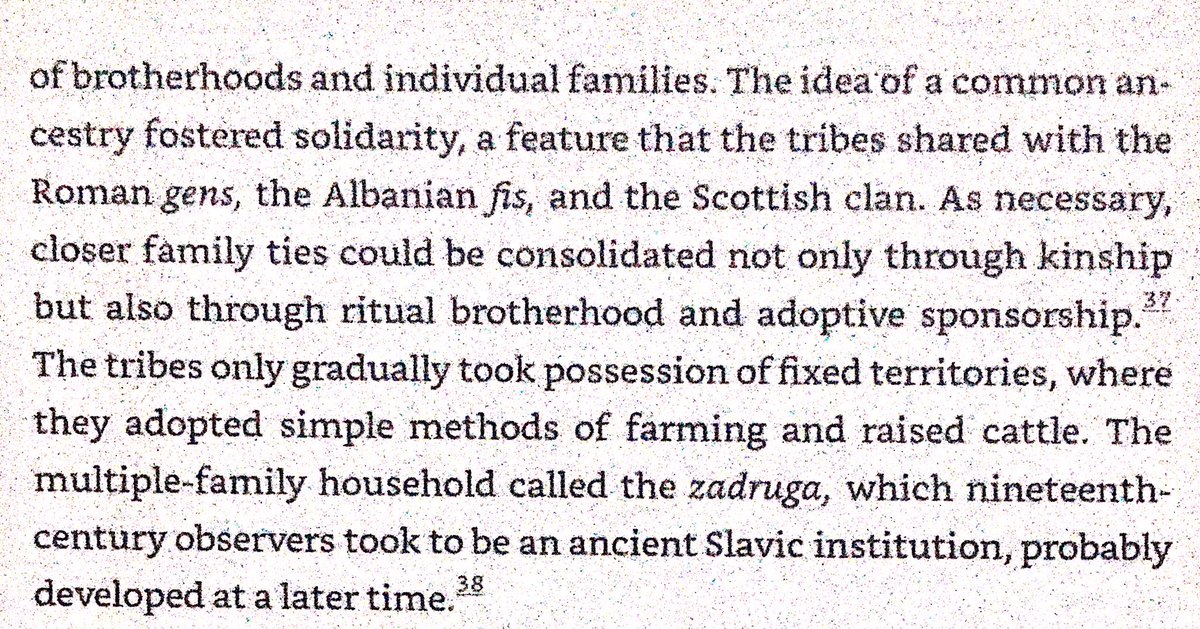
Dualism was promoted by Bulgarian priest Bogomil in 900s AD. After Byzantines conquered Bulgaria, dualists fled, including to Bosnia. Bosnian Church was founded ~1200 & may have been influenced by them, but it considered itself Christian. Catholics & Orthodox consider it heresy. 



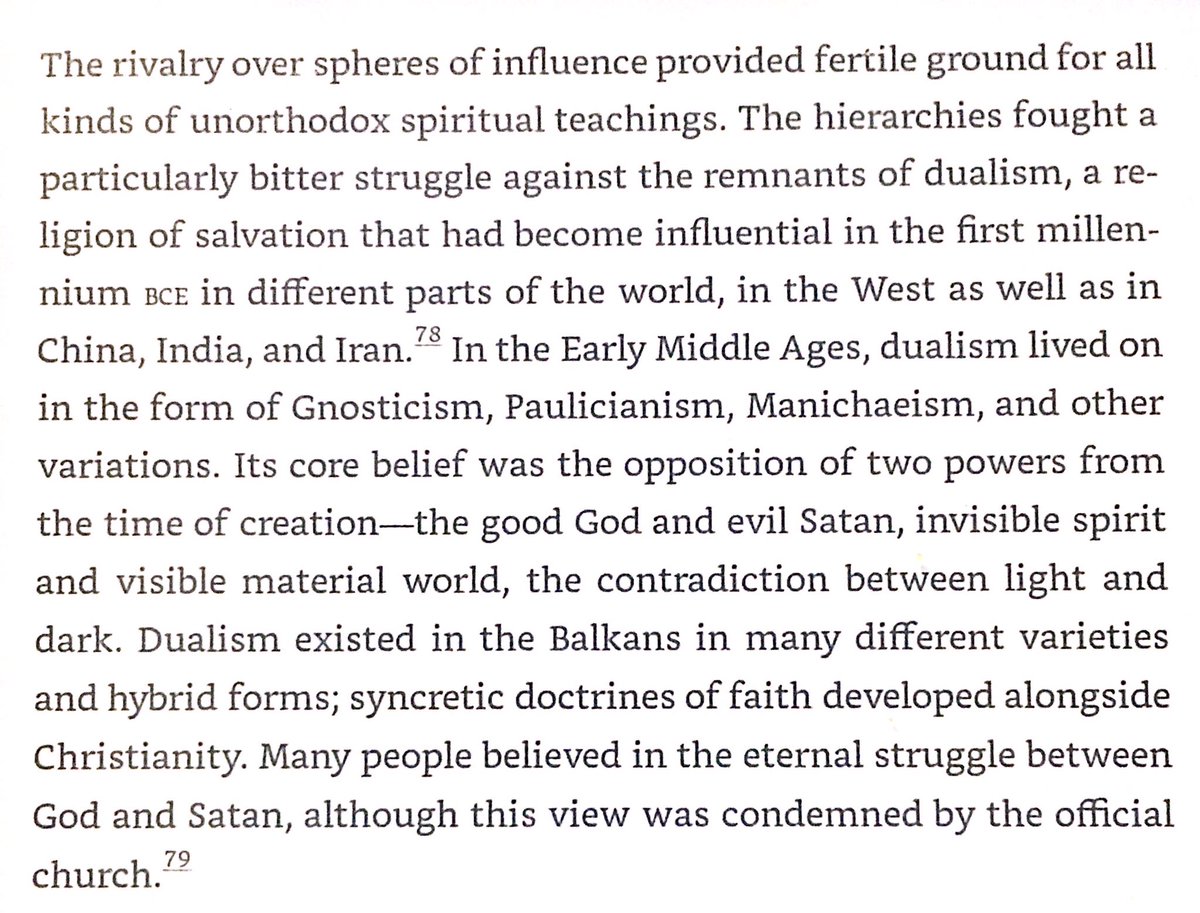
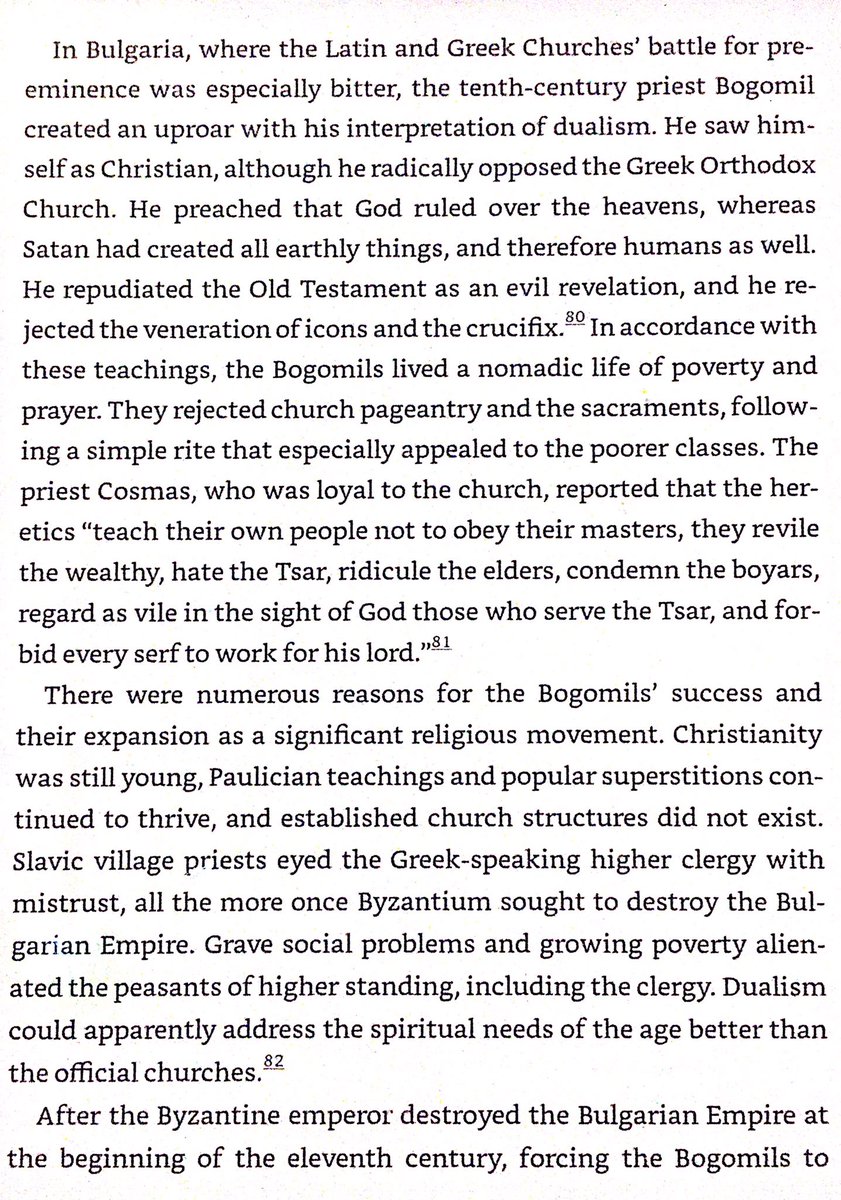
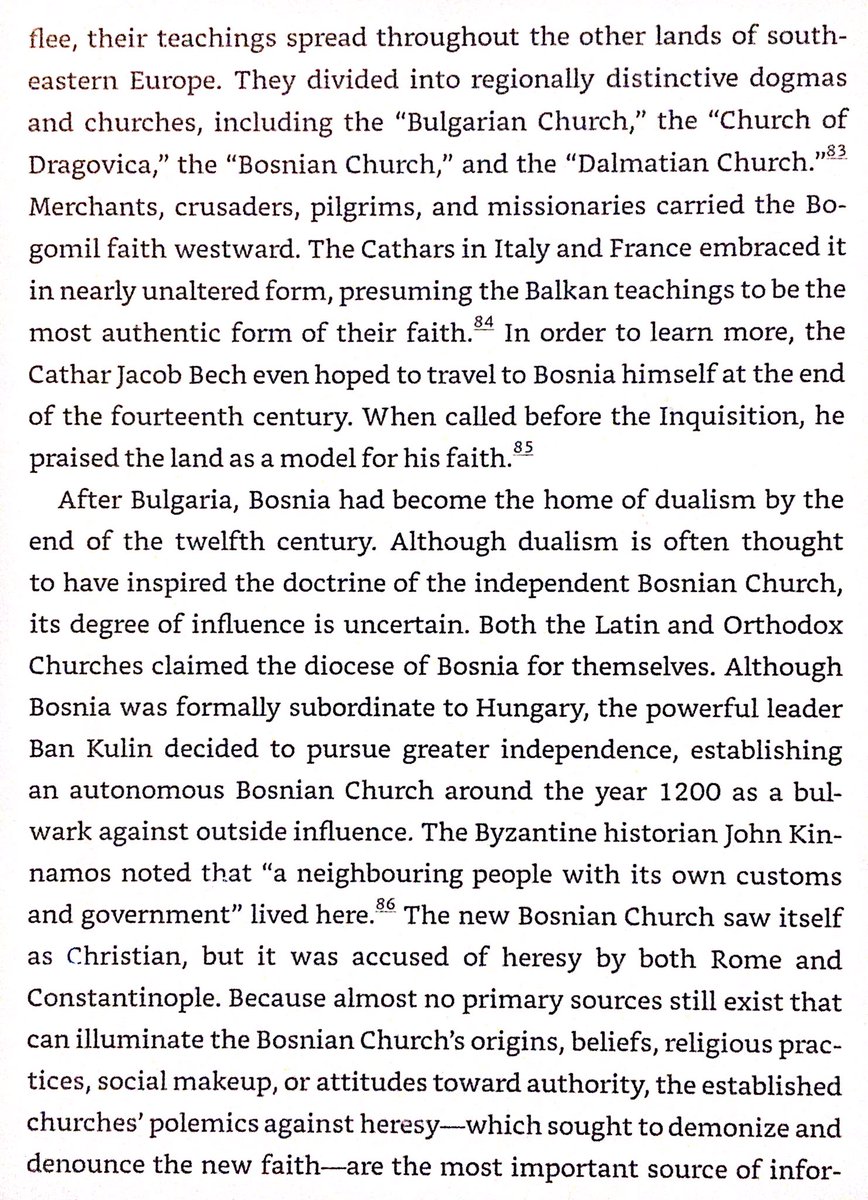
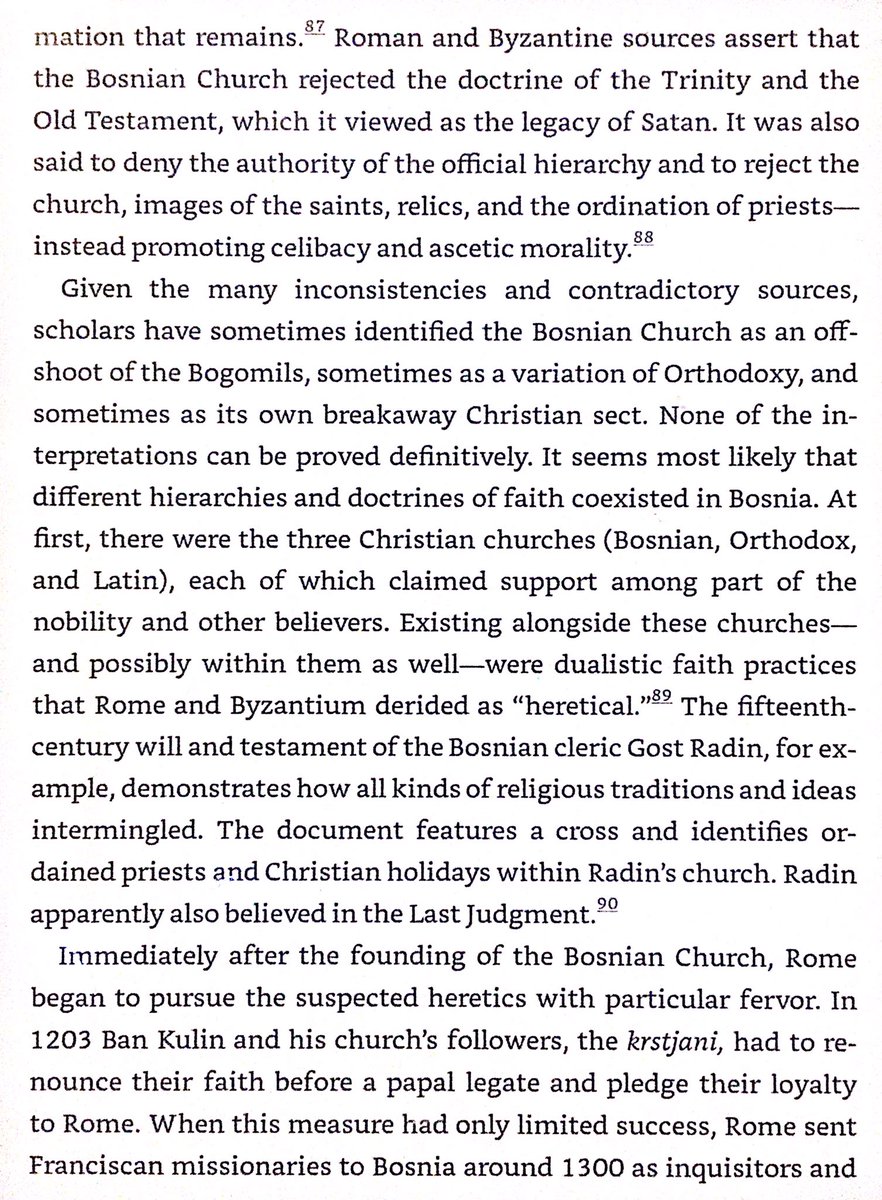
Bosnian king outlawed the Bosnian Church in mid-1400s under pressure of Catholic neighbors. Conversion to Islam under Turkish rule was not driven by prior local support of the Bosnian Church - members of all faiths converted. 

Charlemagne conquered Croatia from Avars. In 850 Croats under Trpimirovic dynasty forged their own kingdom. In 1102 dynastic disputes led to Hungarian takeover until 1918. Original Hungarian takeover agreement lost, uncertain if Croatia kept or lost her statehood within Hungary. 

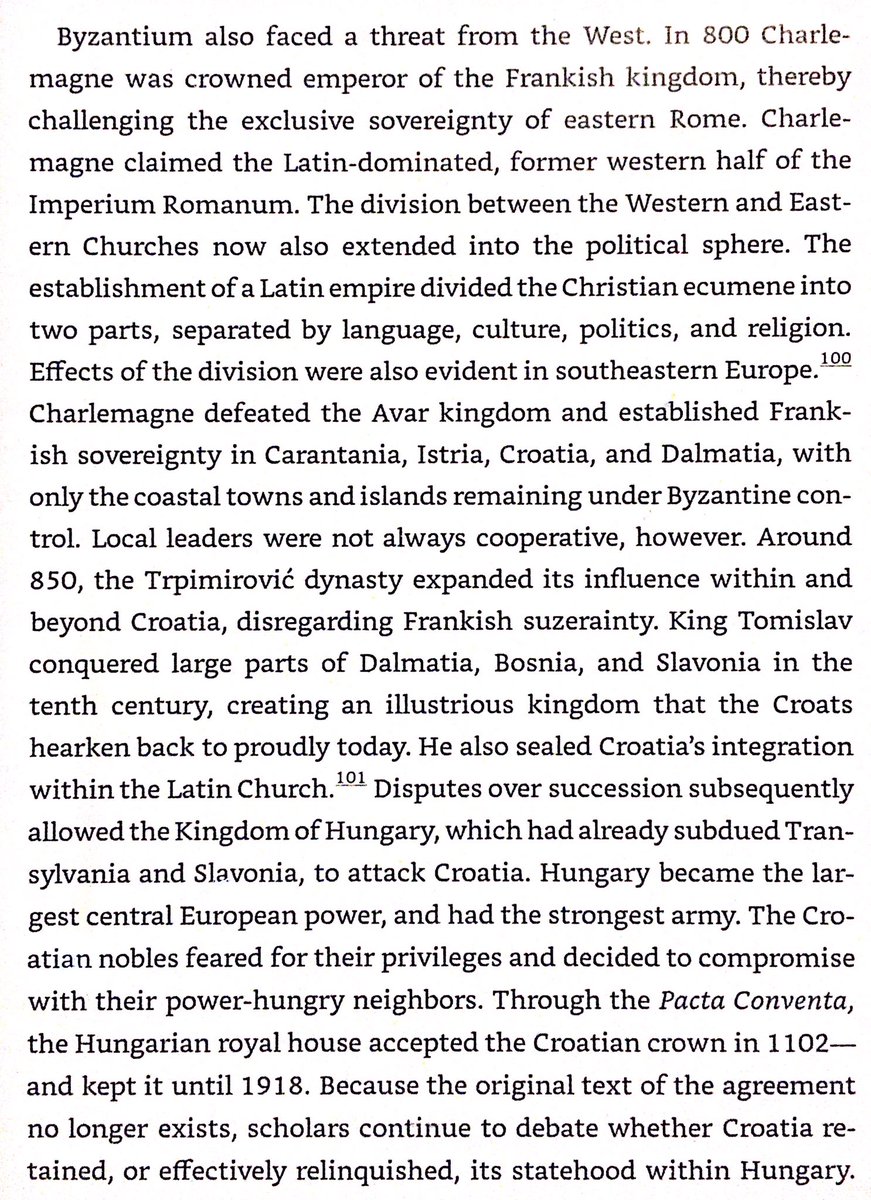
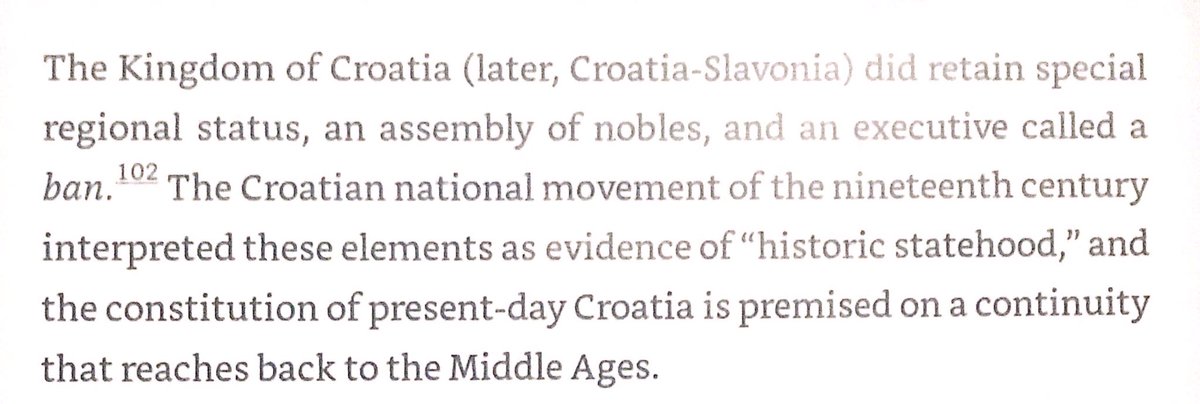
Byzantines decline & Slav growth led to Bulgarian, Bosnian, & Serb nobles abandoning the empire in 2nd half of 1100s. Nemanjic dynasty formed a Serb state in 1217, with Kosovo becoming its cultural & religious heart. They also created the Serbian Orthodox Church. 


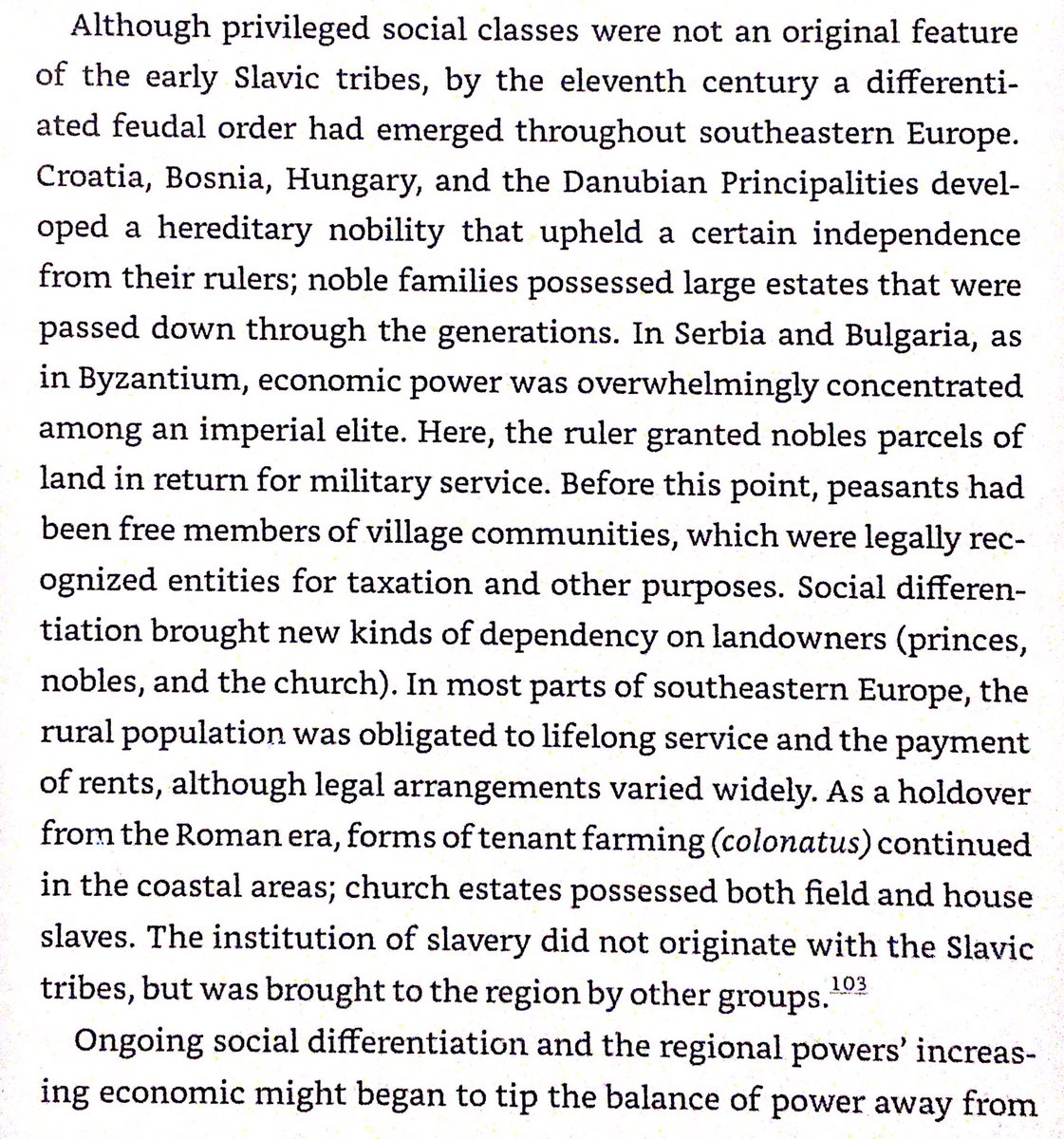
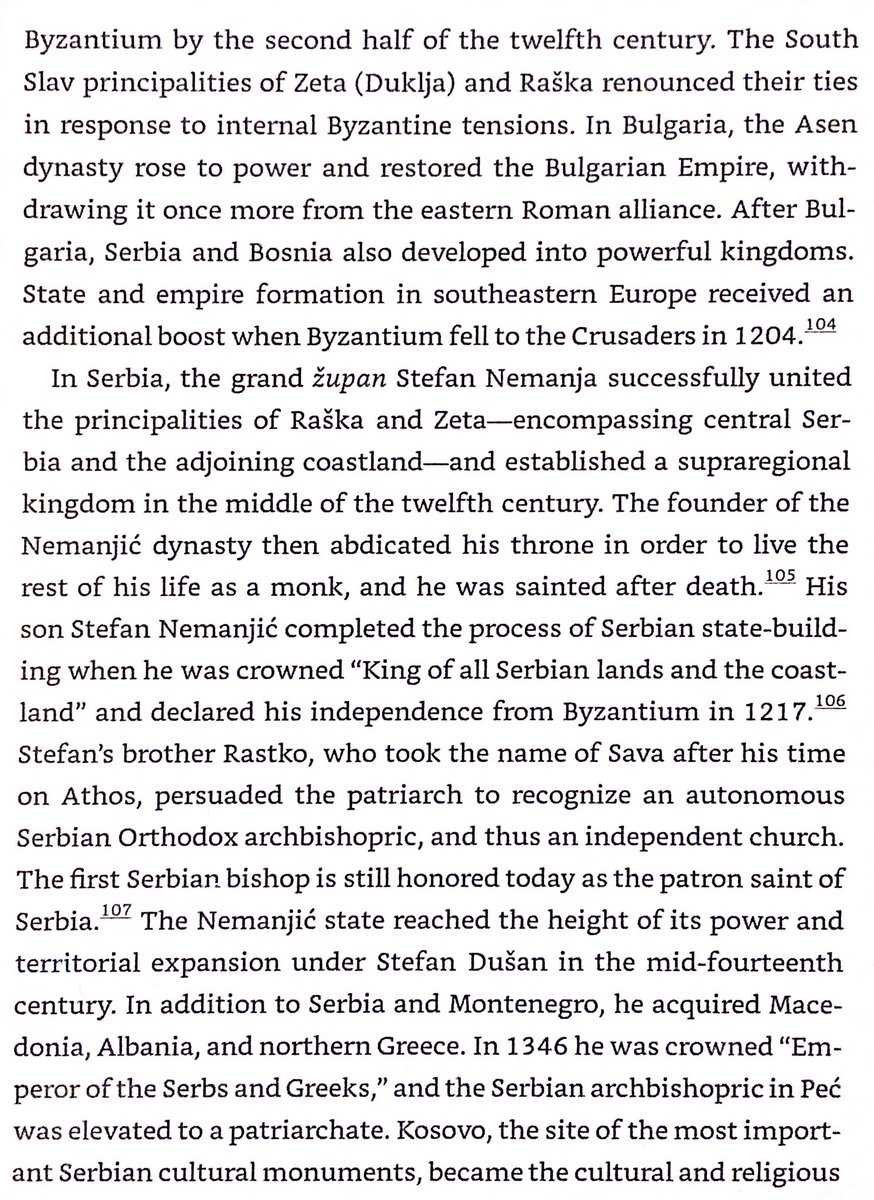
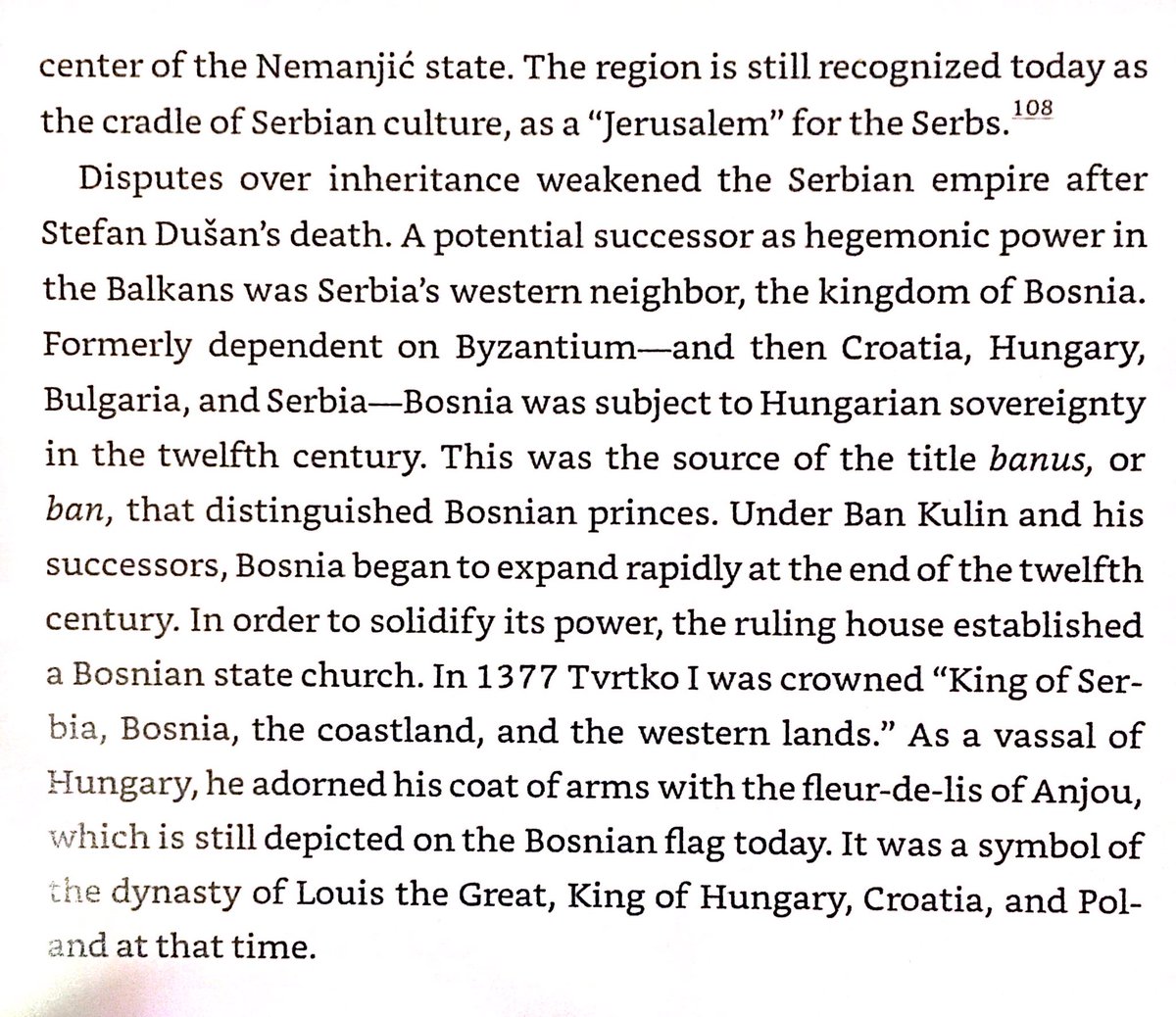
Bektashi Order & dervishes were more approachable for the Slavs than traditional Islam, so they were a major influence & conversion factor. 
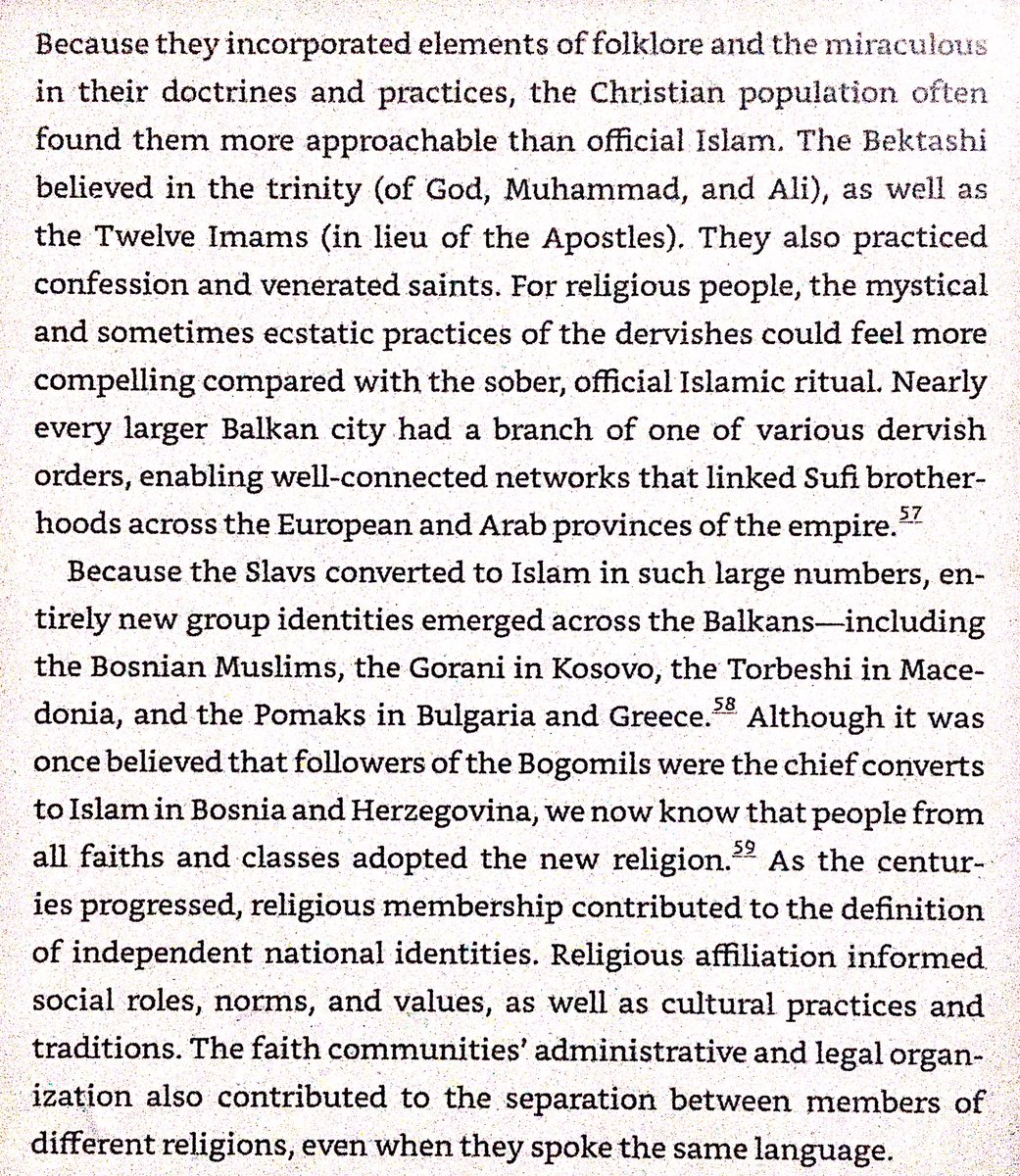
Sephardic Jews fleeing Spain, Portugal, & Italy were welcomed by Ottoman Turks & recognized as a group headed by a chief rabbi. They formed a majority of Thessaloniki’s population by 1520 & were granted a monopoly on army uniform production. 

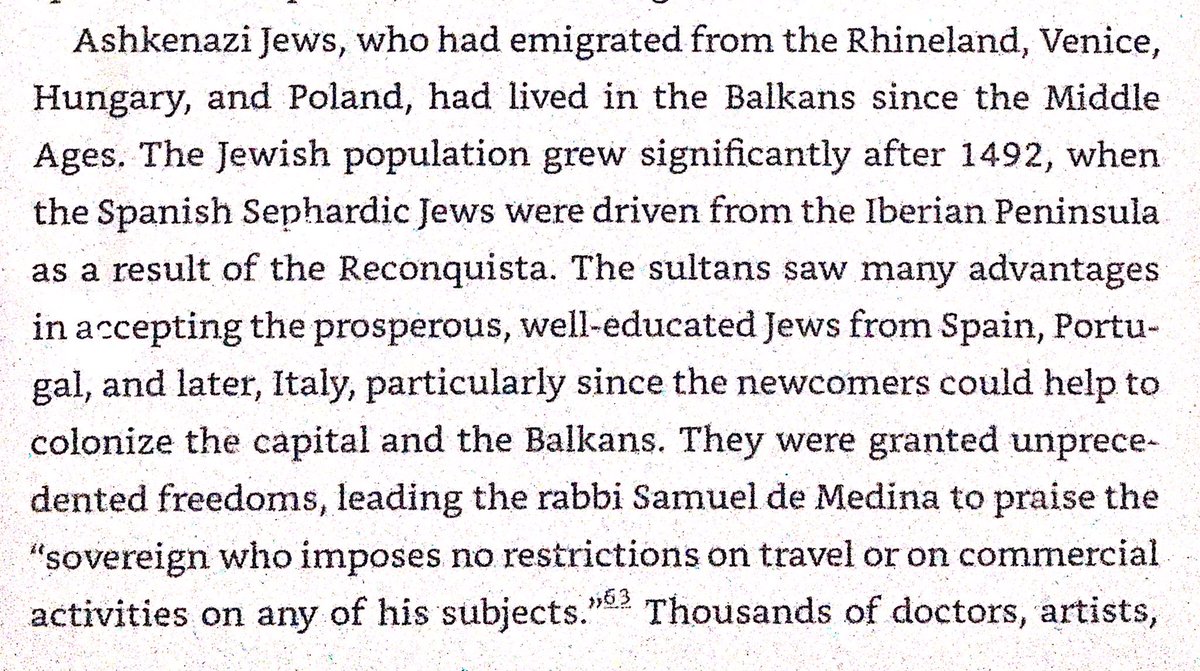

Montenegrin tribesmen were difficult for the Ottomans to control, & they eventually abandoned the region in the Great Turkish War. 
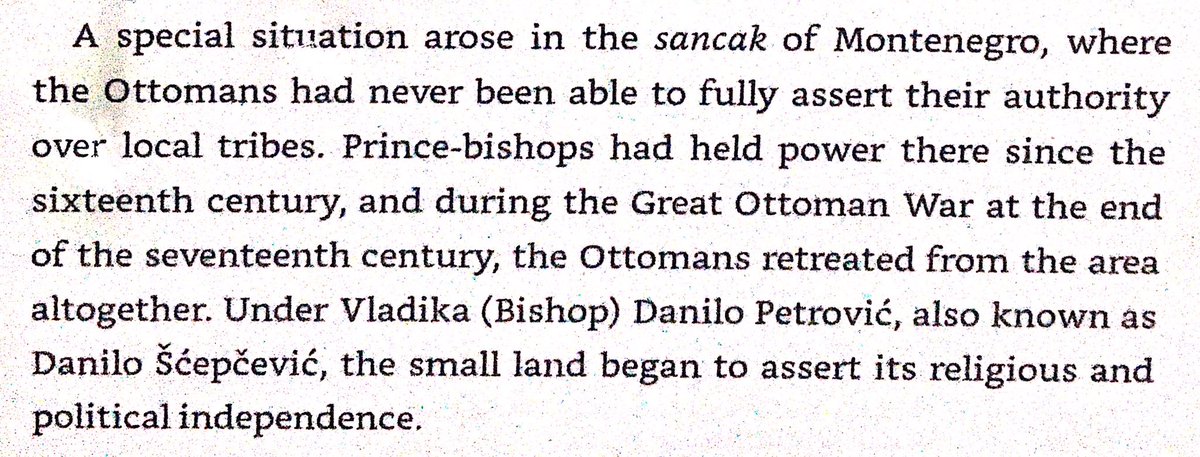
Orthodox Church’s activities were restricted, only able to maintain hierarchy & train priests. As result learning withered, & by 1600s some priests didn’t understand importance of the cross or what the 10 Commandments were. 
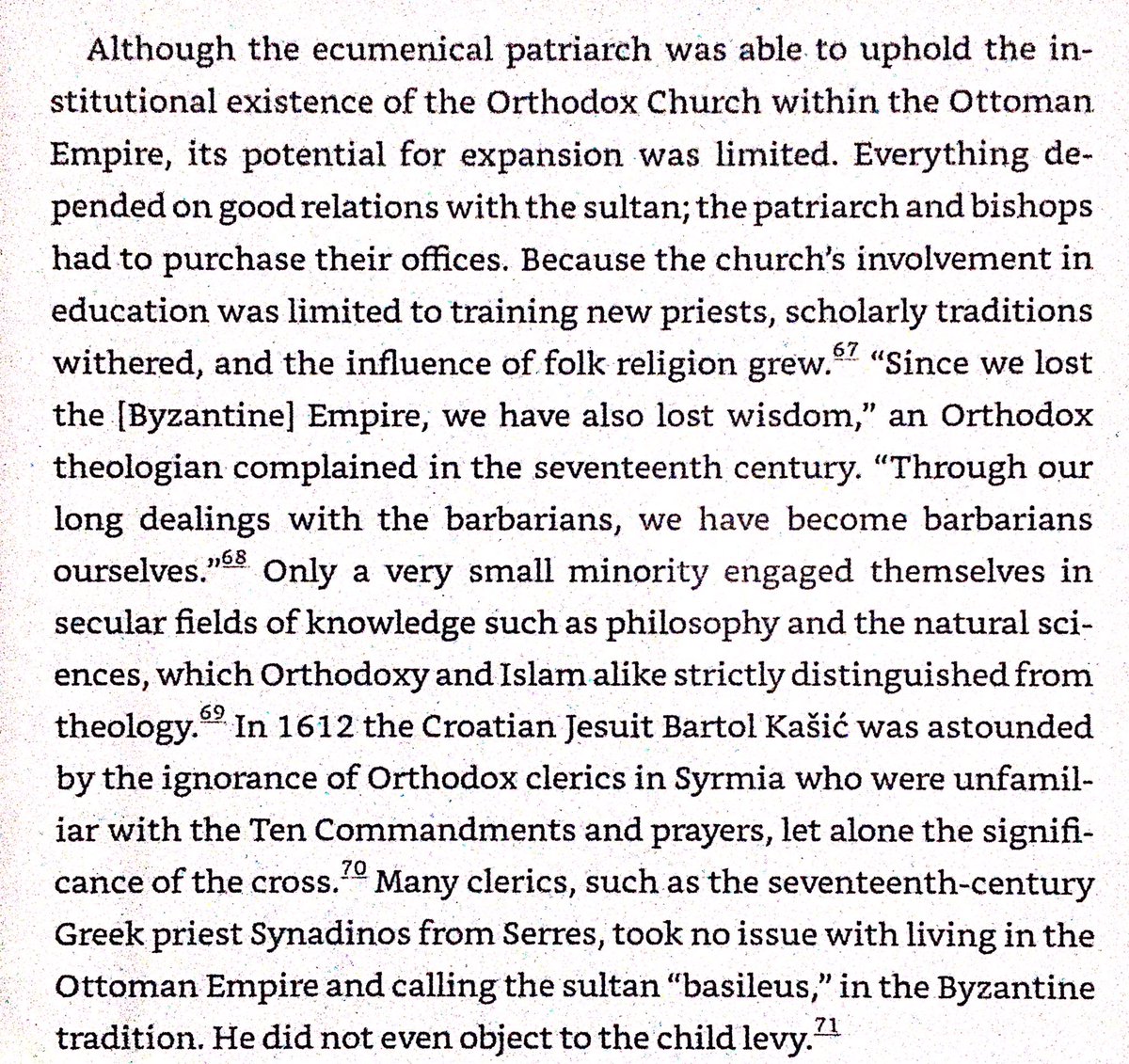
Mid-to-late 17th century were bad for Ottomans. Oceanic sea trade replaced Mediterranean & caravan trade, American crops competed with Ottoman grain. Industry underdeveloped so goods had to be imported. Landholding consolidated & masses were immiserated & de facto enserfed. 



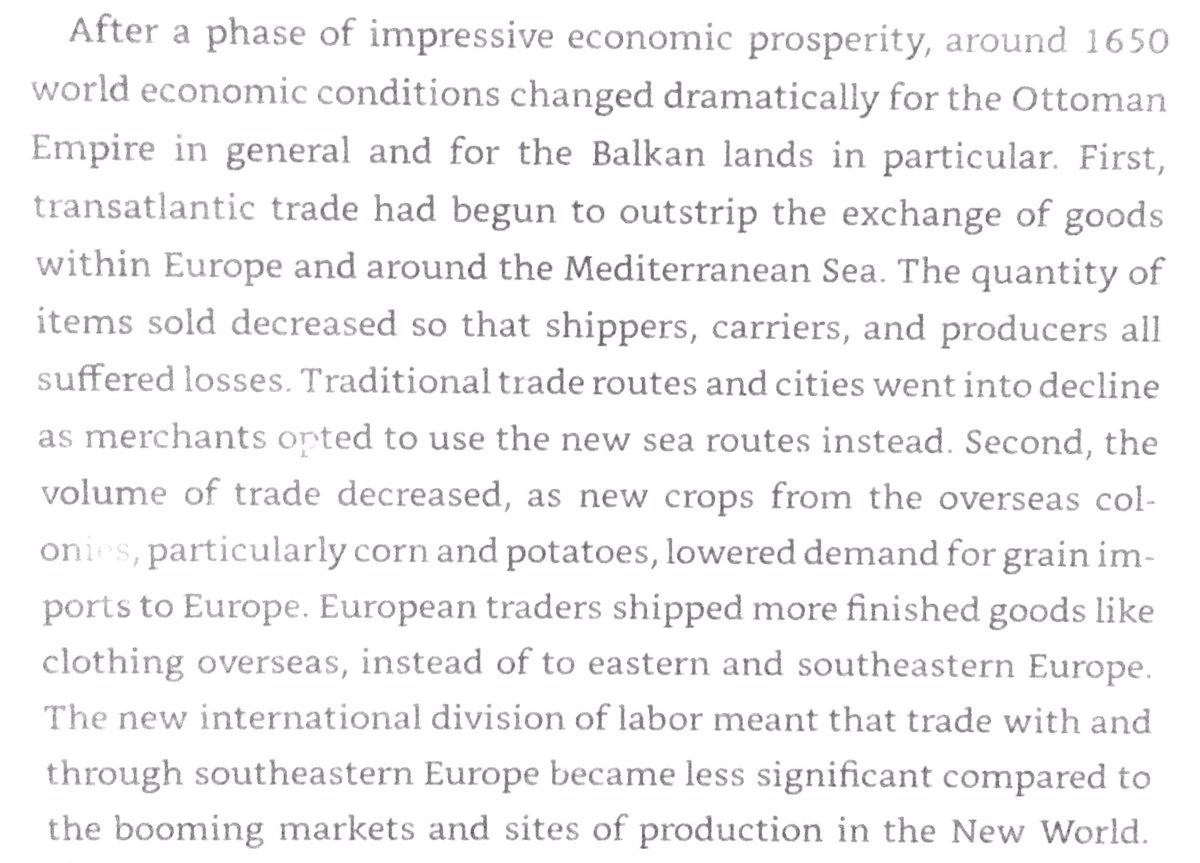
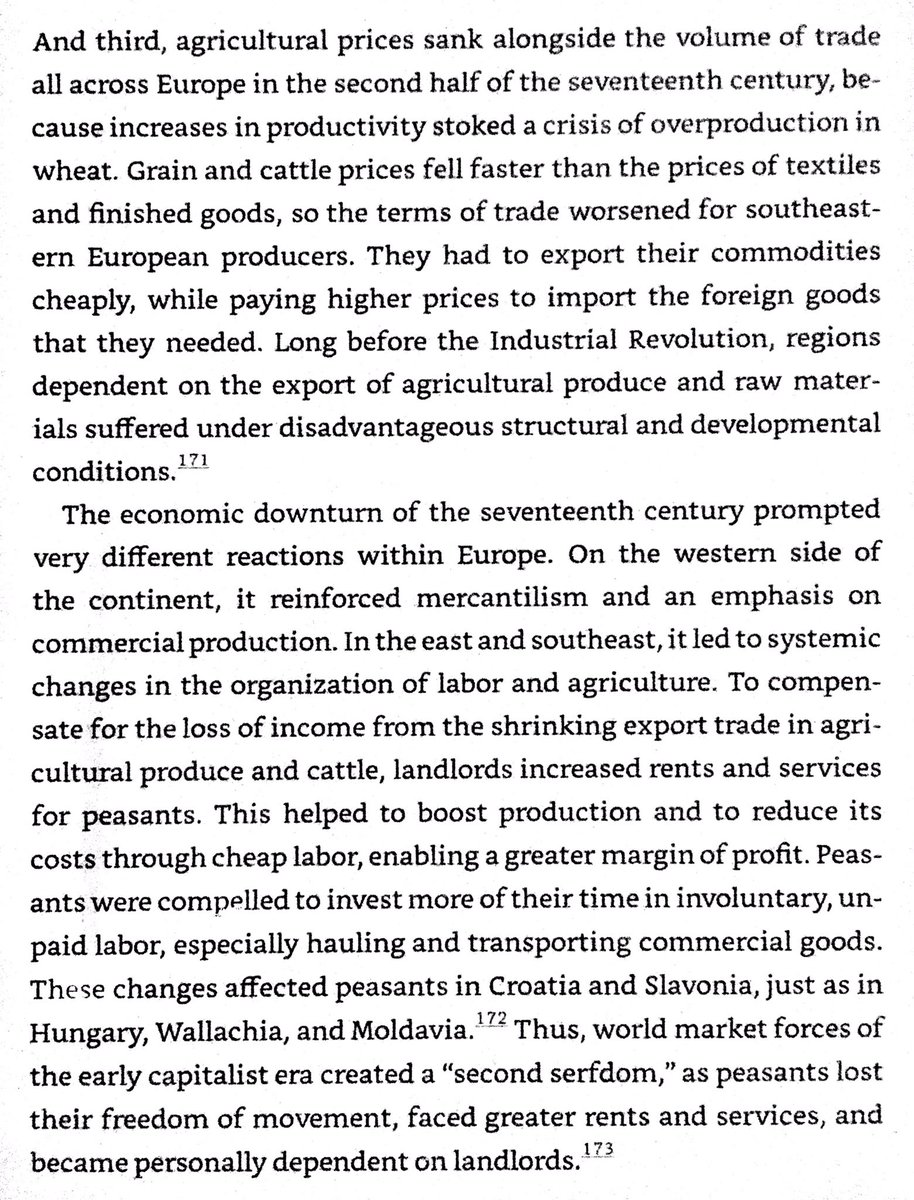
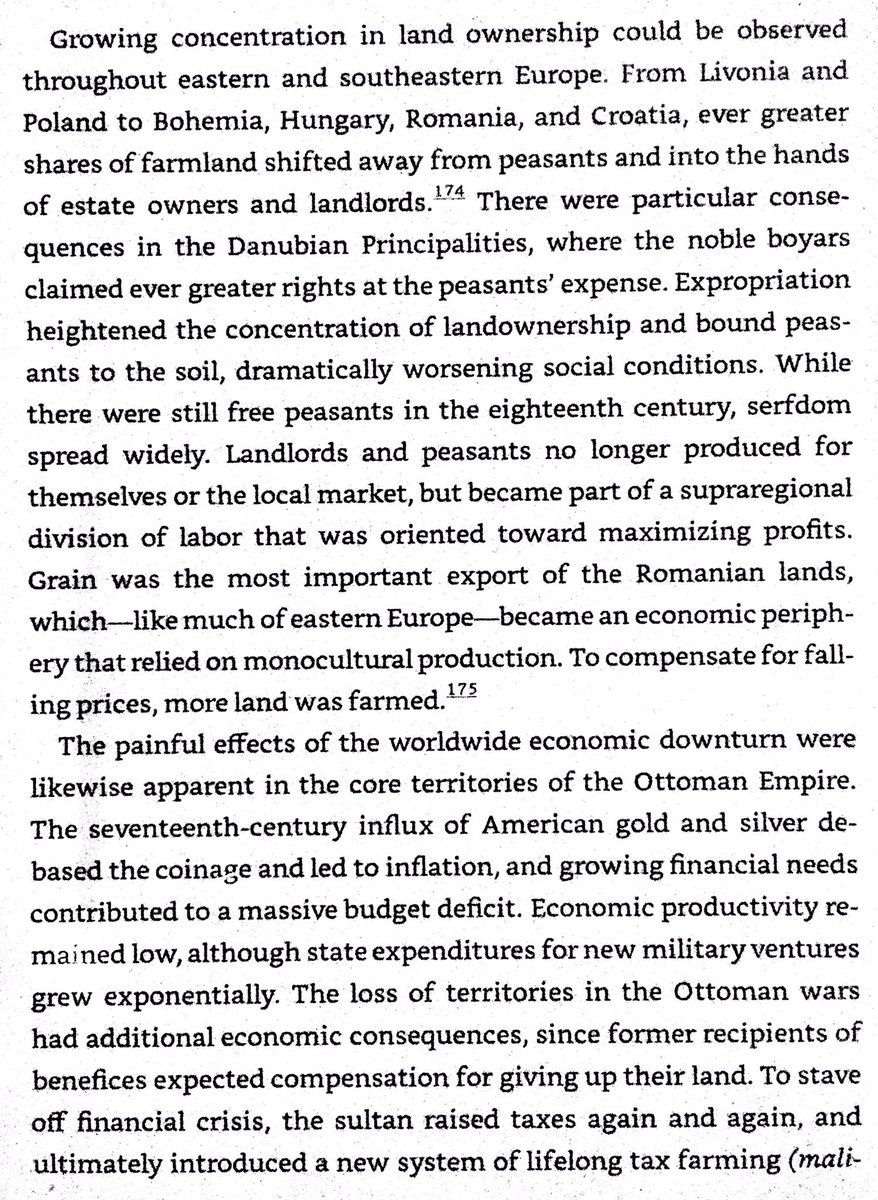
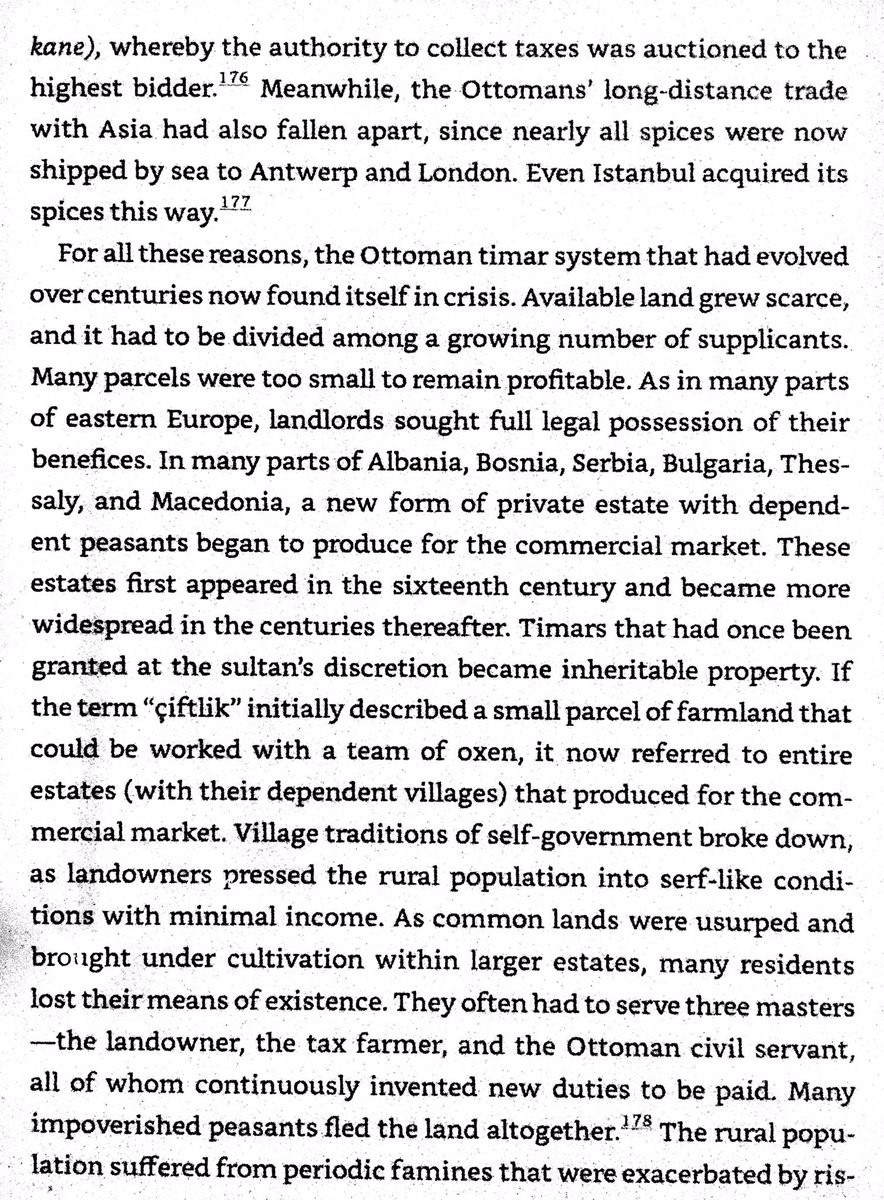
Phanariots were Greek descendants of old Byzantine families in Istanbul who became wealthy & influential with Ottomans because of trade. Sultan appointed them to rule Romanian states of Wallachia & Moldavia for over a century starting in early 1700s. 

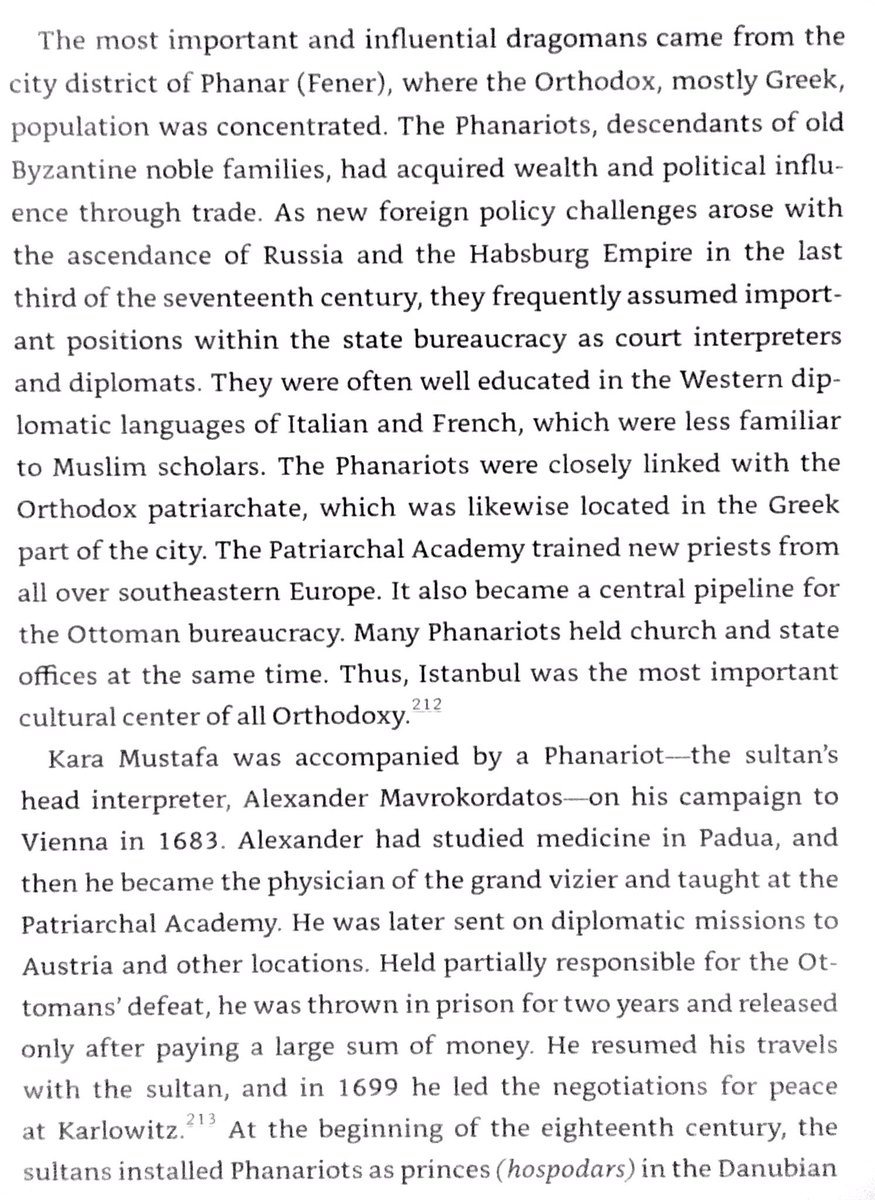
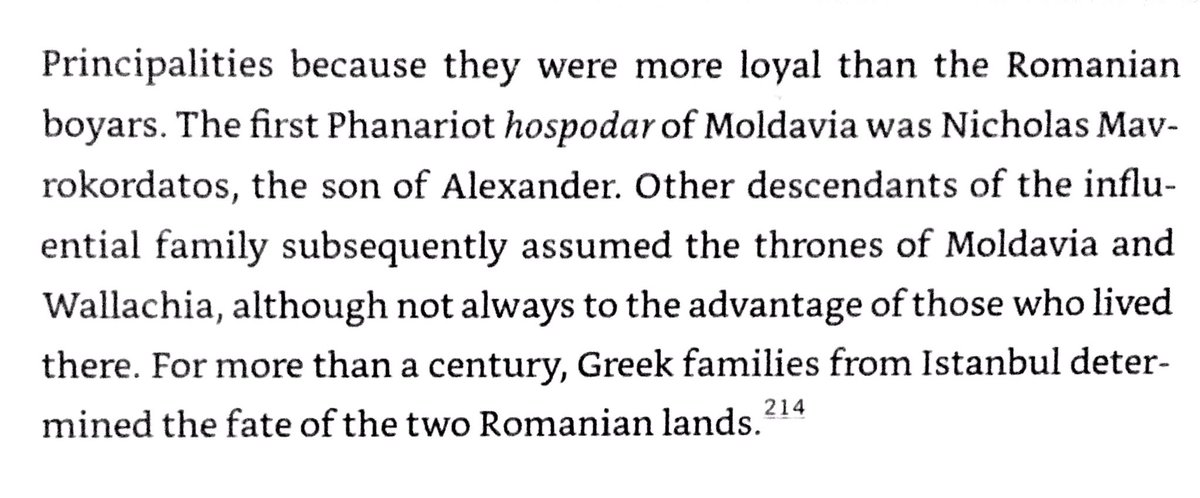
Ottoman stereotypes from two writers: Serbs as pious, Bosnians as smart, Turks as energetic, Austrians as cowardly, Hungarians as honorable, & horsemeat eaters as disgusting, & female genital mutilators (Egyptians?) as shocking. 

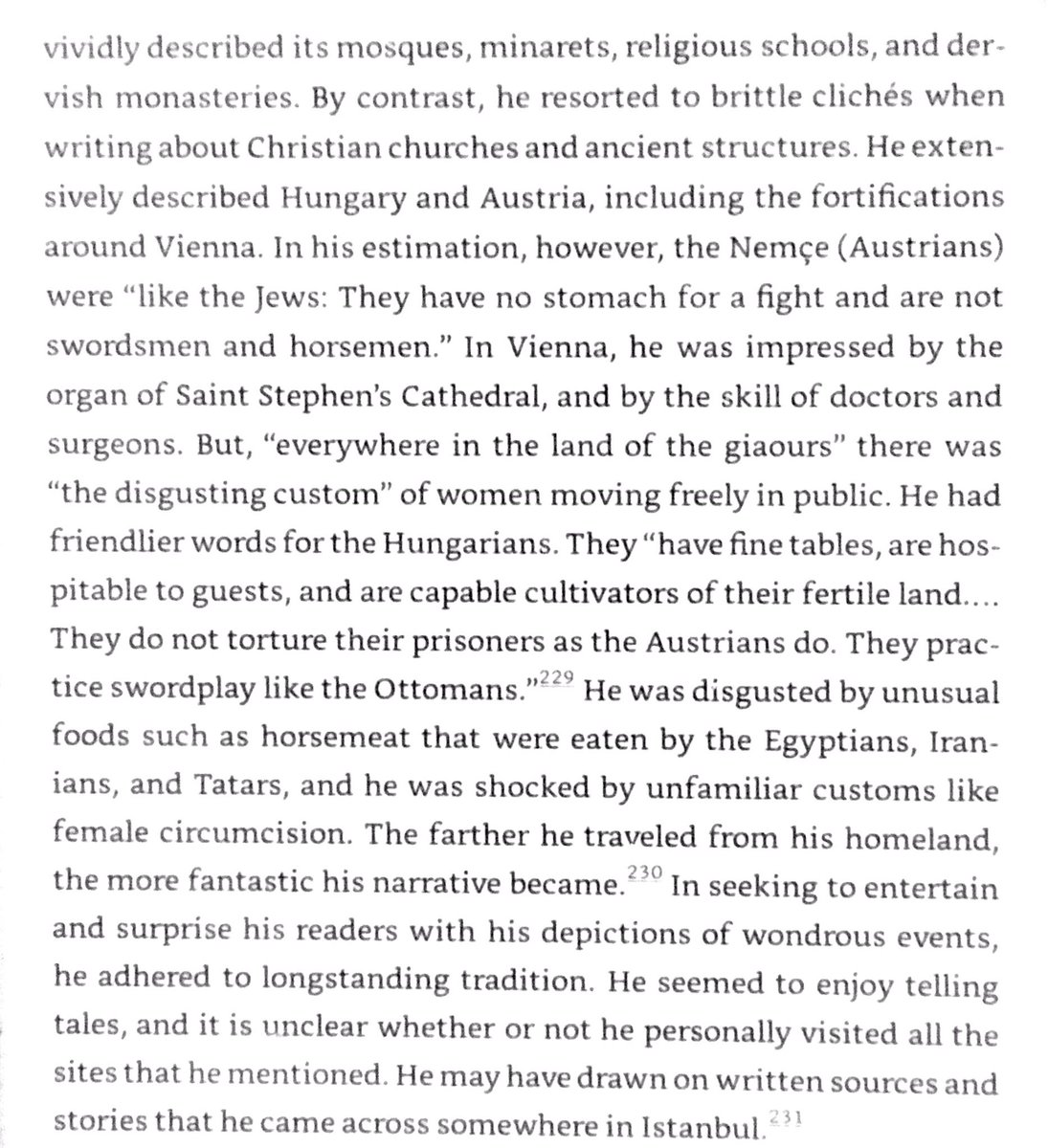
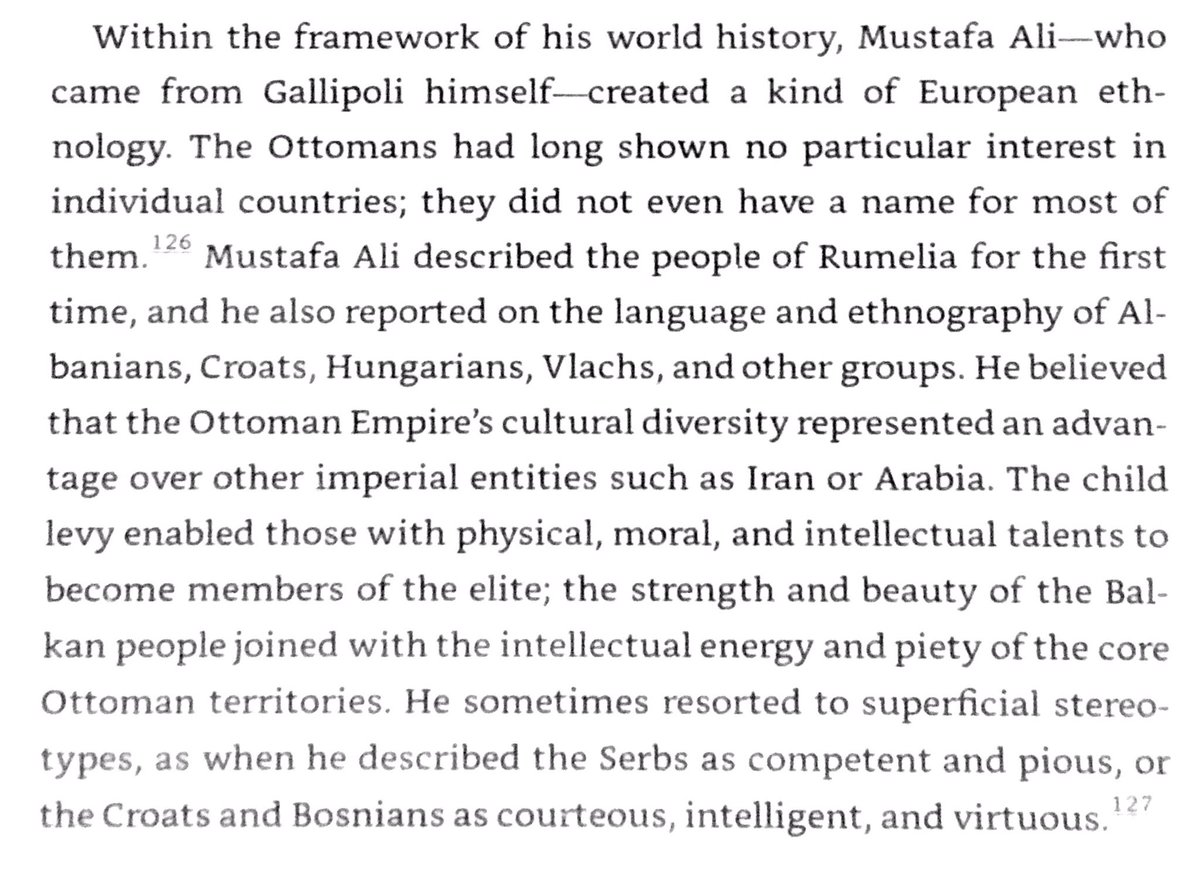
Great Turkish War 1683-1699 was brutal & ended with Hungary, Transylvania, & Slavonia conquered by Austria. Moslems fled south into Ottoman territory, & Serbs & Romanians moved north into Austrian territory. Albanians may have moved into Kosovo then, taking abandoned lands. 

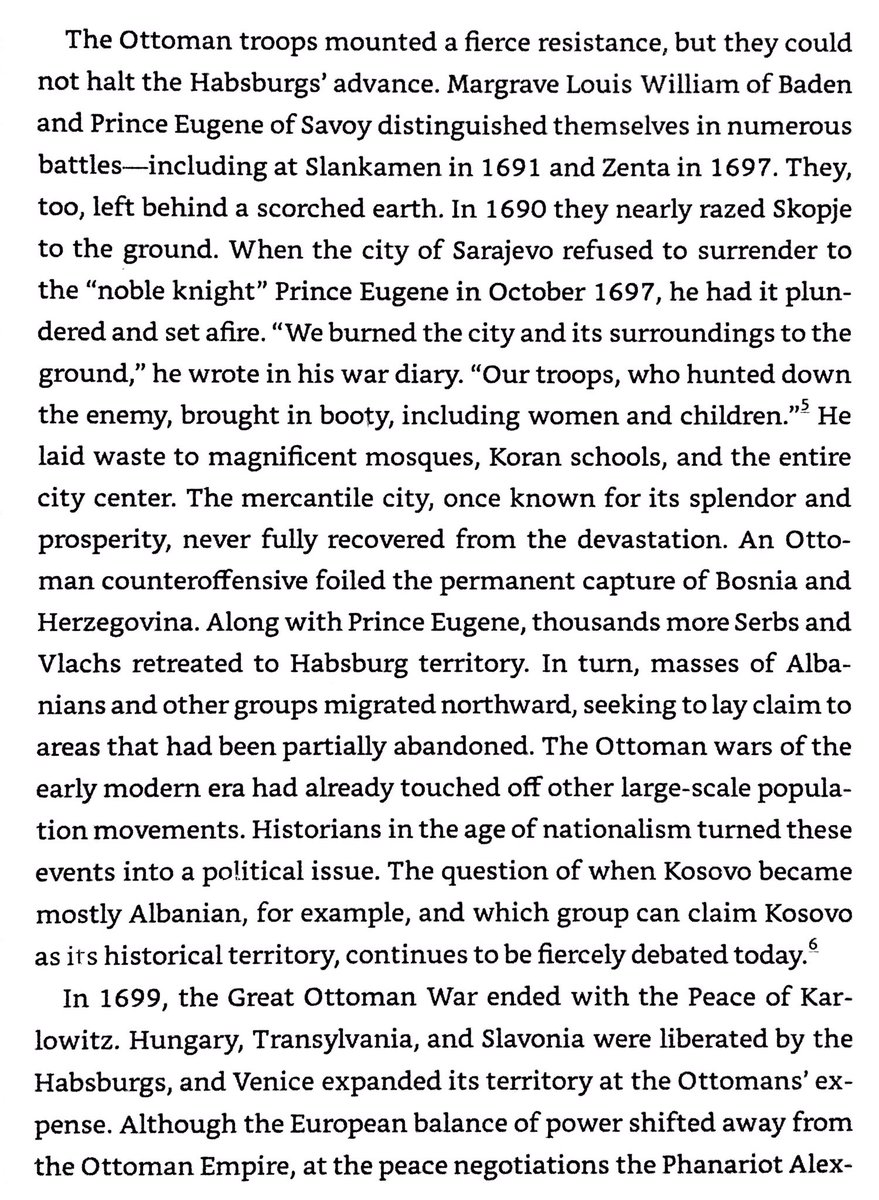
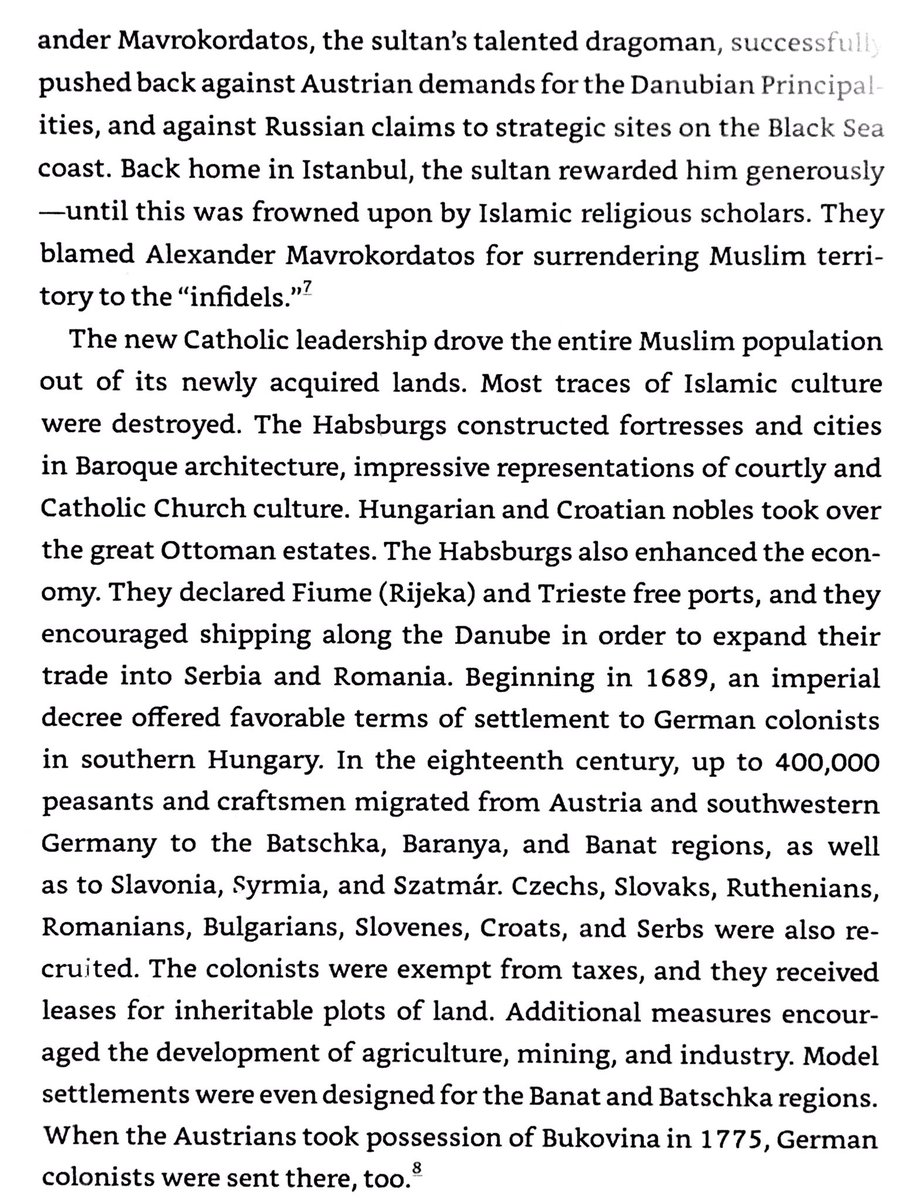
Borders of Croatia are result of Austria-Ottoman wars in 1700s. In 1745 Croatian nobles declared the “Triune Kingdom of Croatia, Dalmatia, & Slavonia” within Hungary, even though they didn’t control large parts. 
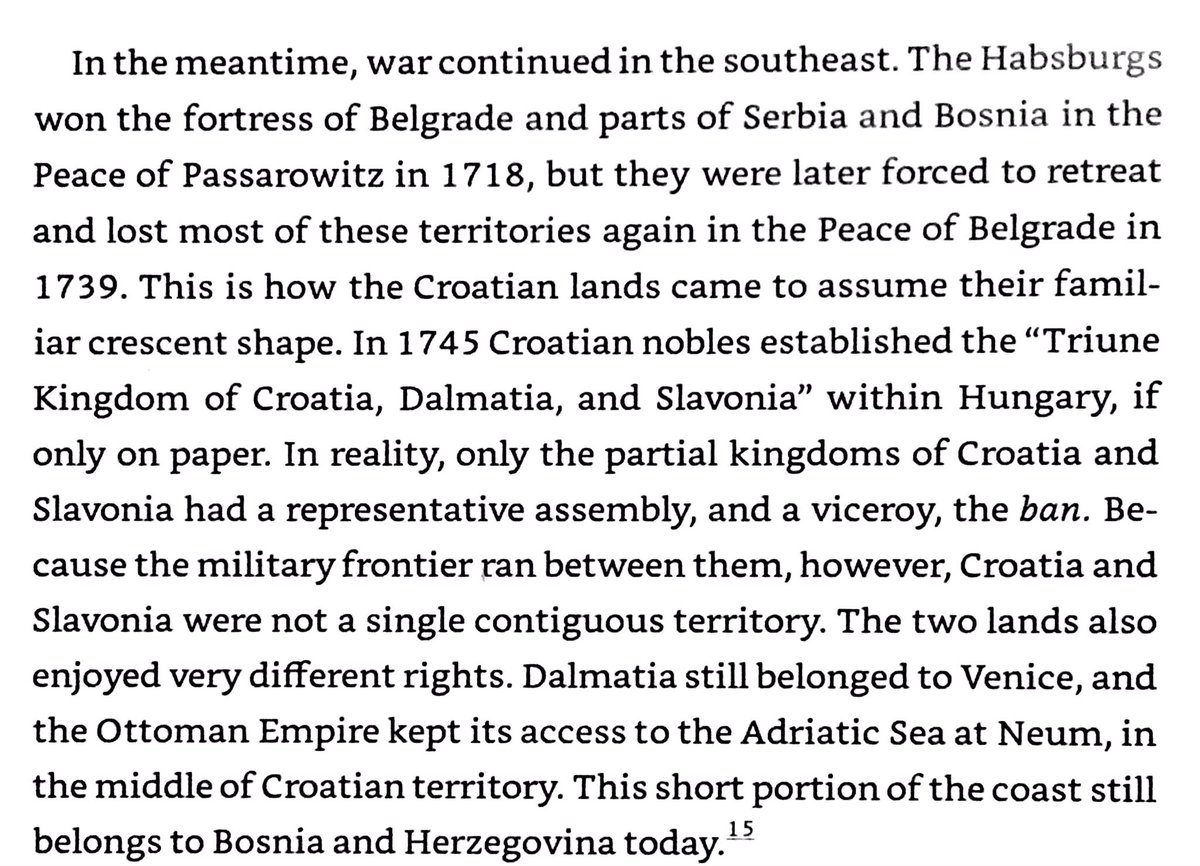
Some pan-Christian & nationalist figures in early 18th century Balkans supported Russia as a possible savior from the Ottomans. One was Moldavian Prince Cantemir, who revolted against Ottomans & joined Peter the Great in his failed campaign against them. 



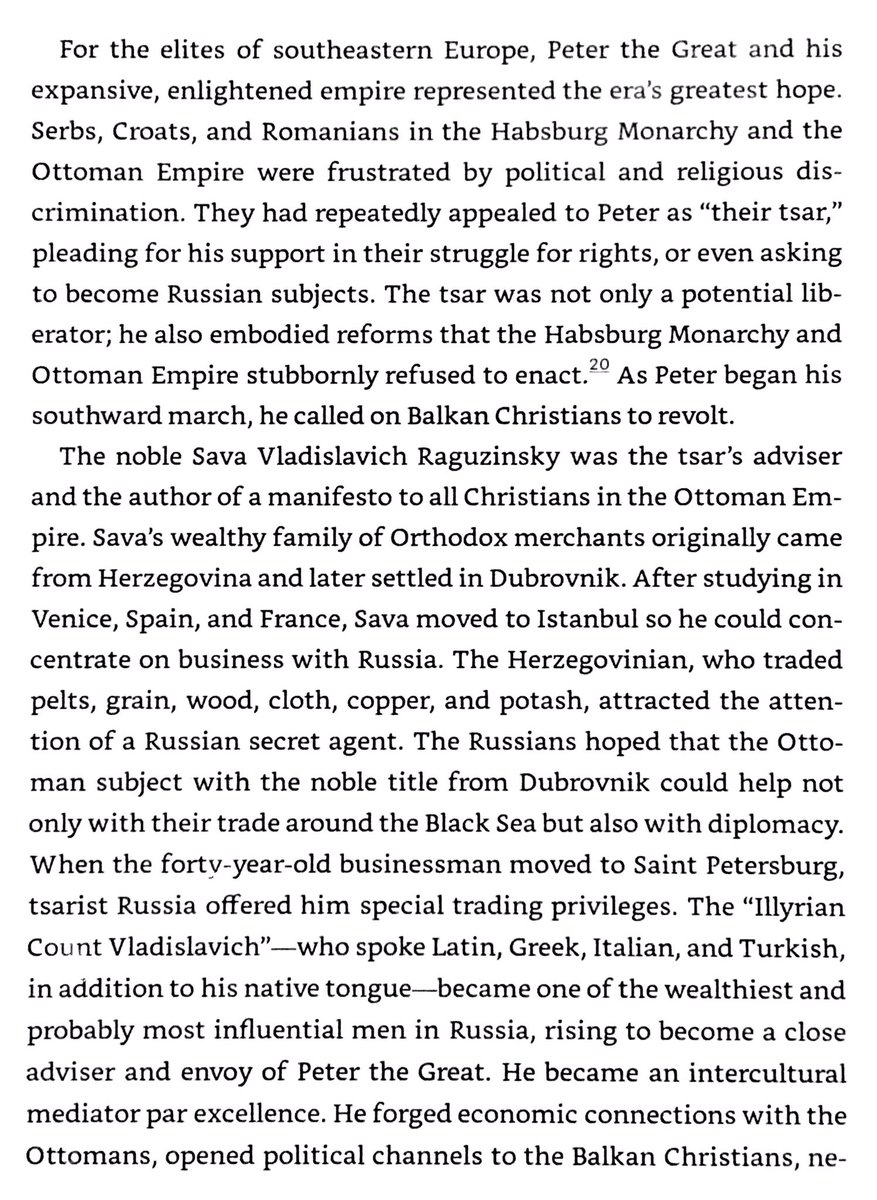
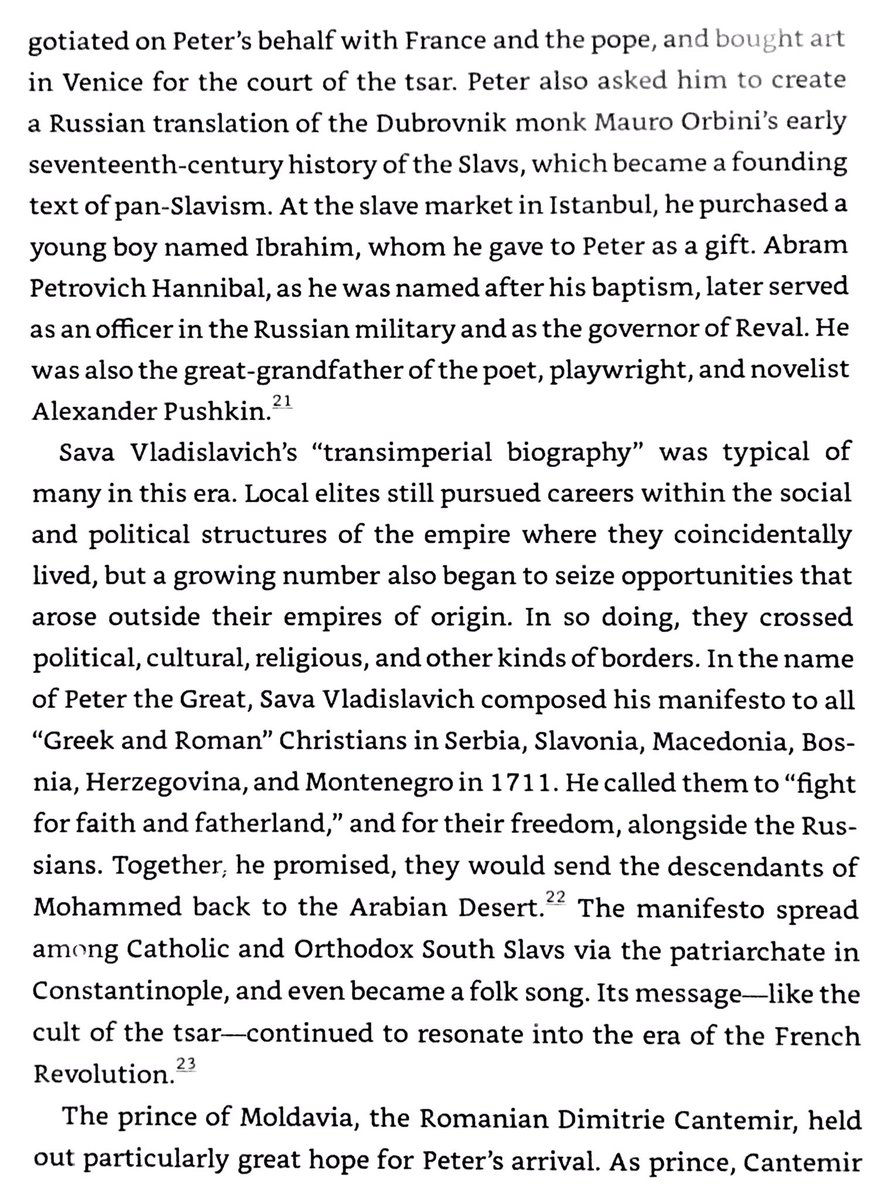
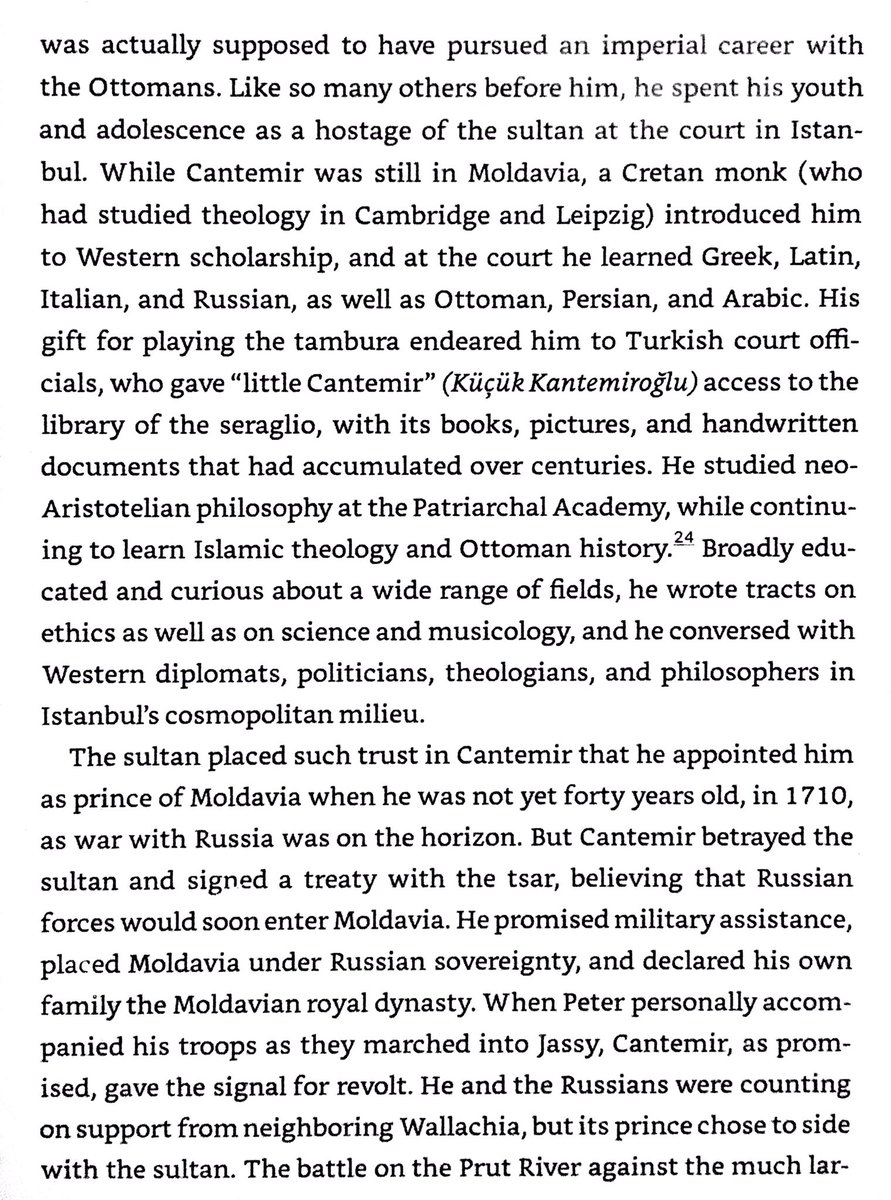
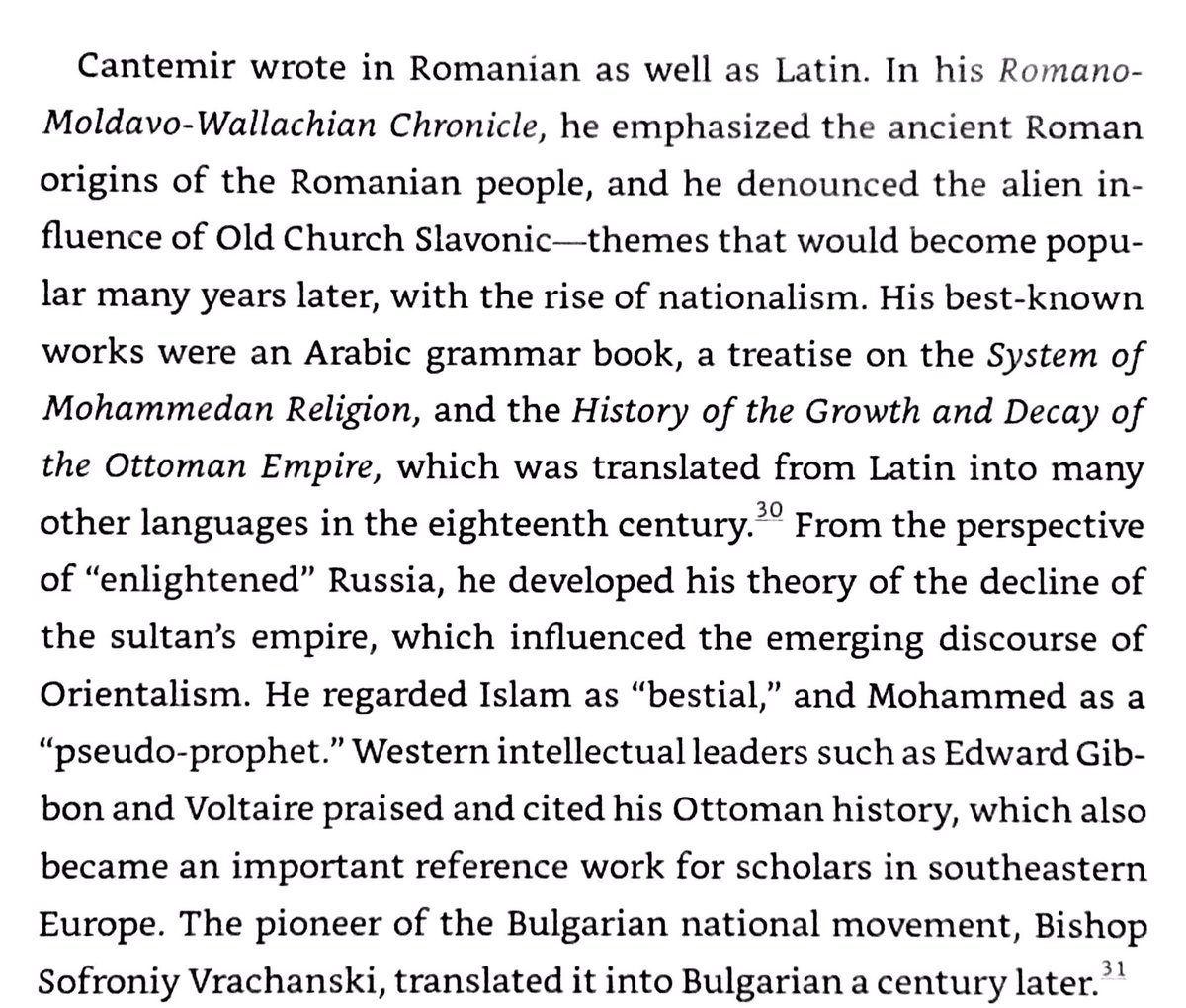
Italian priest published popular book in 1770s on people of Dalmatia. It included a chapter describing the mixed Romanian-Slavic Morlachs as noble savages. While Croats were unhappy with the description, they were aware Dalmatia was underdeveloped. 



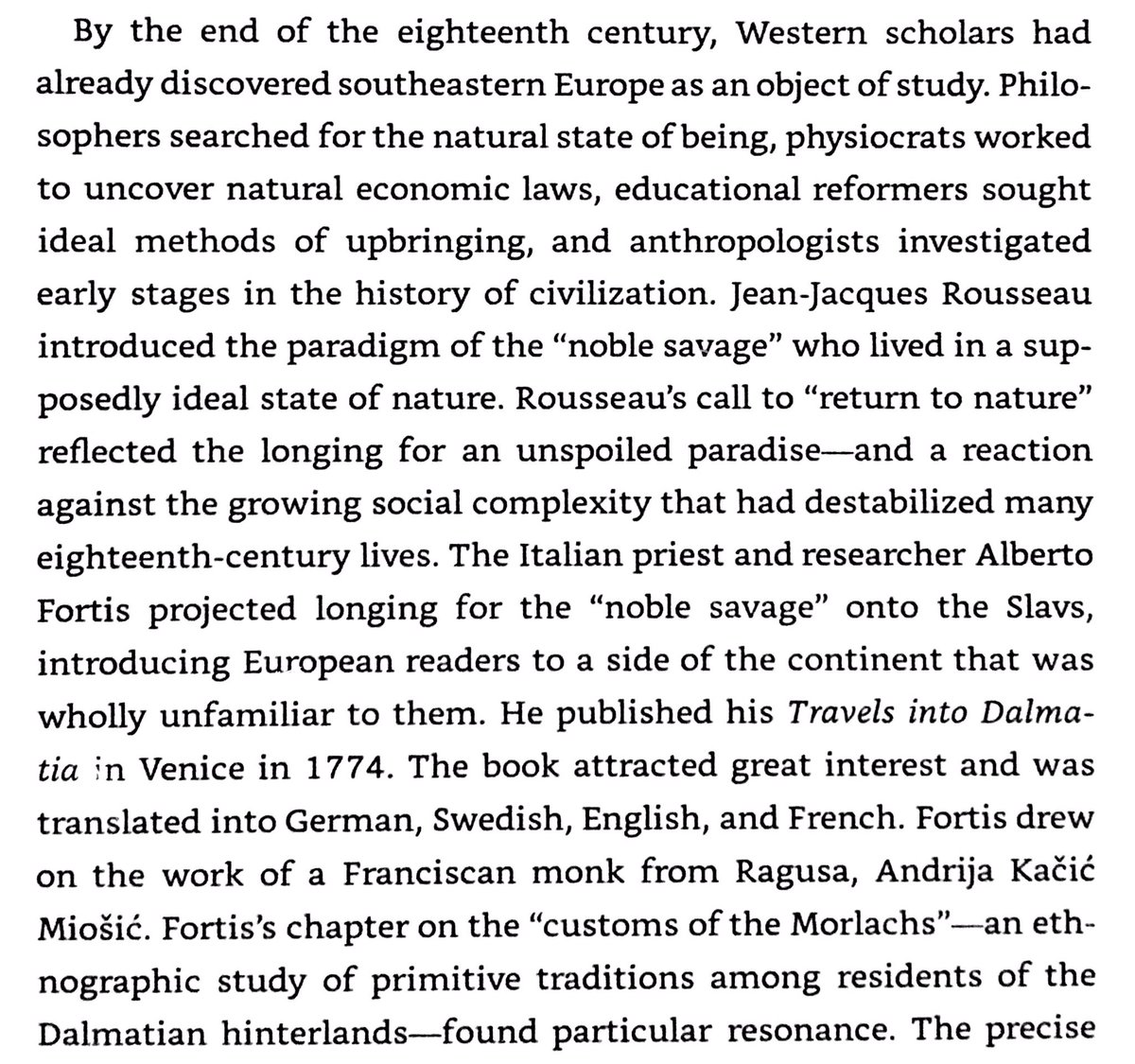
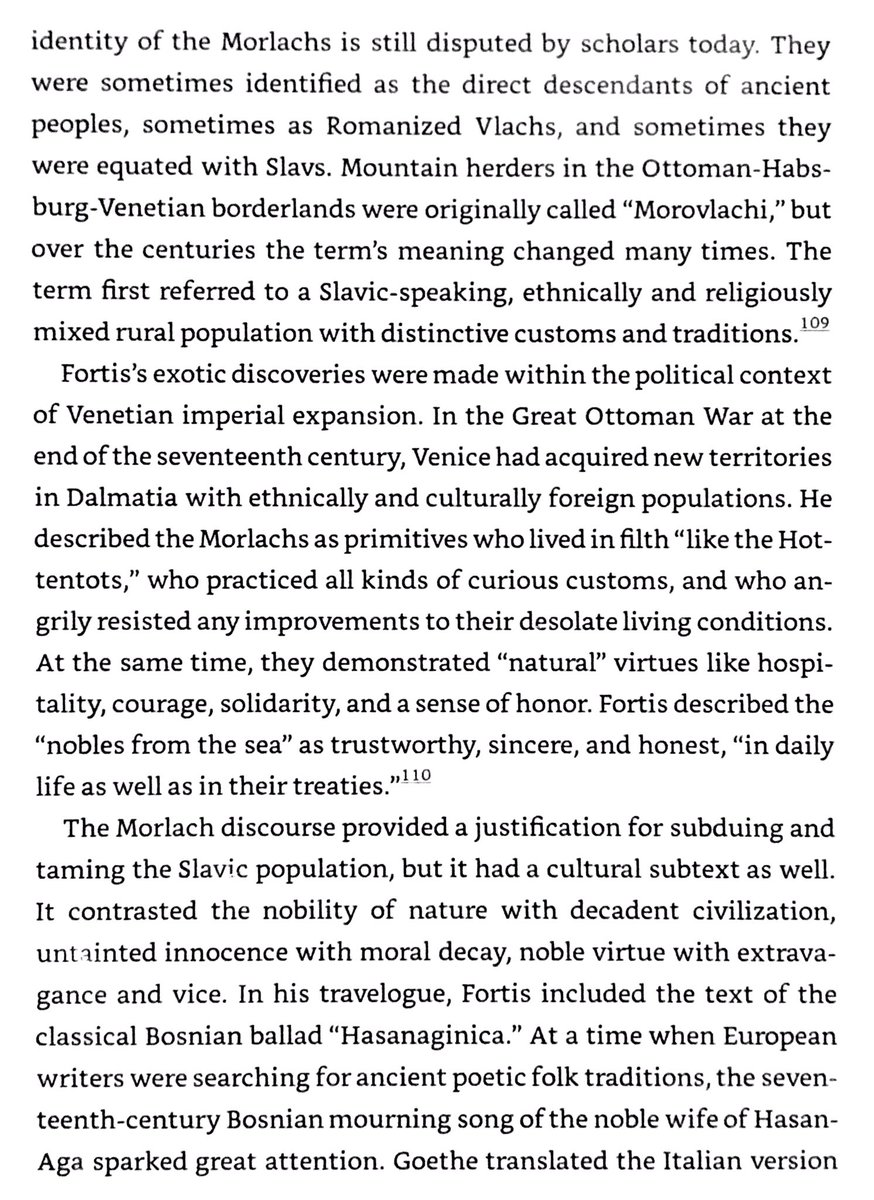
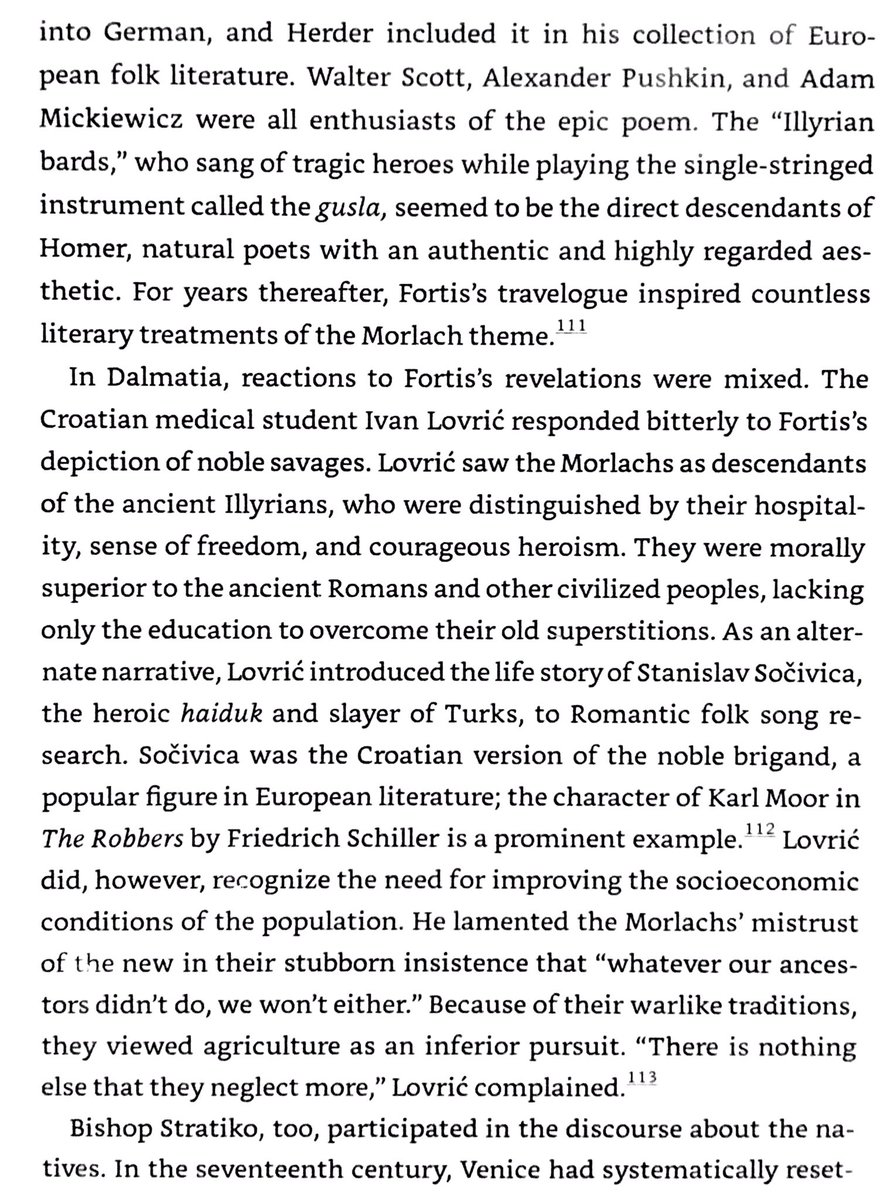
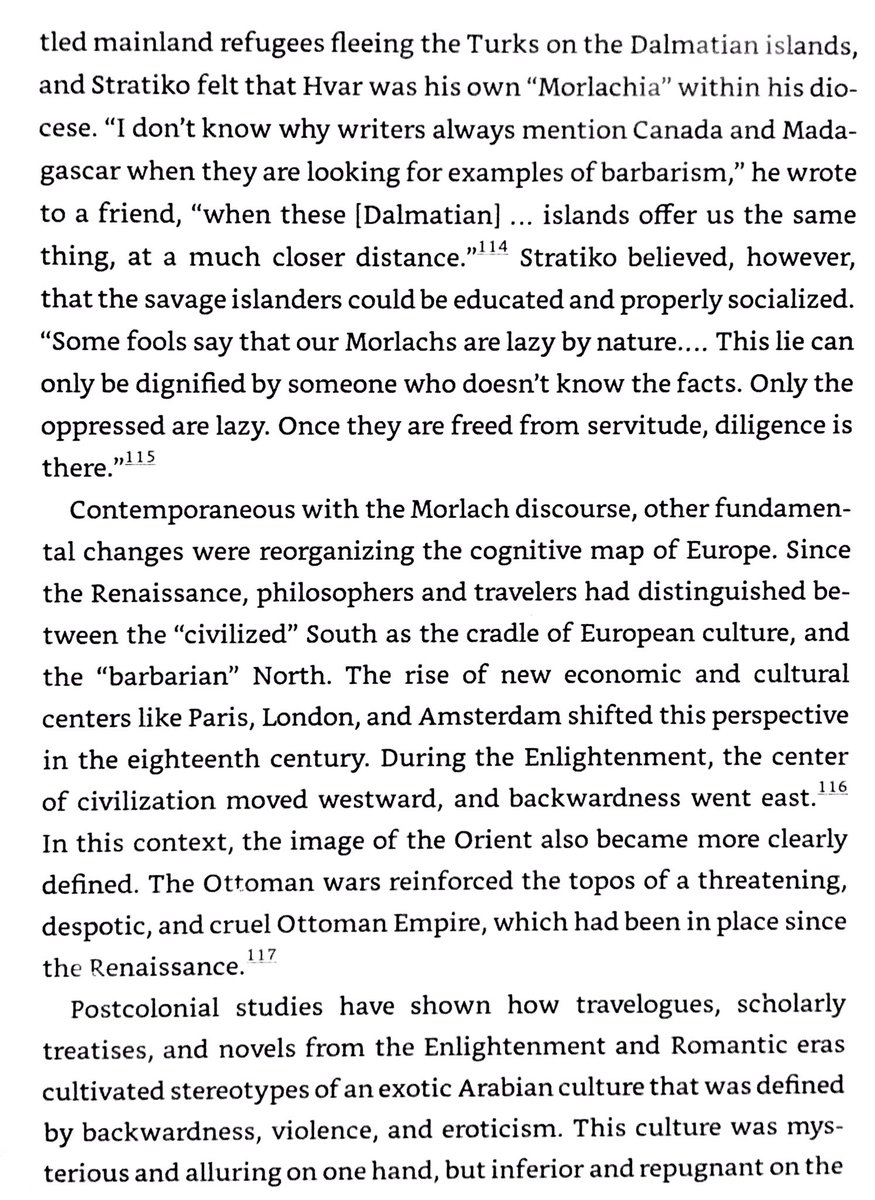
Decline of Ottoman institutions in 1700s - tax farming, unaccountable local elites, corruption, & immiseration of peasantry from commercial consolidation of land ownership. Autonomous magnates took power in Anatolia, Egypt, Syria, & Rumelia. 





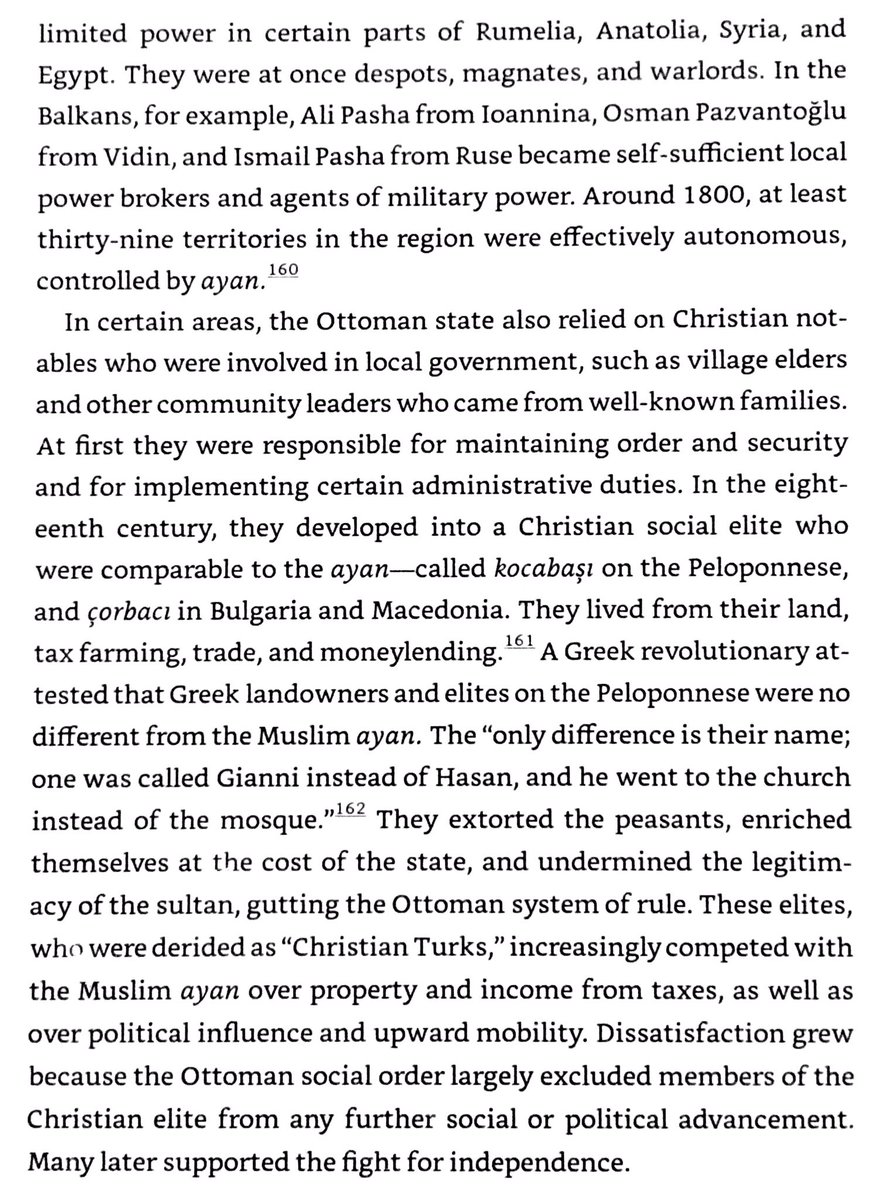
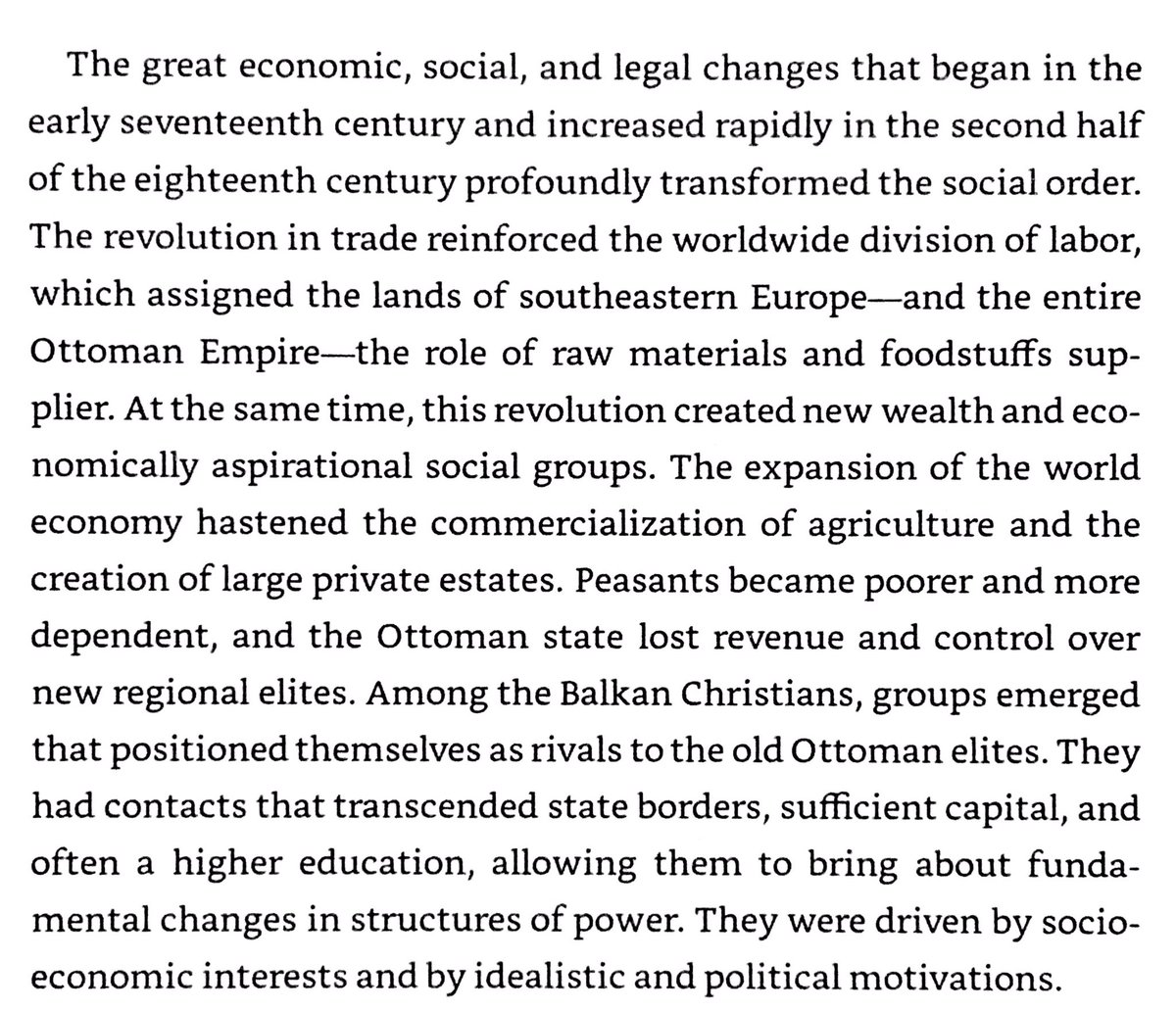
French & American revolutions influenced Balkans. Some Greeks supported Napoleon for his liberal ideas, & hoped to create a multinational republic in Balkans & western Anatolia. One Greek corresponded with Jefferson, who advised a centralized rather than federal government. 




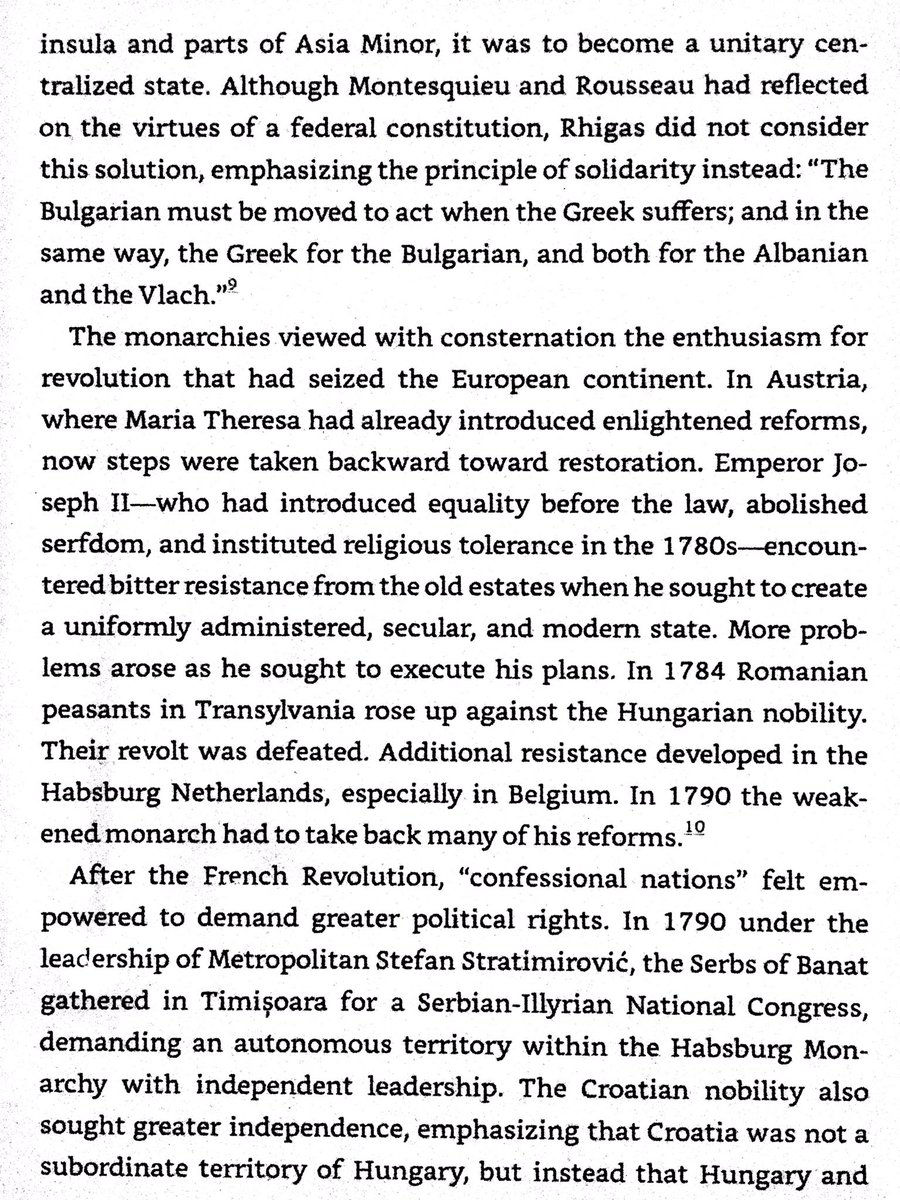
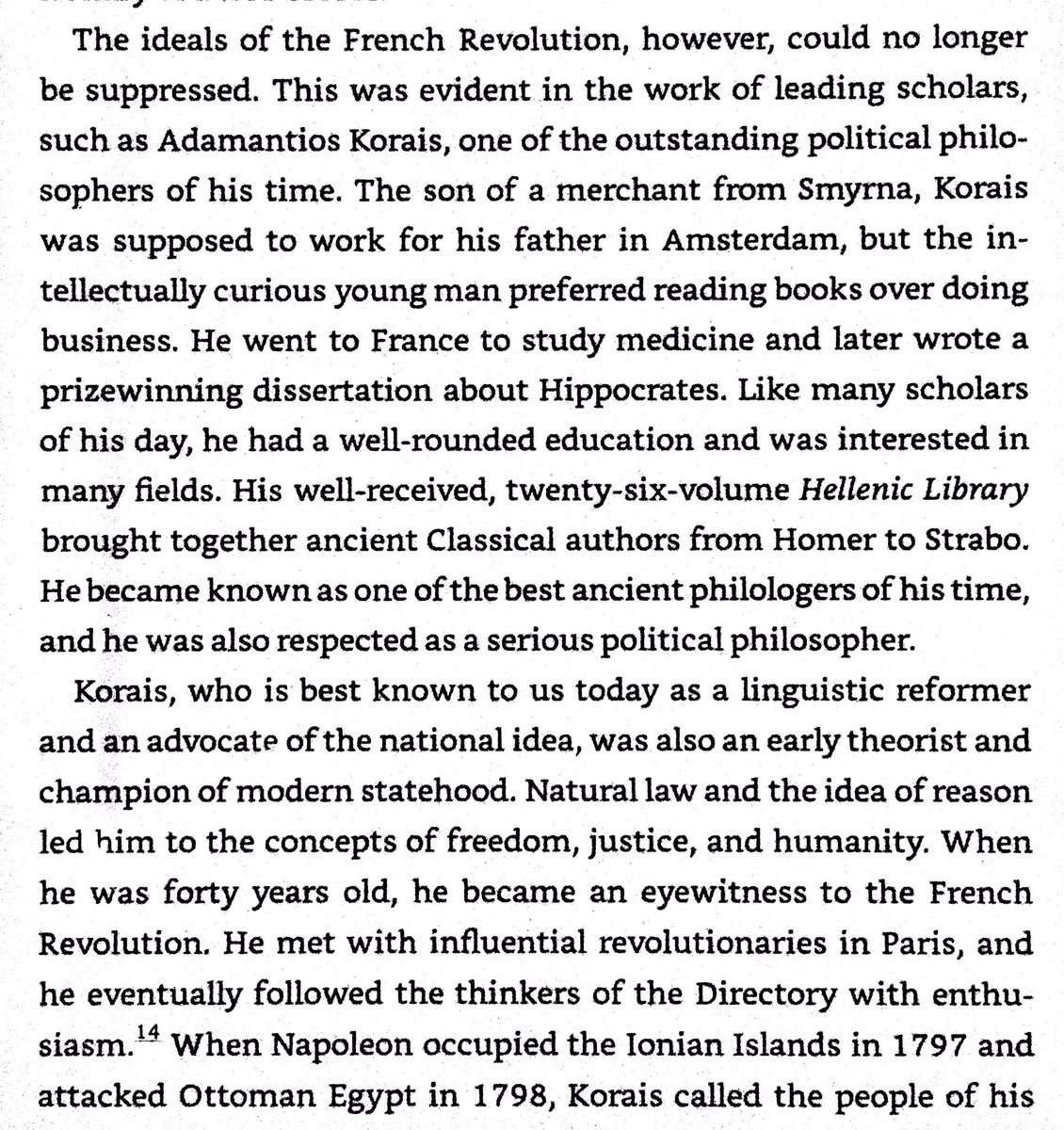
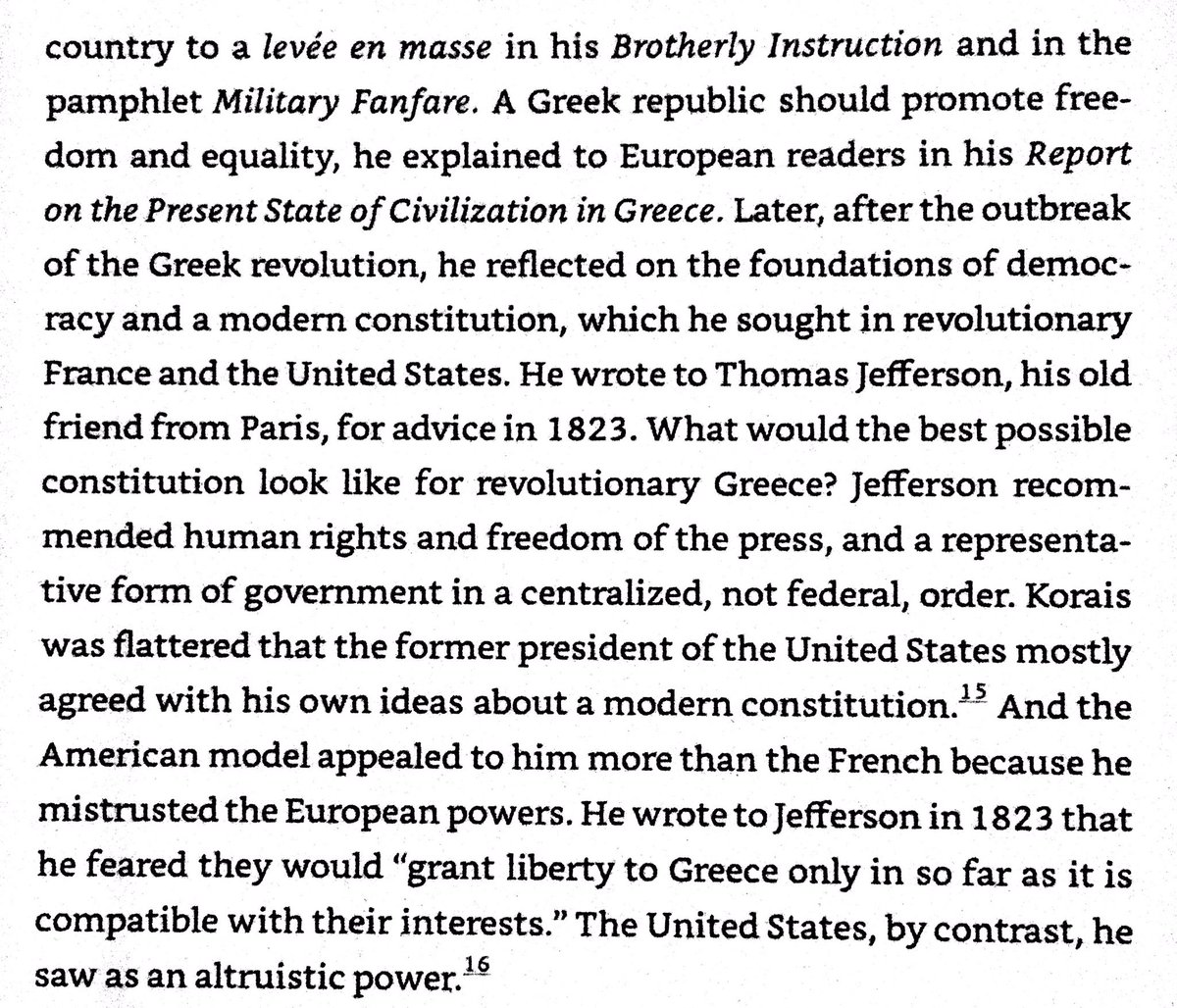
Renegade Janissaries overthrew Belgrade governor in 1801 & ruled tyrannically. Djordje Petrovic aka Karadjordje led Serb rebellion against them in 1804, turning into it into an independence war in 1805. Ottomans crushed the Serb rebels in 1813. 



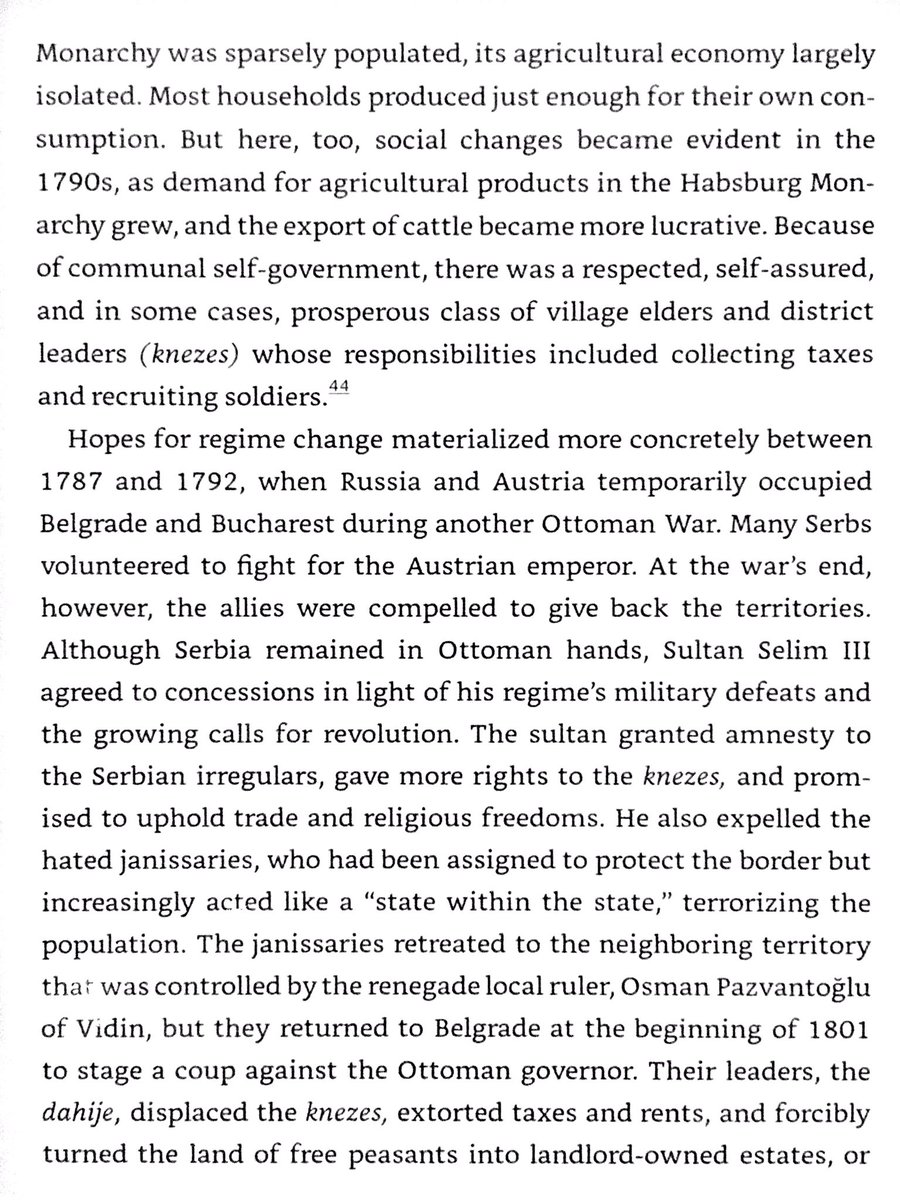

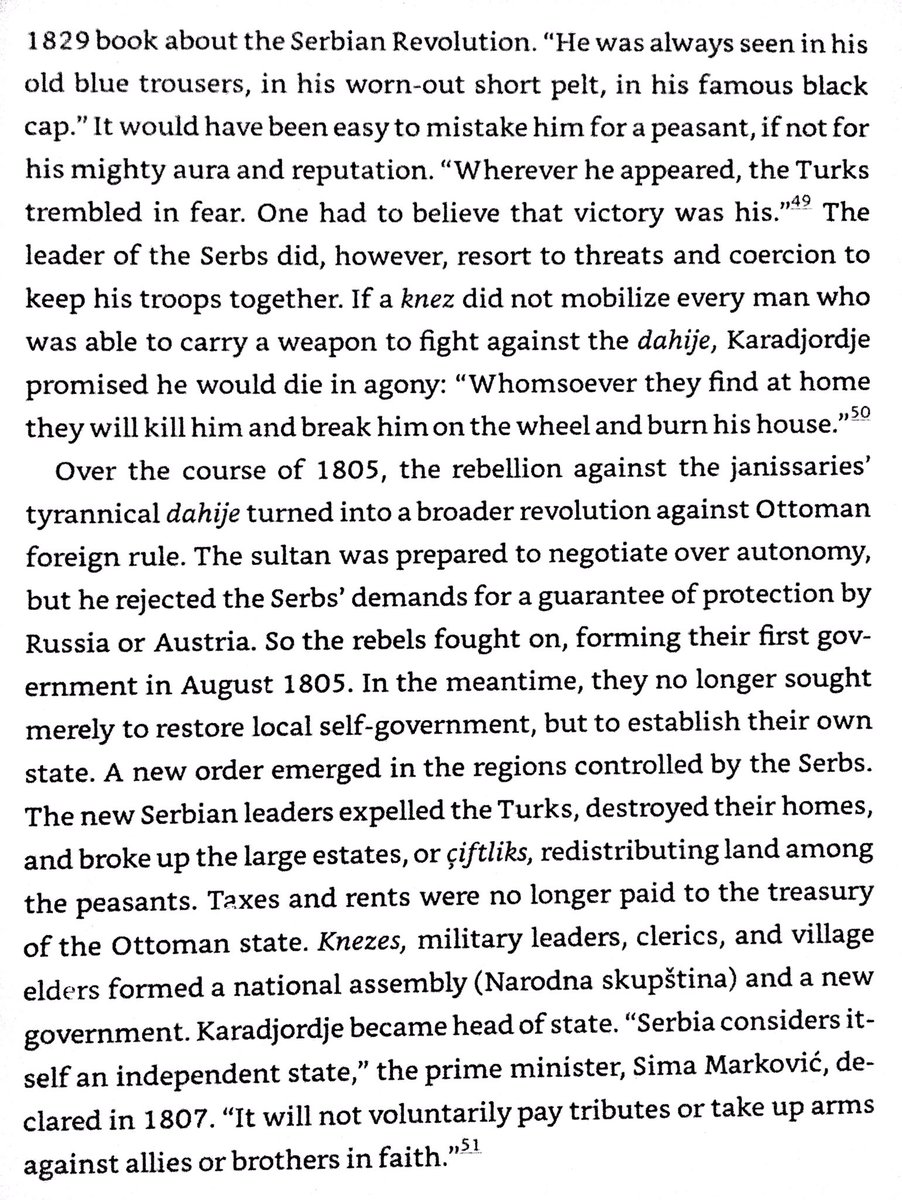
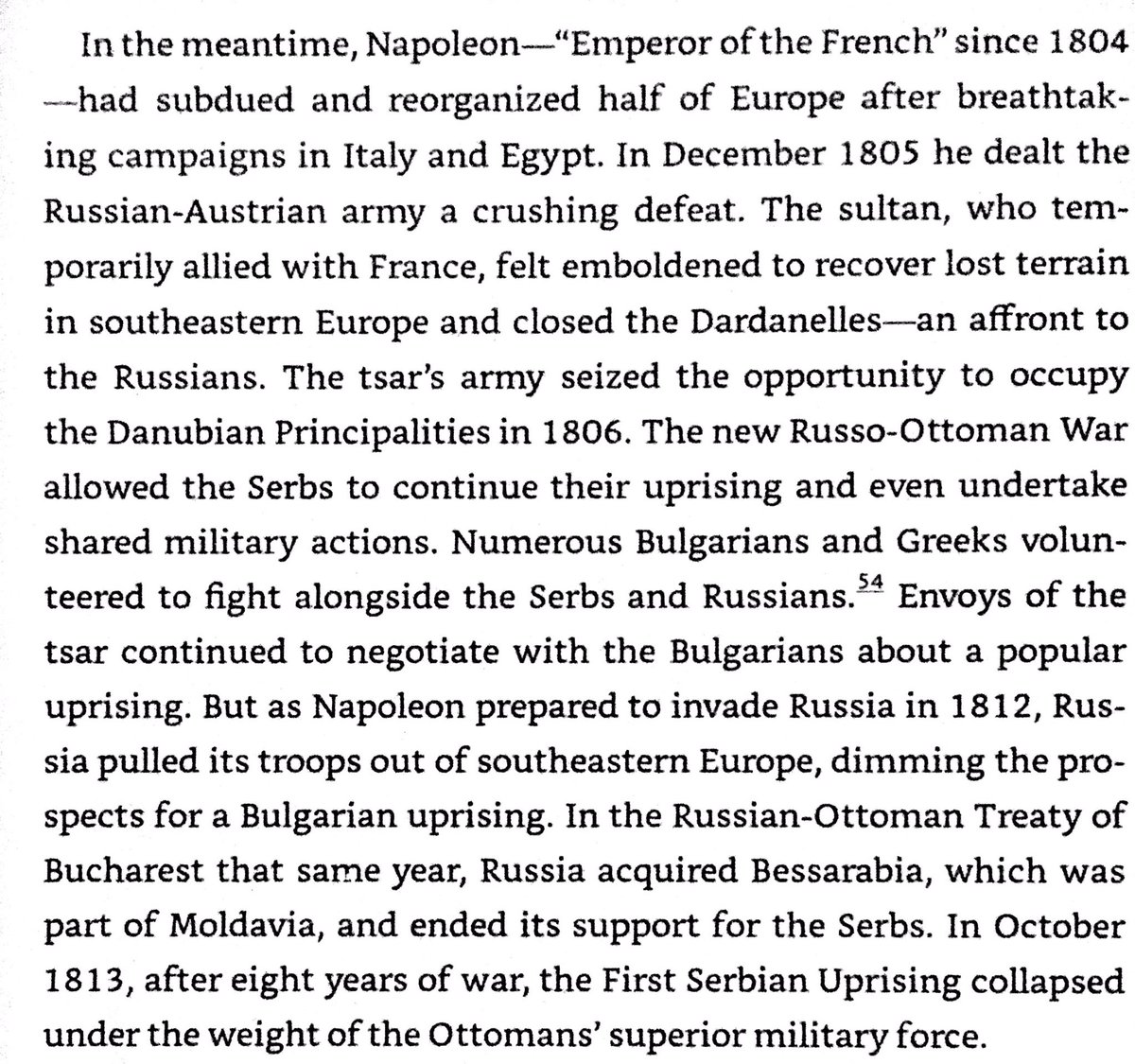
Serbs under Milos Obrenovic rebelled again in 1815 with Russian support. Serbs won independence, but only in the area around Belgrade. Obrenovic murdered his rival Karadjordje. 

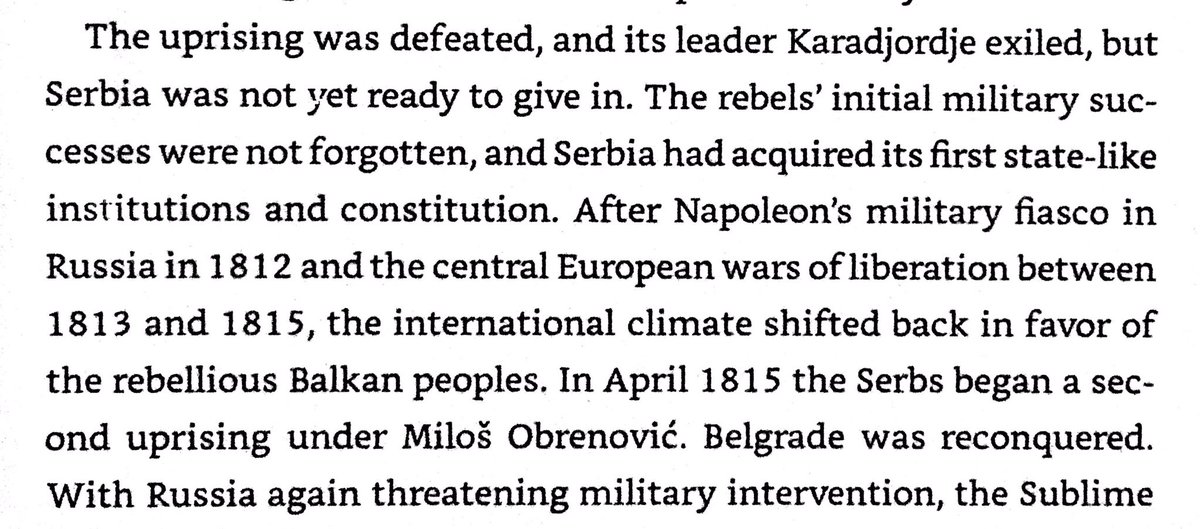

Napoleonic Wars had led the Greeks to arm their merchant ships, leaving them a great deal of artillery. Greek diaspora formed secret society to prepare revolt against Ottomans. Serbs & Montenegrins didn’t help, but Bulgarians did. Turkish landholders in Greece resented by Greeks. 


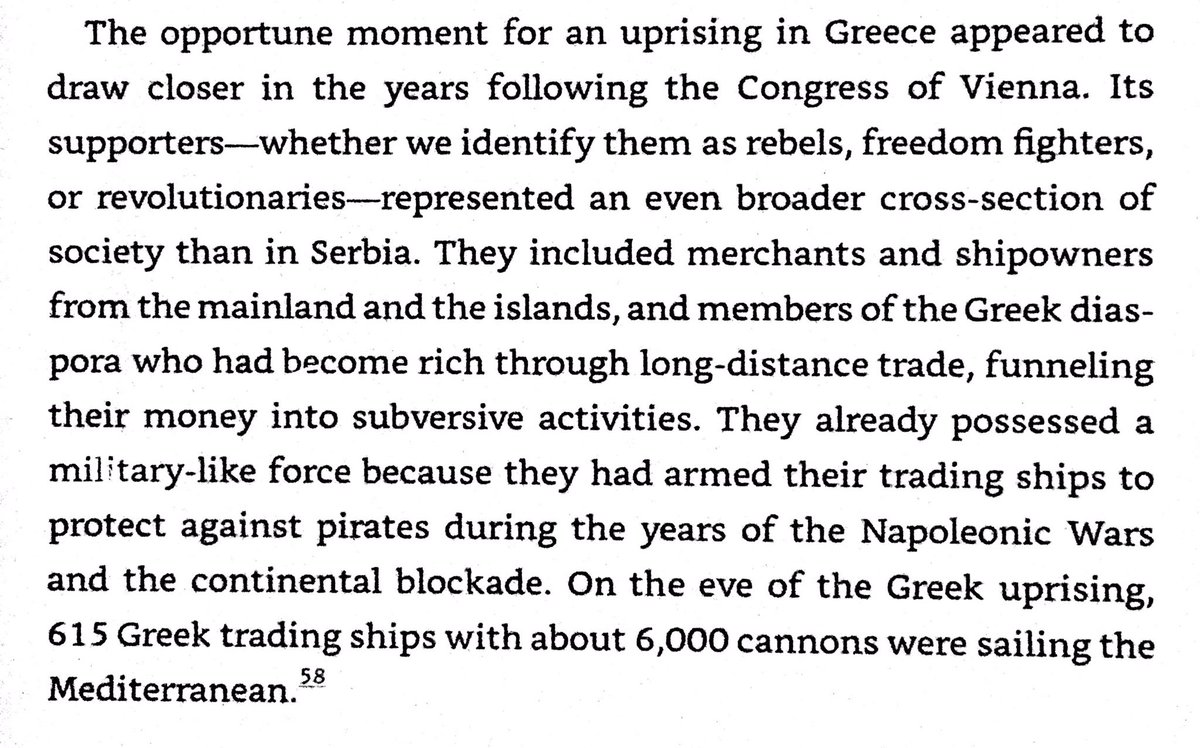

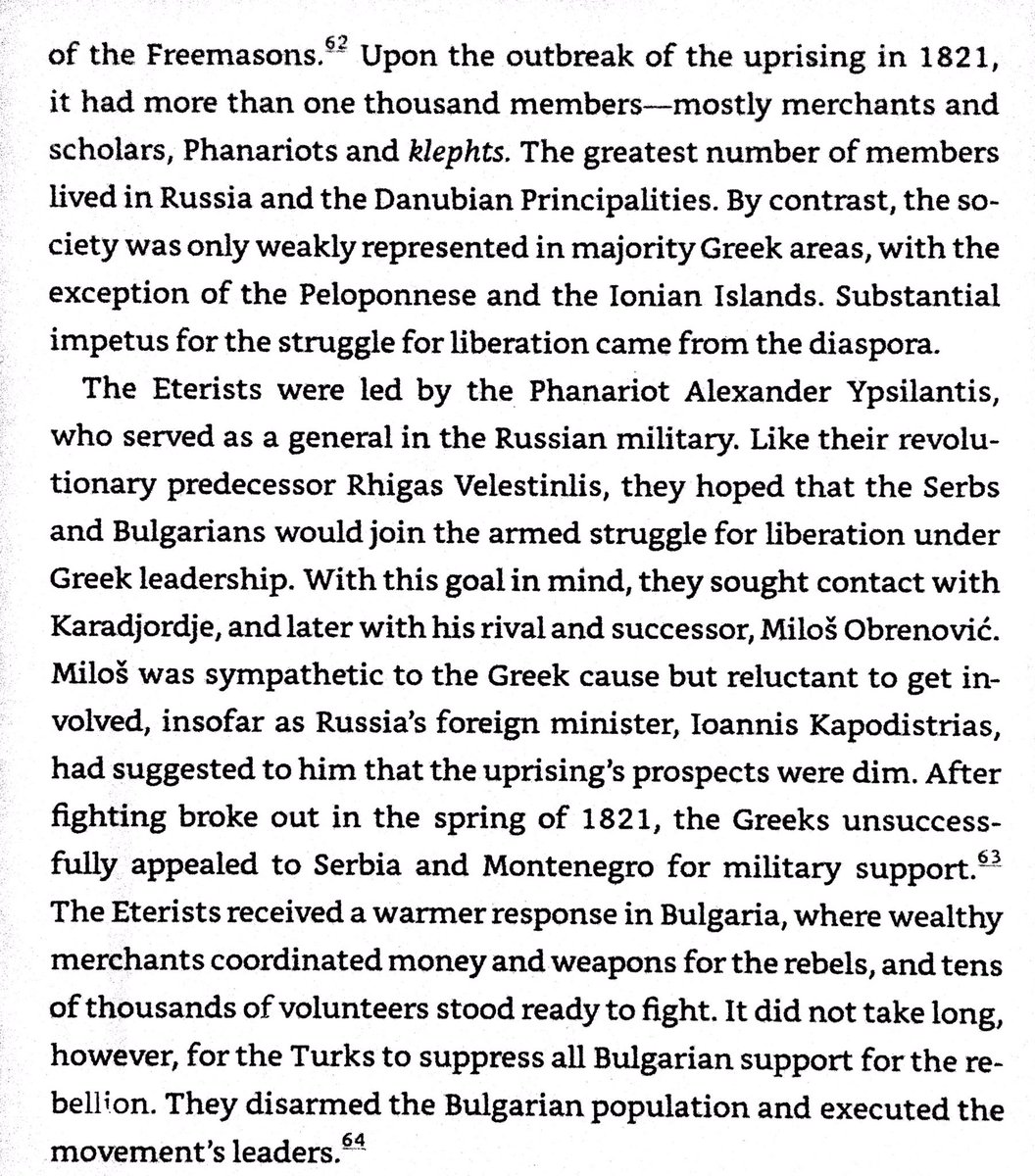
The Dönme were a community of Jewish Sabbateans in Thessaloniki who had converted to Islam in in 1683. They practiced a syncretic faith, & were trusted by neither Moslems or Jews. 
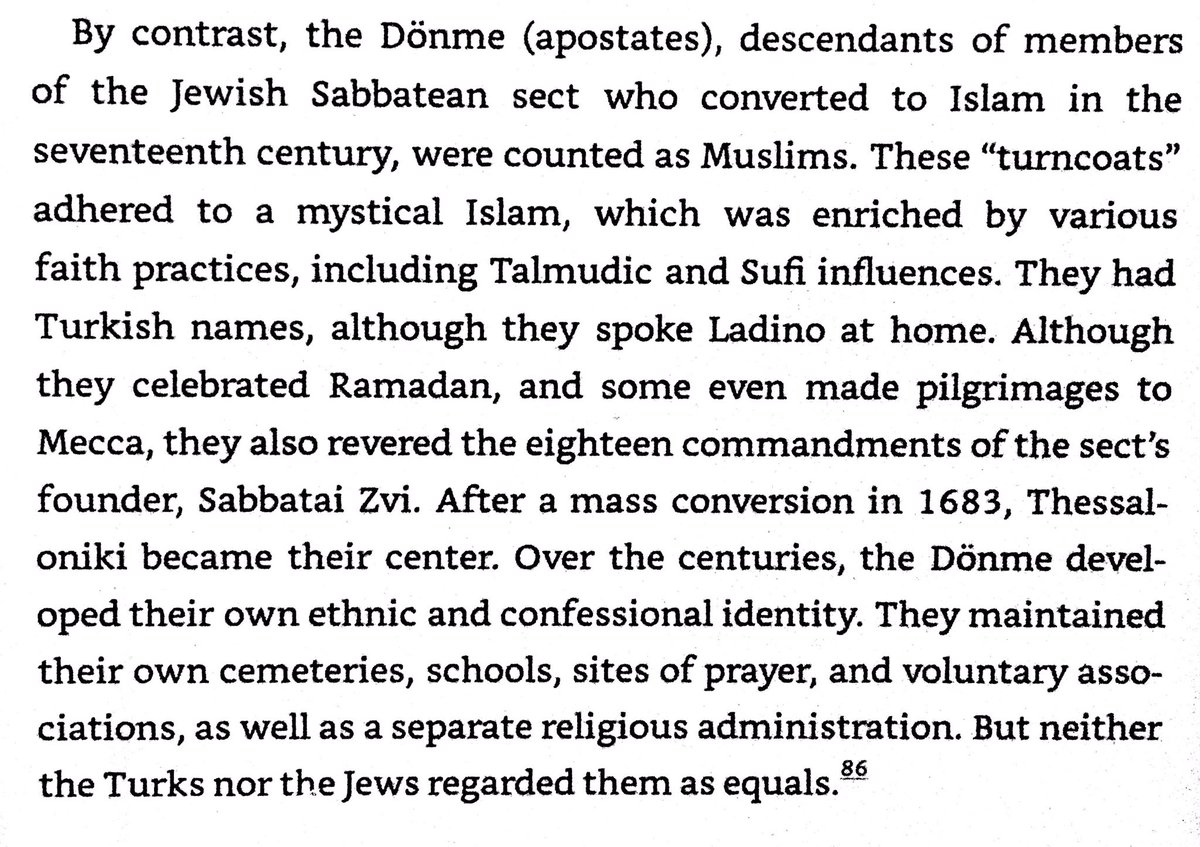
Ottomans & Greeks in Greek War of Independence treated each other cruelly. Peloponnese was site of main Greek successes. 



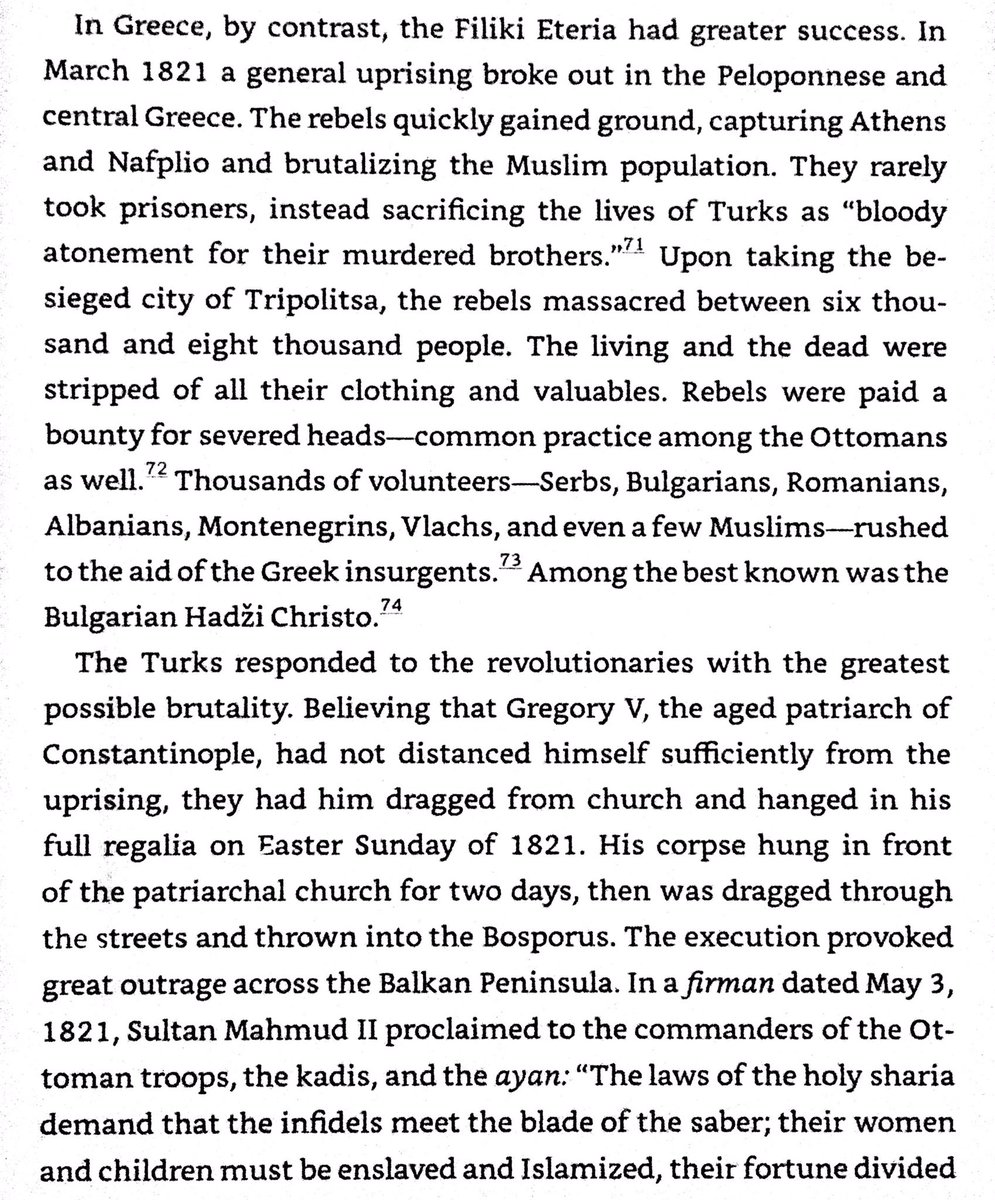
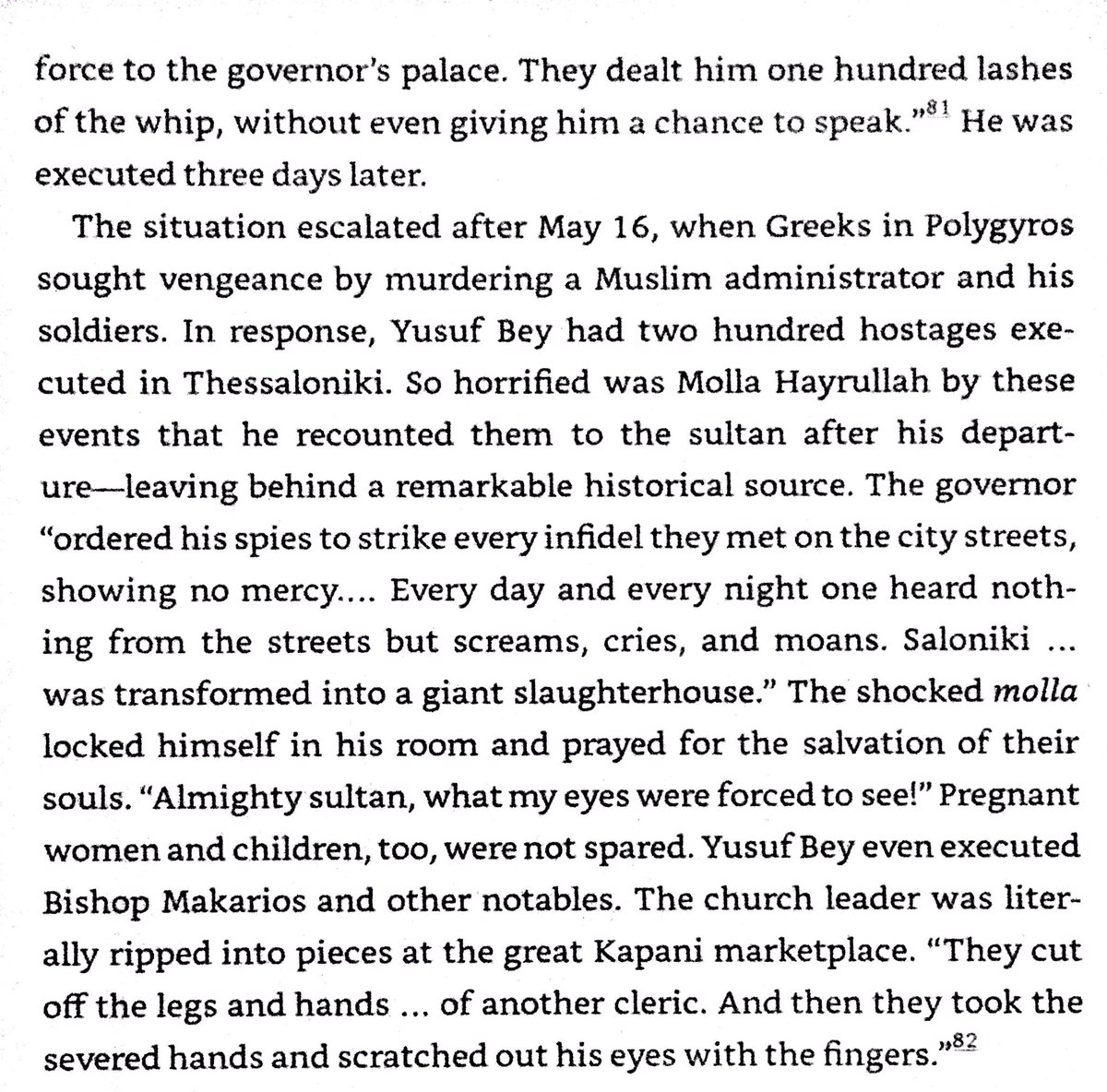

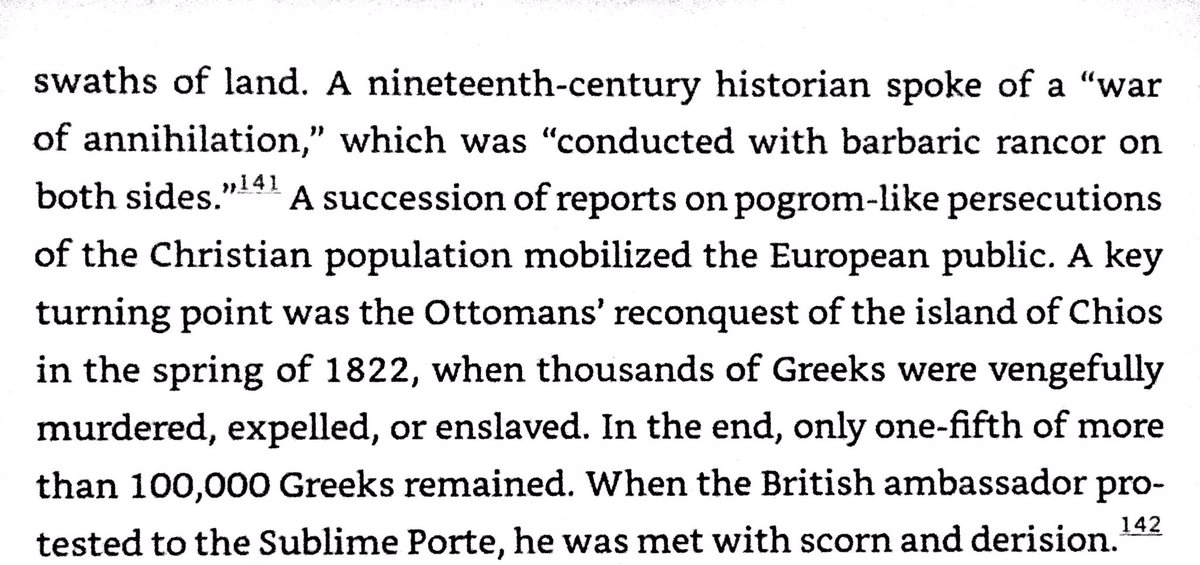
18th century Europeans were aware of spread of plague from its reservoirs in the Balkans. Governments tried to prevent spread by enforcing quarantine on ships at ports & mandating that border crossings be made at special quarantine stations with health inspectors. 


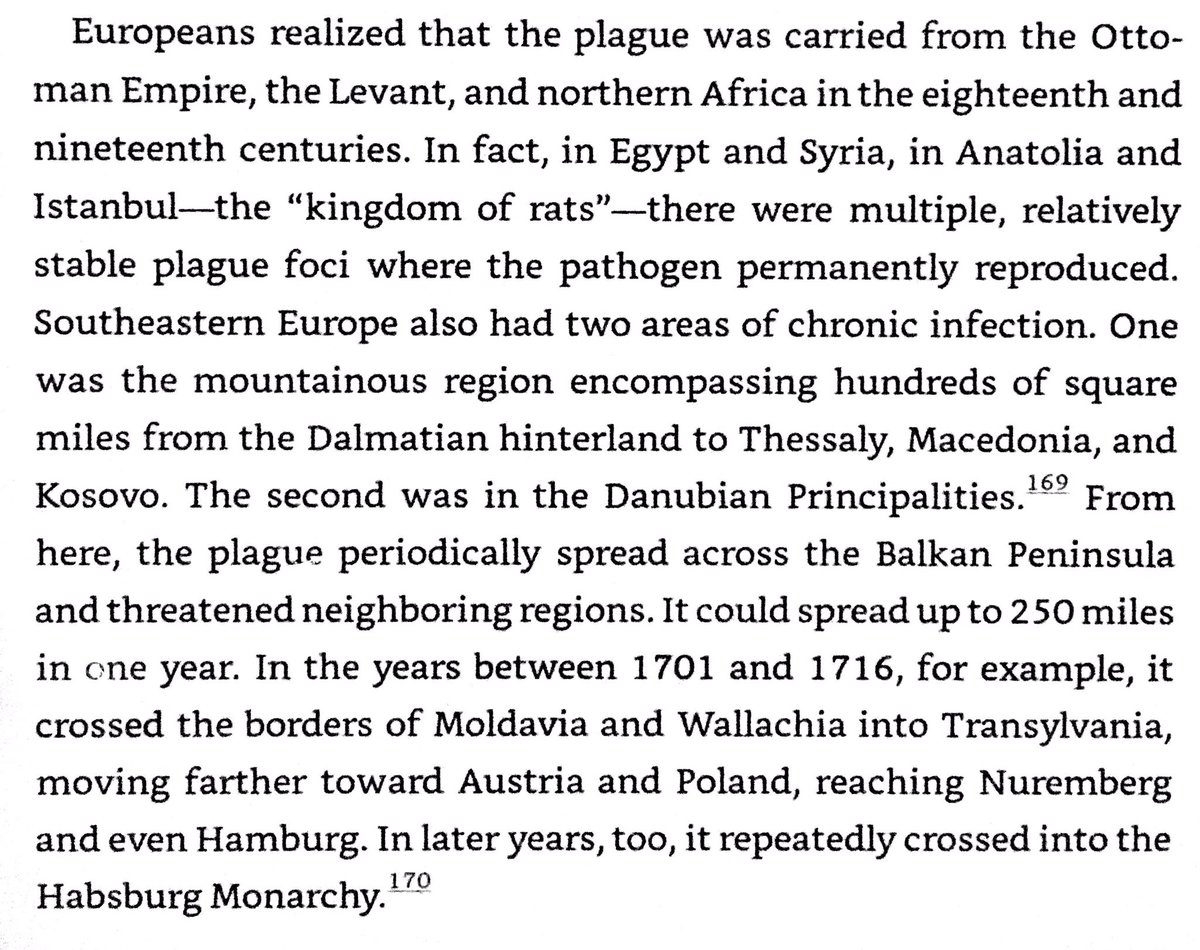
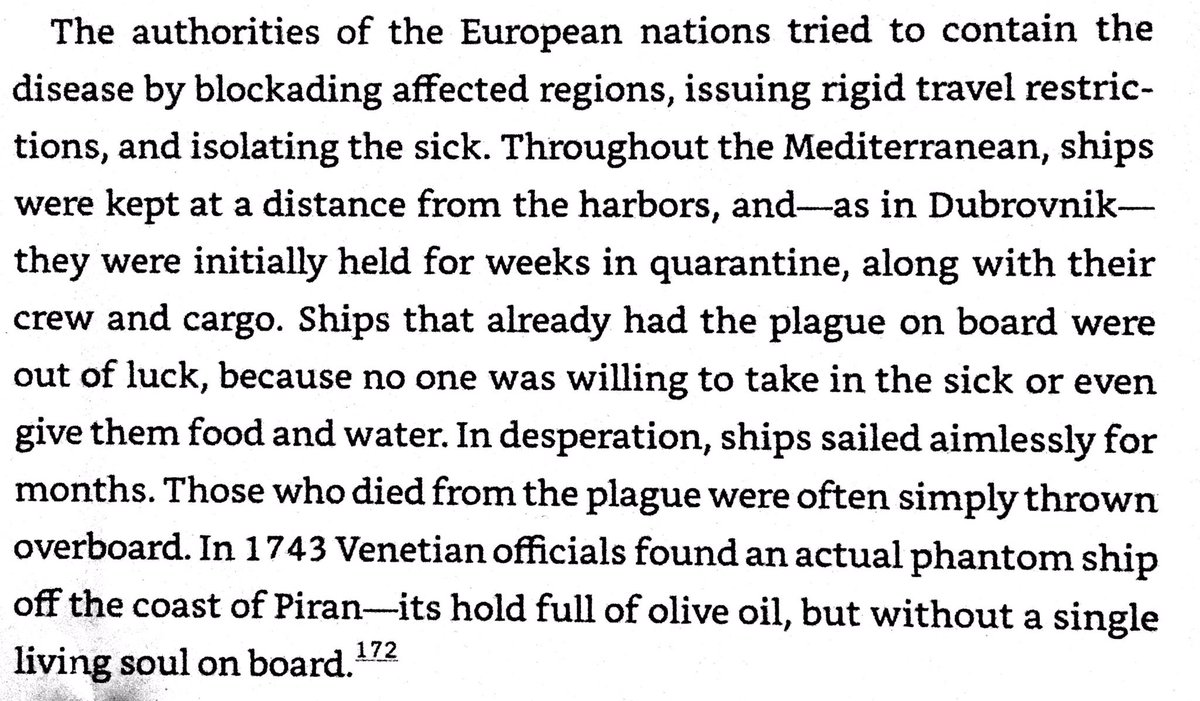
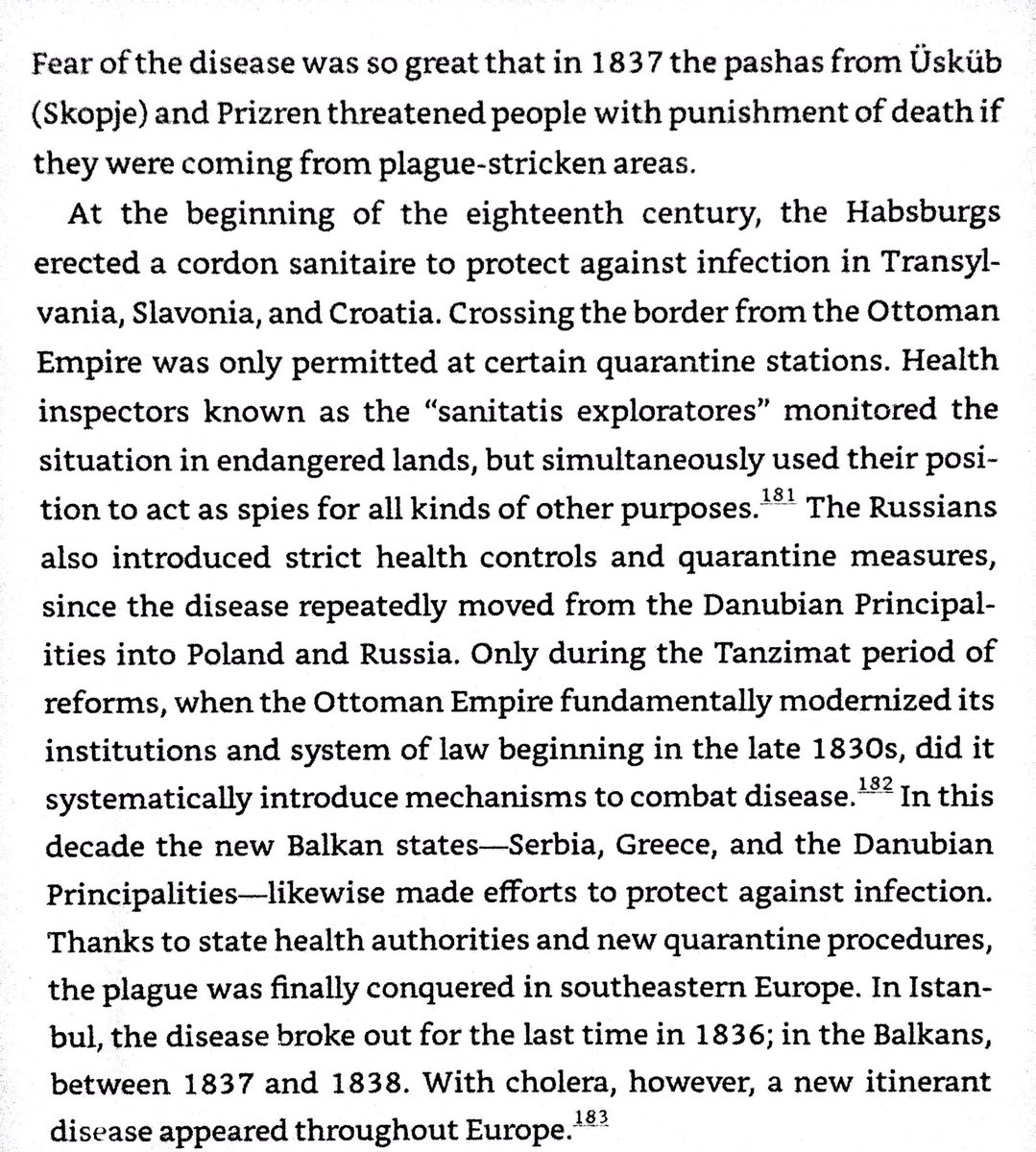
British anti-slavery measures in Mediterranean & Atlantic drove Ottomans find more slaves in Caucasus. Russian wars in Caucasus produced many Circassian refugees, & Caucasians themselves were happy to sell war captives as slaves. 250,000 were settled in Danube basin. 


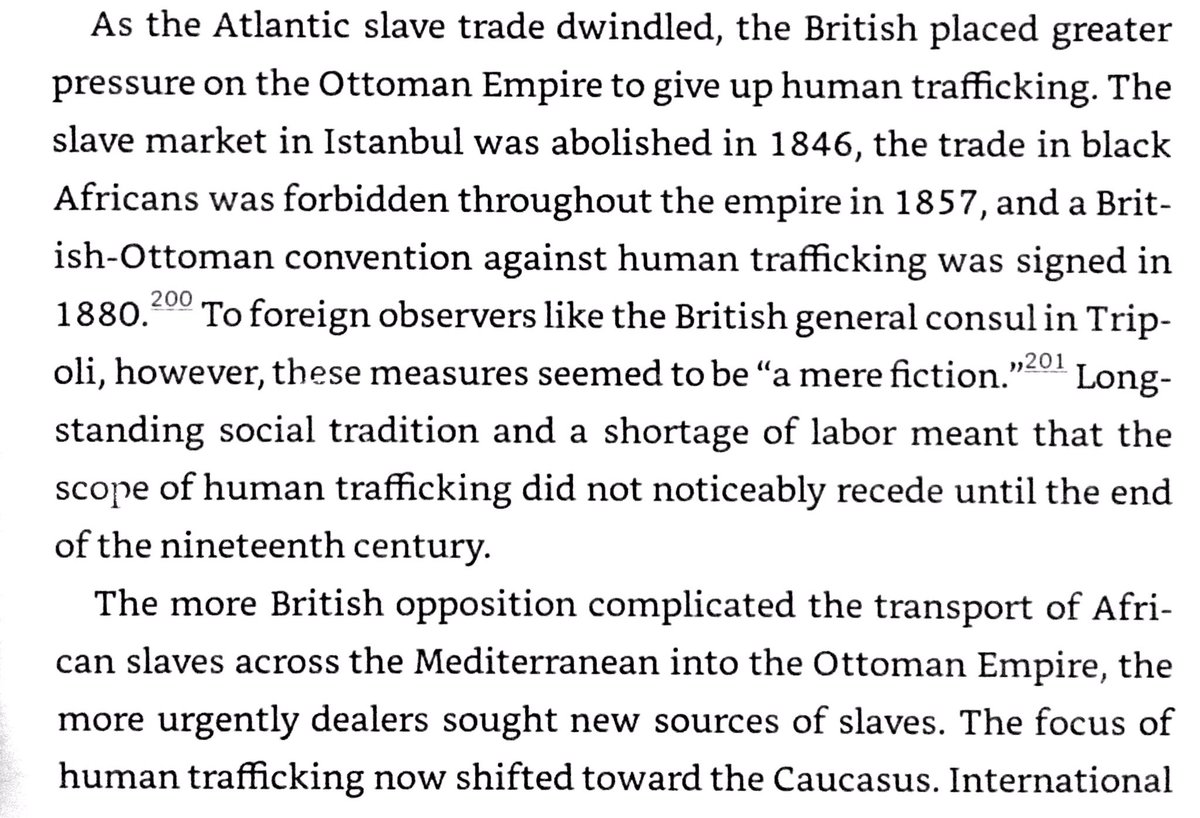
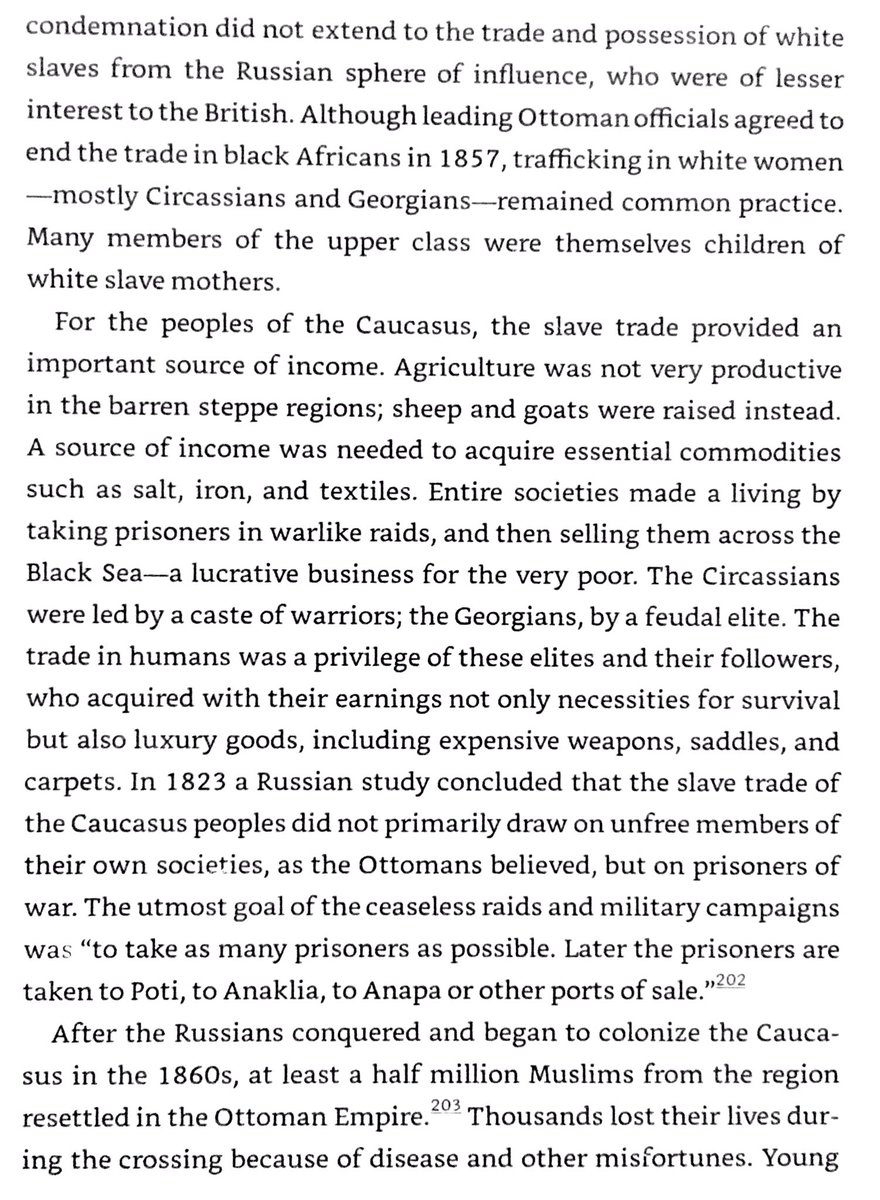
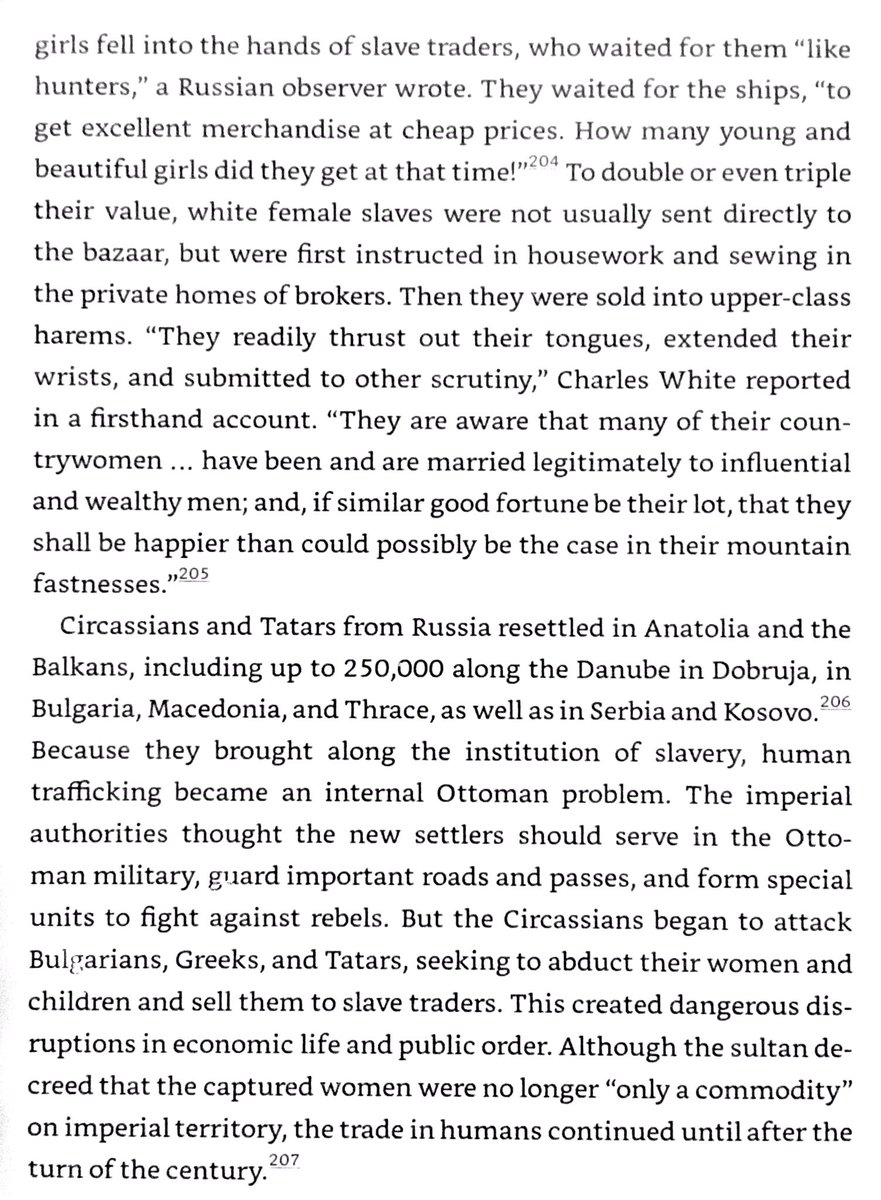
Serb desire to be the leader of all the South Slavs goes back to at least 1844. Polish exiles encouraged them in this venture. 
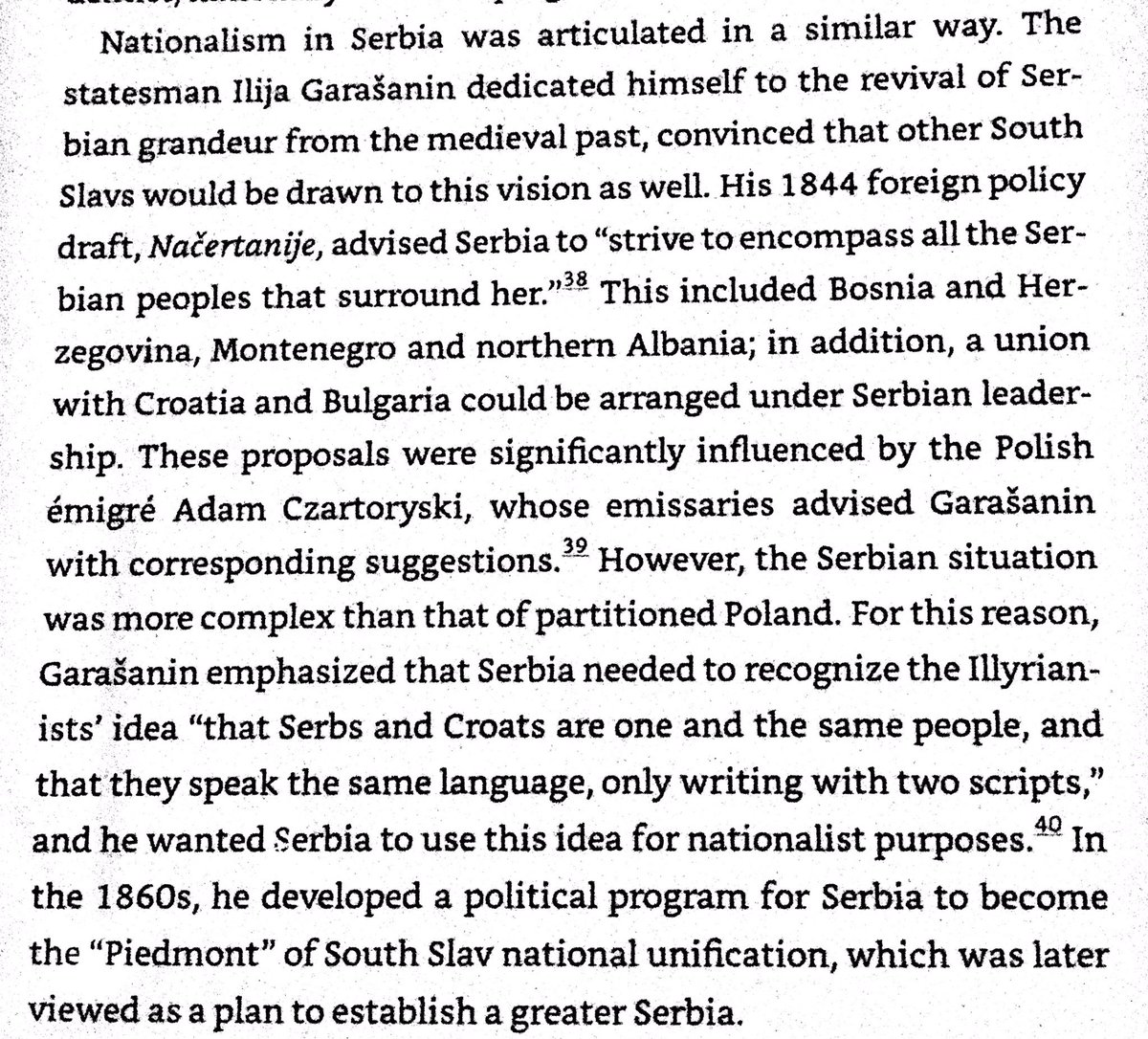
Despite expansion of law enforcement, blood feuds continued in Albania. One Albanian tribe, the Toplana, had 42% of men’s deaths result from blood feuds. 
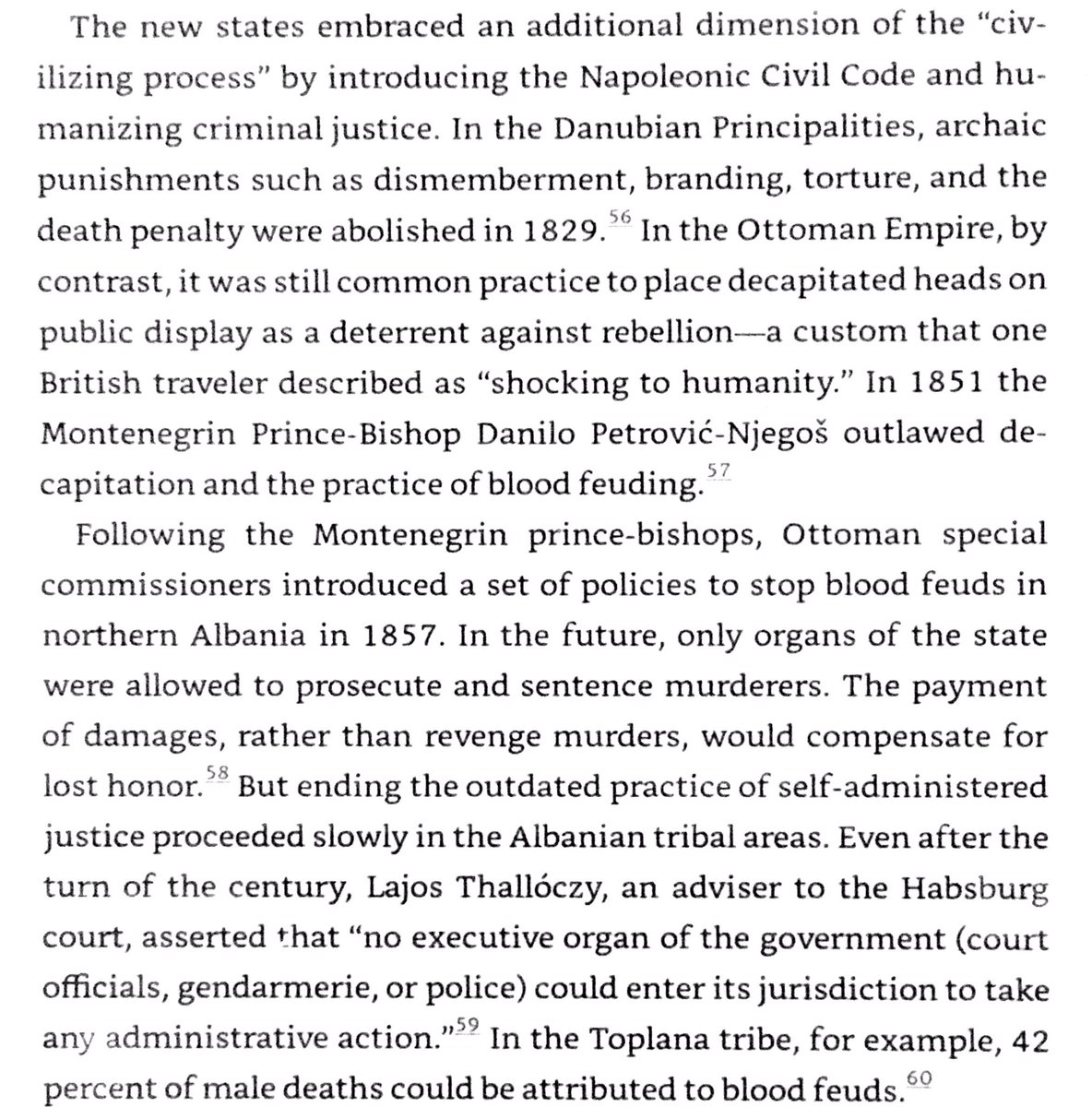
Religious identity trumped ethnic identity for inhabitants of rural areas of Balkans in late 19th century 
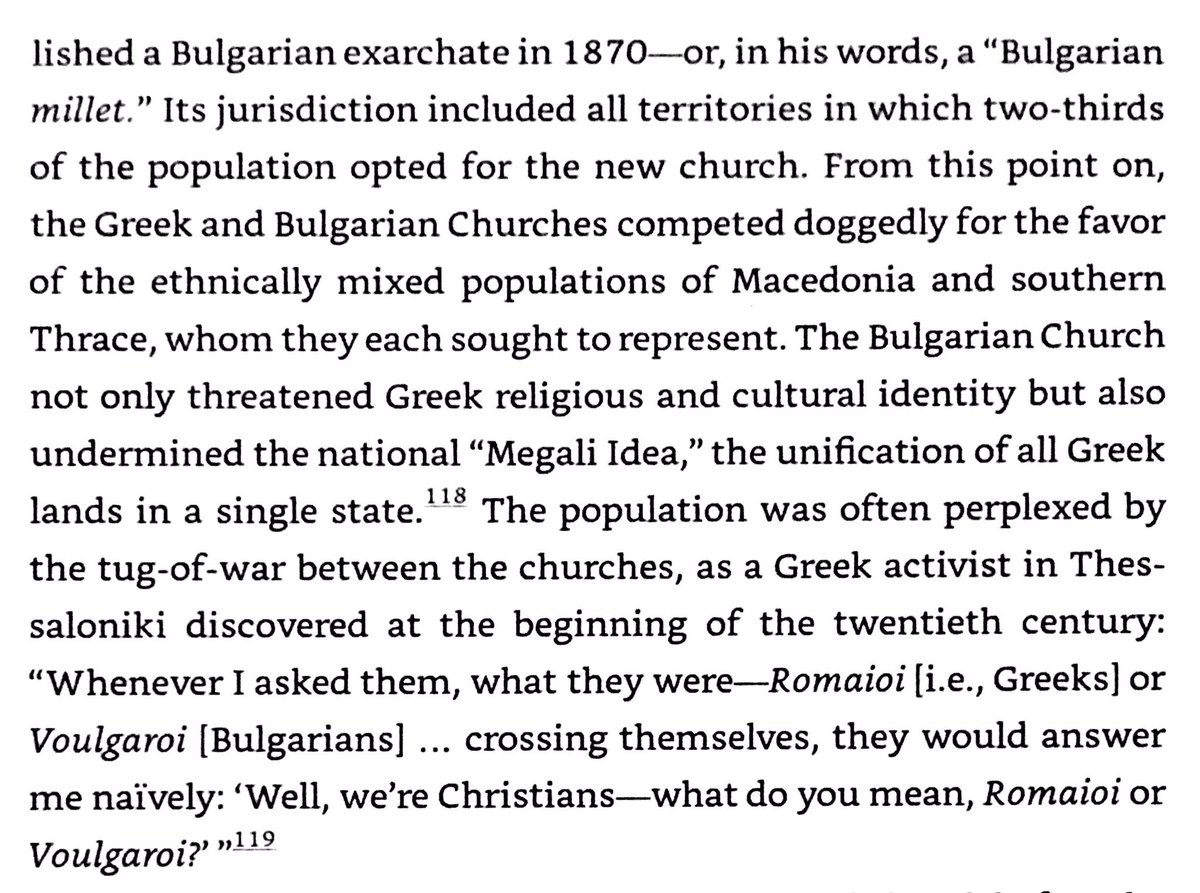
Croats supported the Hapsburgs in the 1848 revolutions, hoping for autonomy. Hapsburgs instead recentralized the empire. 

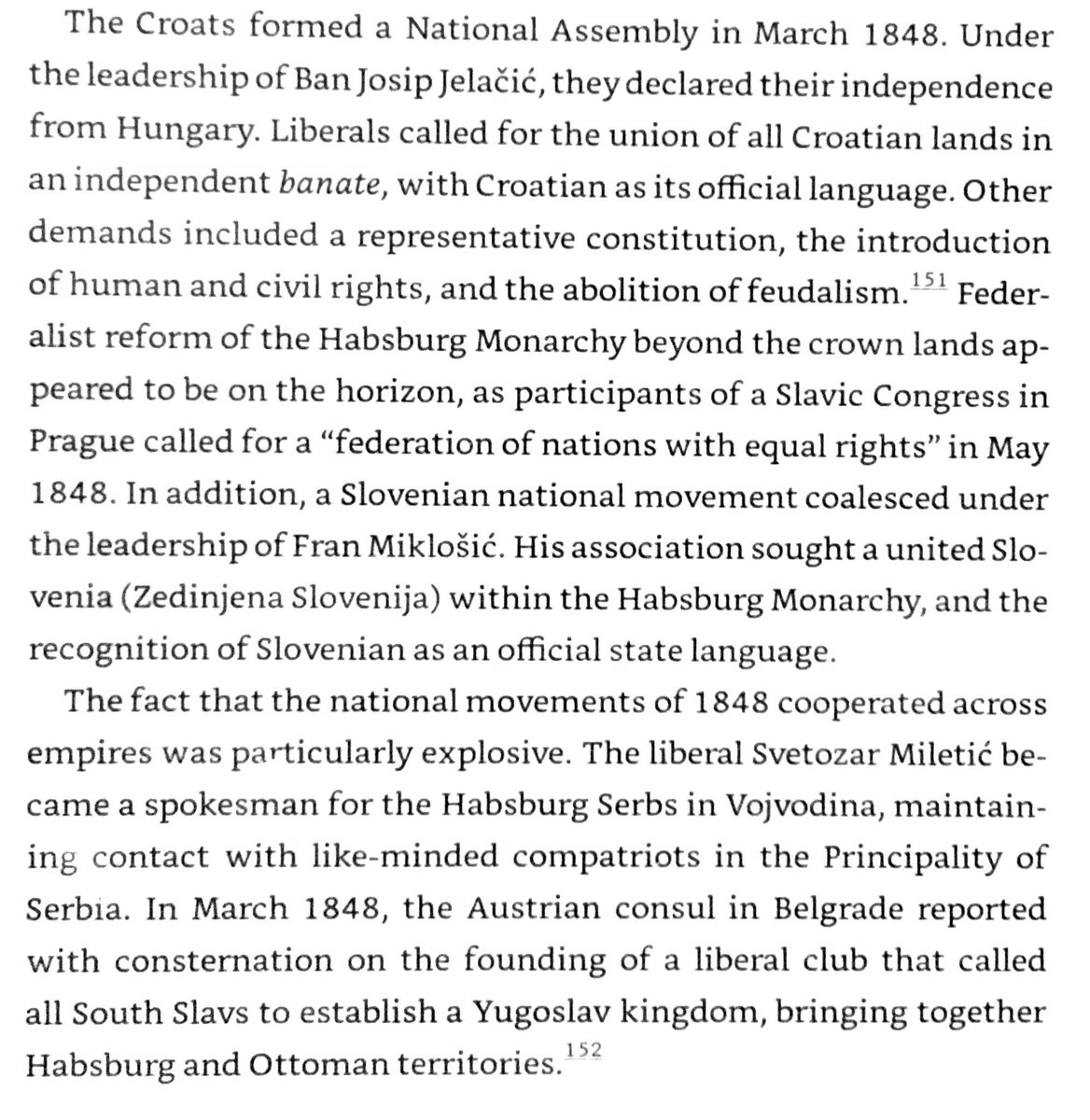

Leaders of April 1876 Bulgarian Uprising were mostly educated in Russia or France; & 75% were children of priests, teachers, or merchants. 
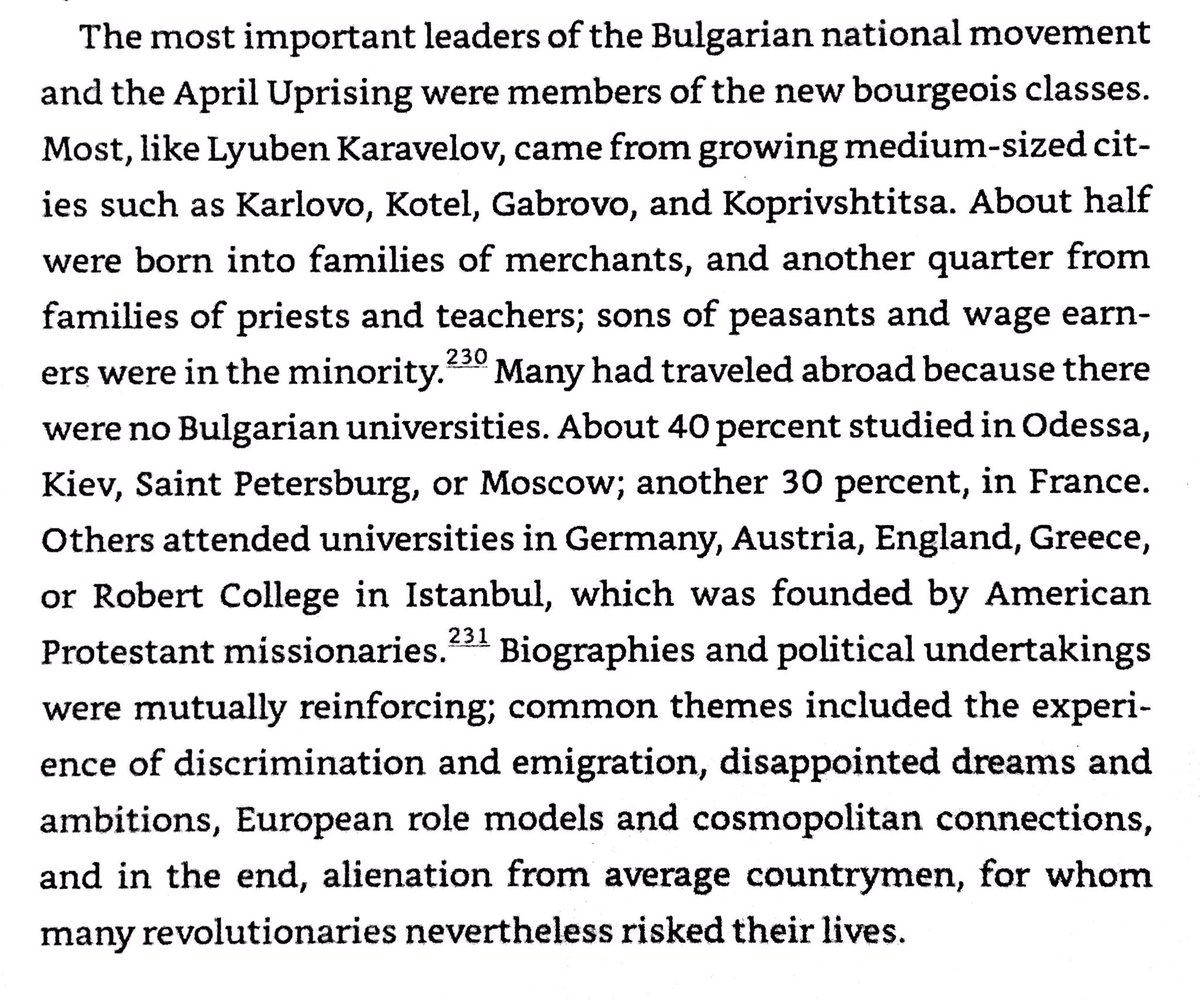
Between the first Serb uprising in 1804 & the end of the post-WWI chaos, 935k Moslems were driven from the Balkans & 1.735 million were killed. There were 500k Moslem refugees to Anatolia in 1875-1878 alone. 


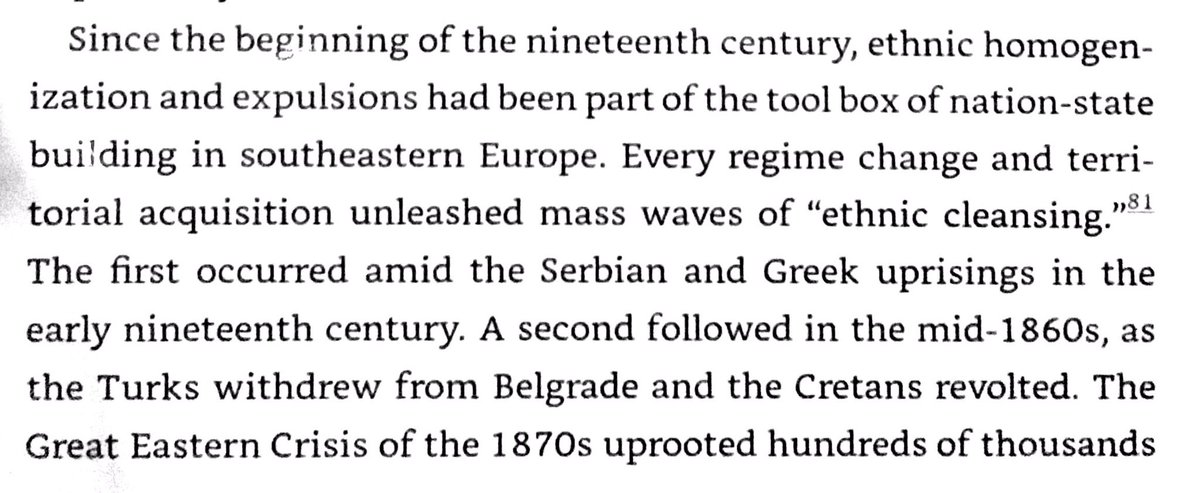
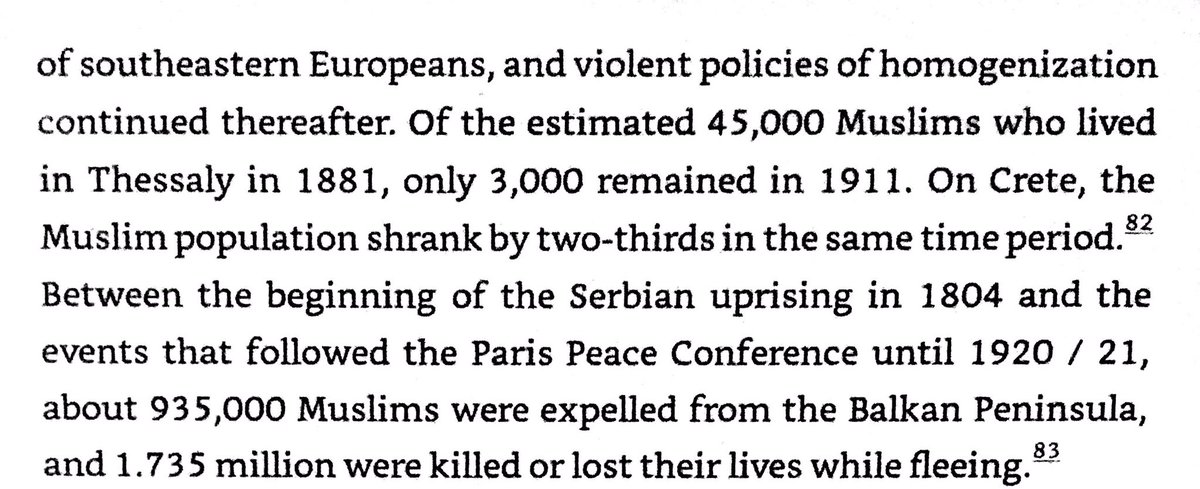
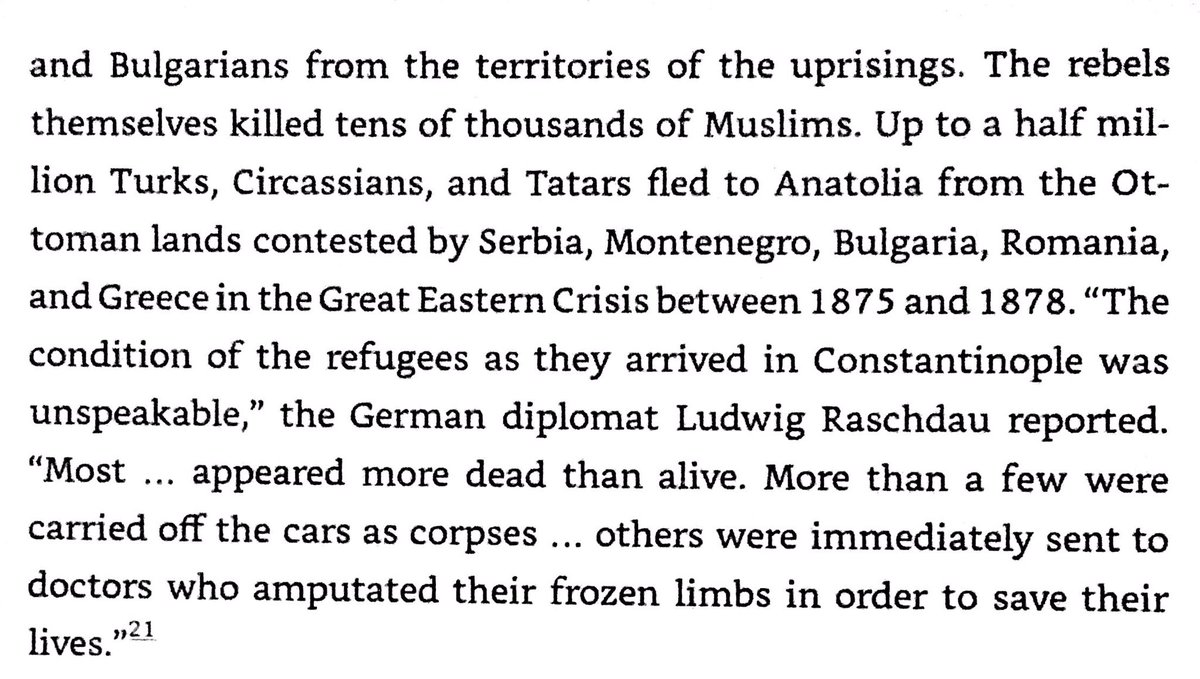
Britain wanted to keep Ottomans stable & open for trade. They worried Russia would destroy Ottomans & break through Dardanelles to Mediterranean & global sea trade routes. Britain’s free trade deal with Ottomans in 1838 let British manufacturered goods dominate Ottoman markets. 


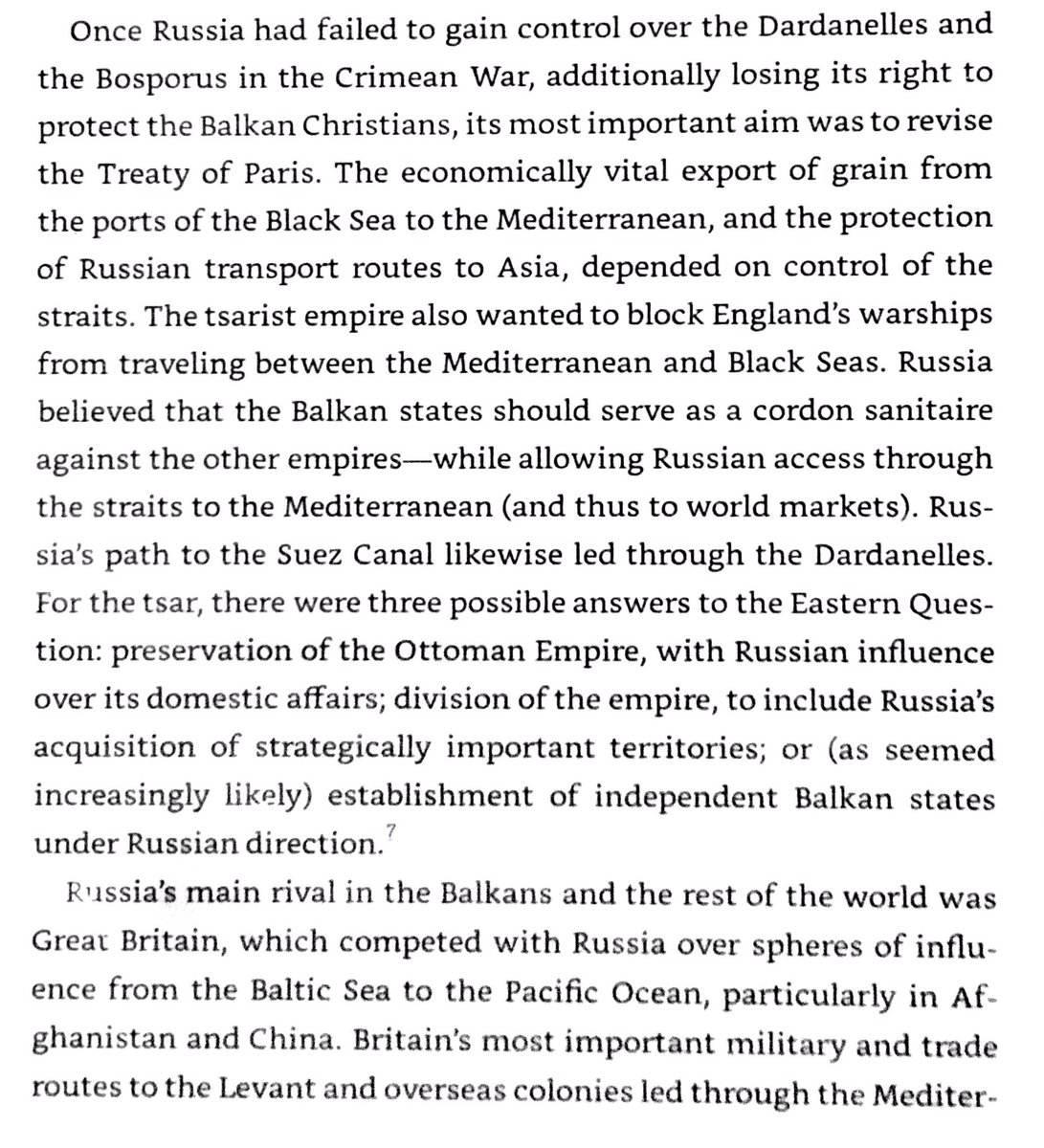
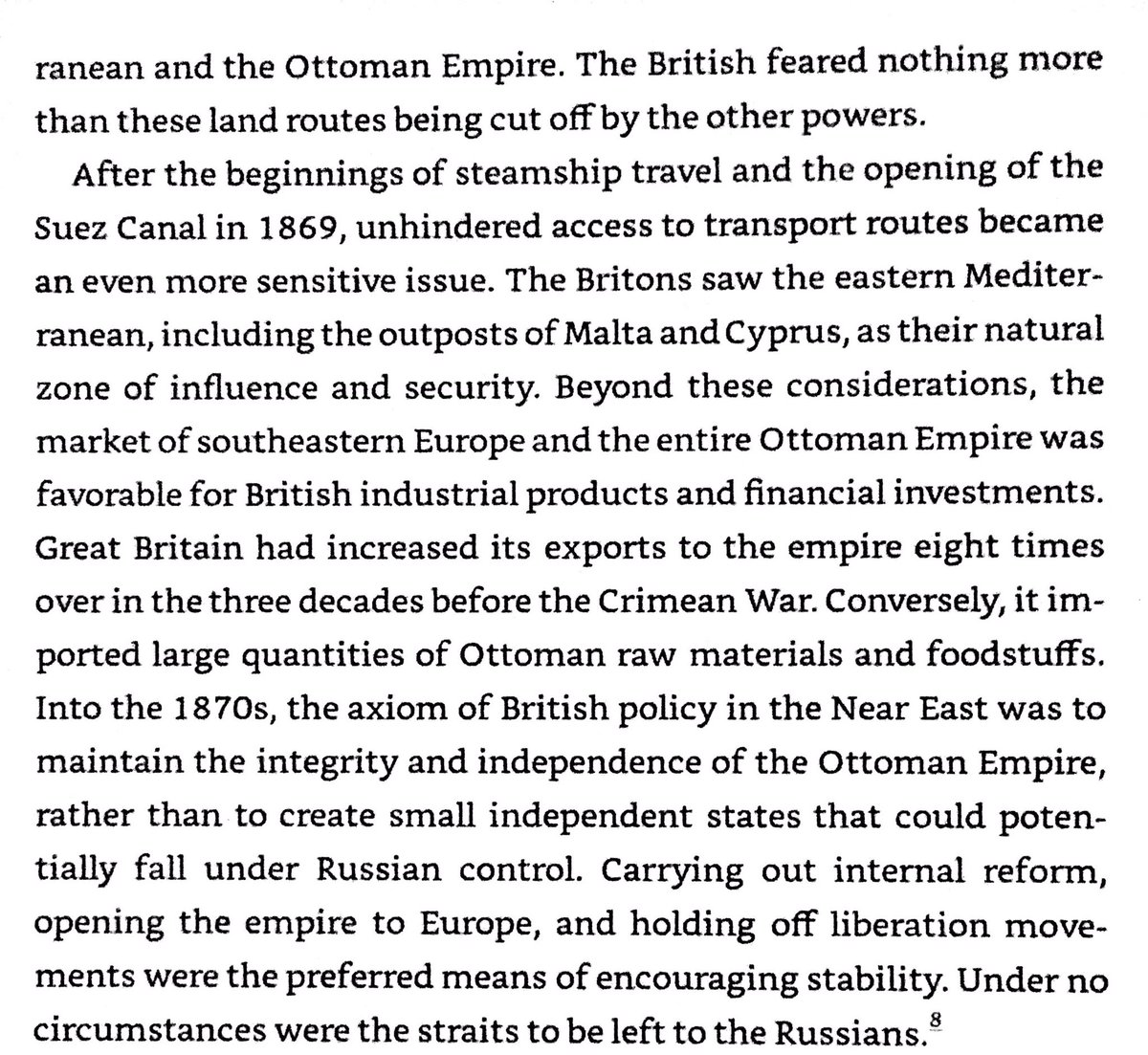

Massacres in Balkans drove European opinion against 🇹🇷. 🇷🇸& 🇲🇪 invaded & were defeated, 🇷🇺 invaded 🇹🇷 in 1877, creating Greater 🇧🇬. Other powers were worried by 🇷🇺, & at Congress of Berlin 1878 🇹🇷 losses were reduced. 🇦🇹& 🇷🇺 had influence spheres in W & E Balkans respectively. 





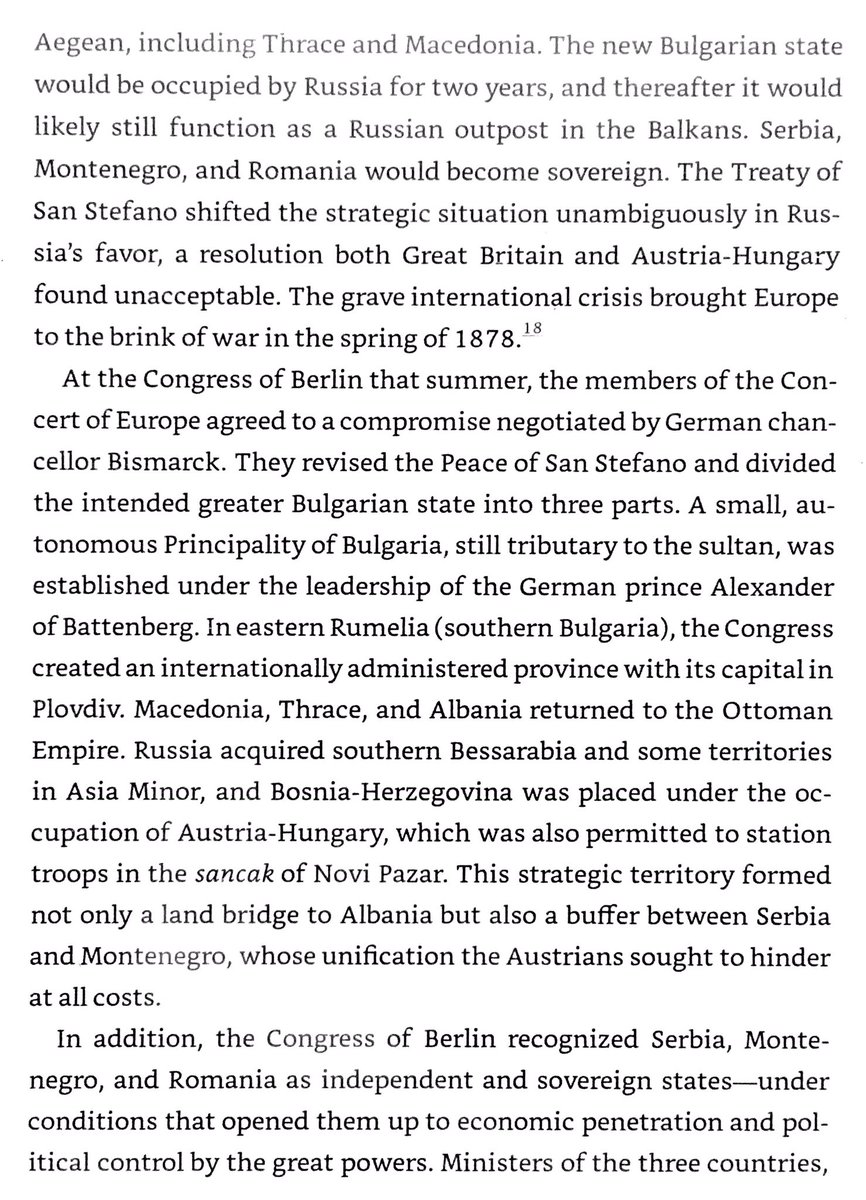
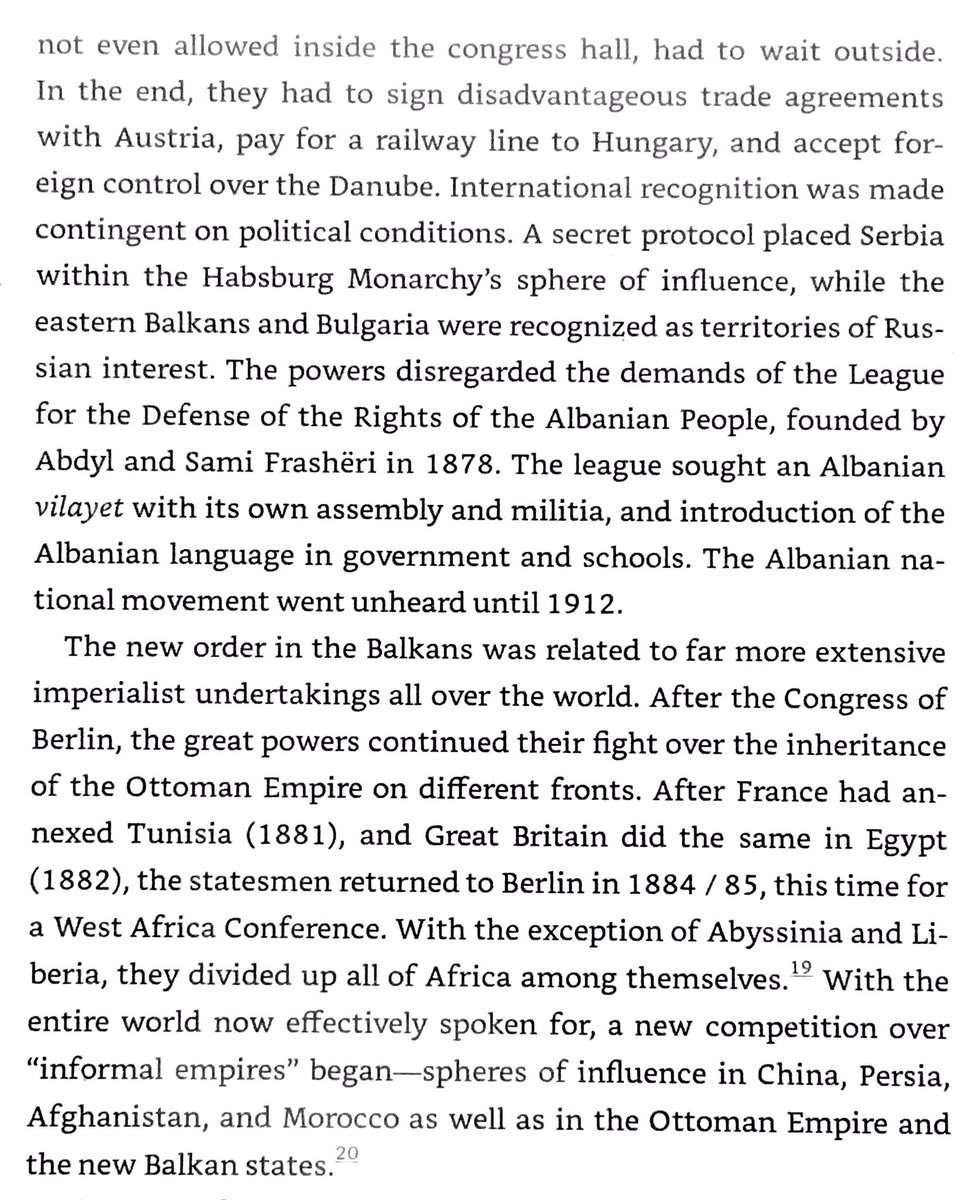
Macedonia was ungovernable between Russo-Turkish & Balkan Wars. Internal Macedonian Revolutionary Organization (IMRO), & Ottoman authorities fought each other with assassinations, terror attacks, & revenge killings. 

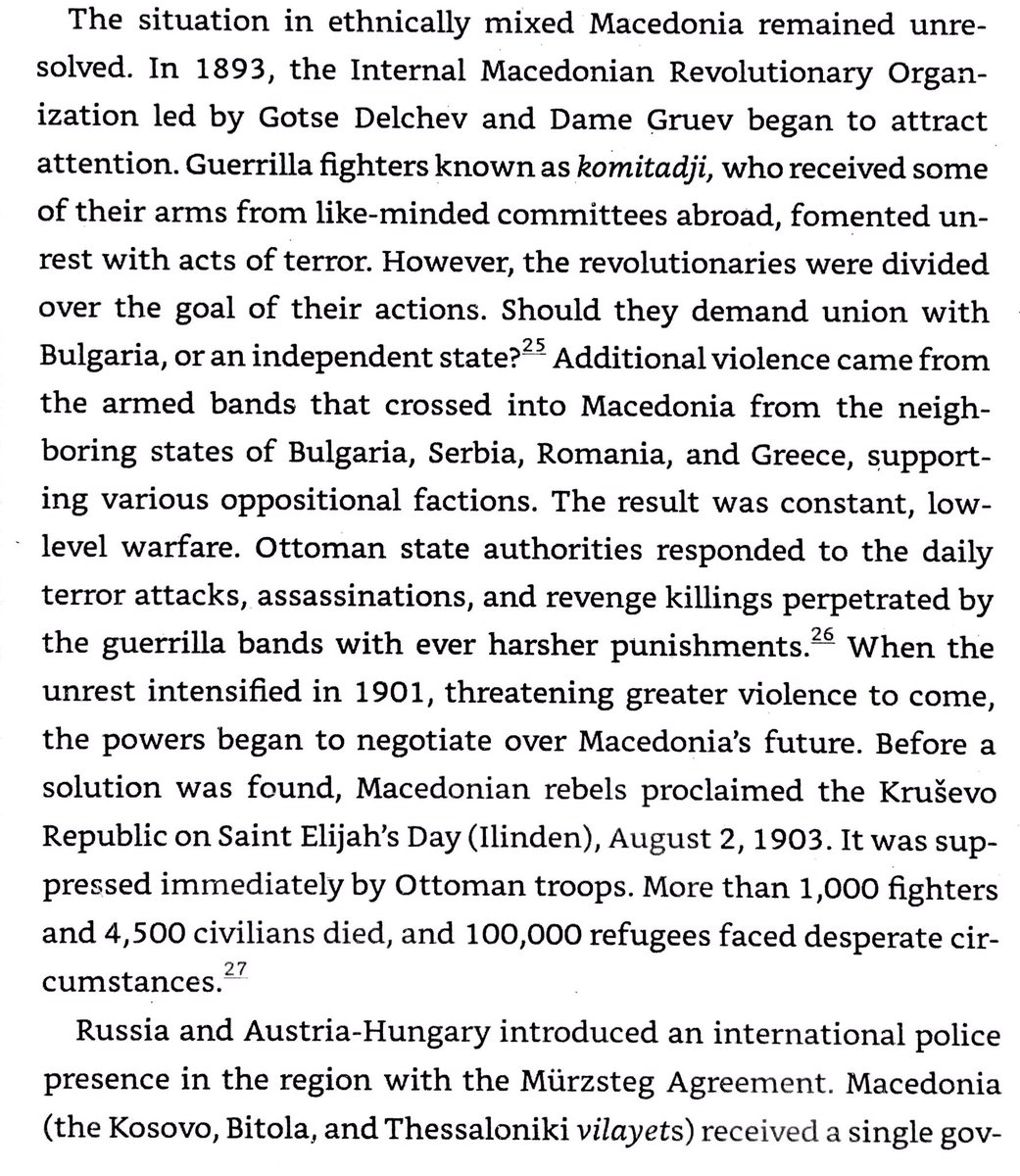
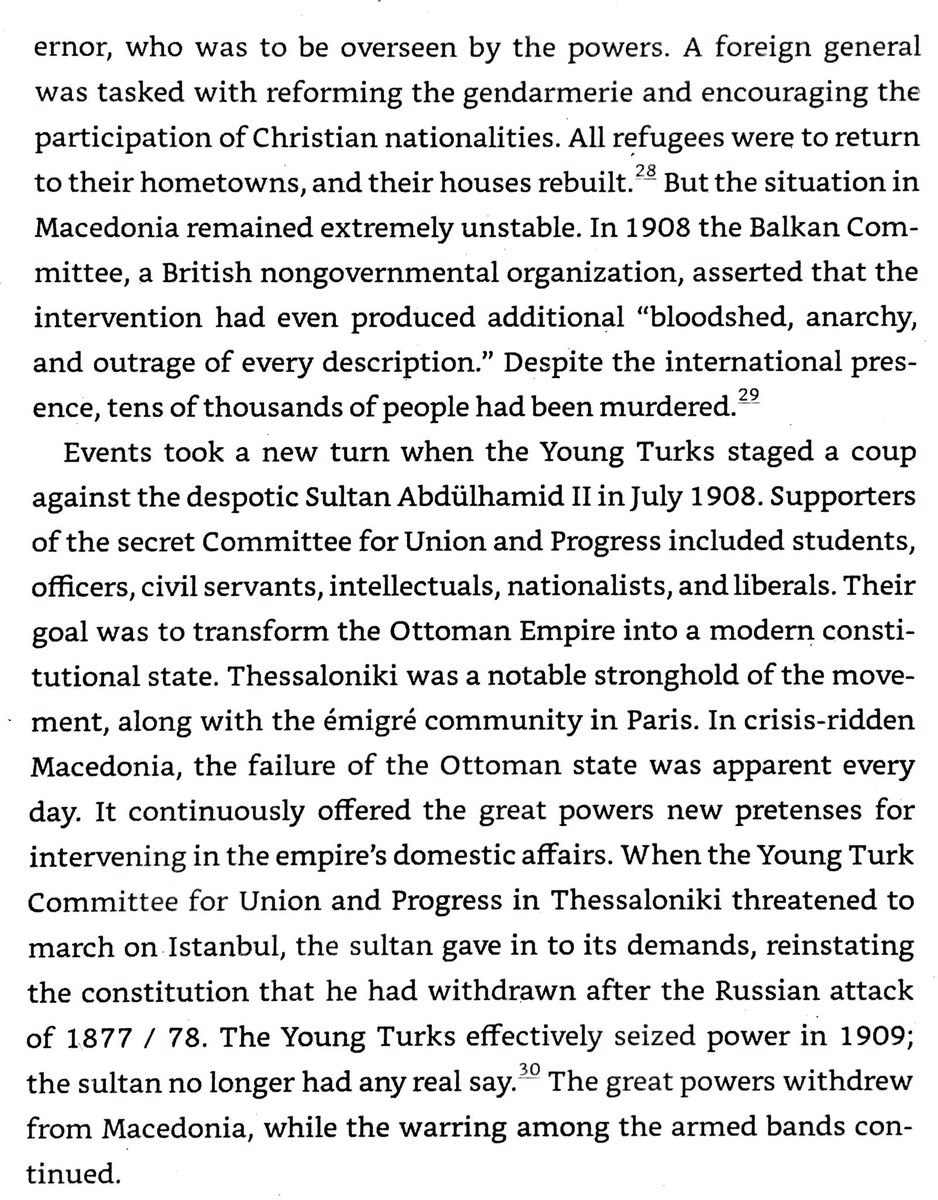
Agrarian political parties were the main alternative to the bourgeoisie-dominated liberal parties in the Balkans. They supported agricultural investment, cooperatives, practical education, & better finance institutions. They gained great influence after WWI. 



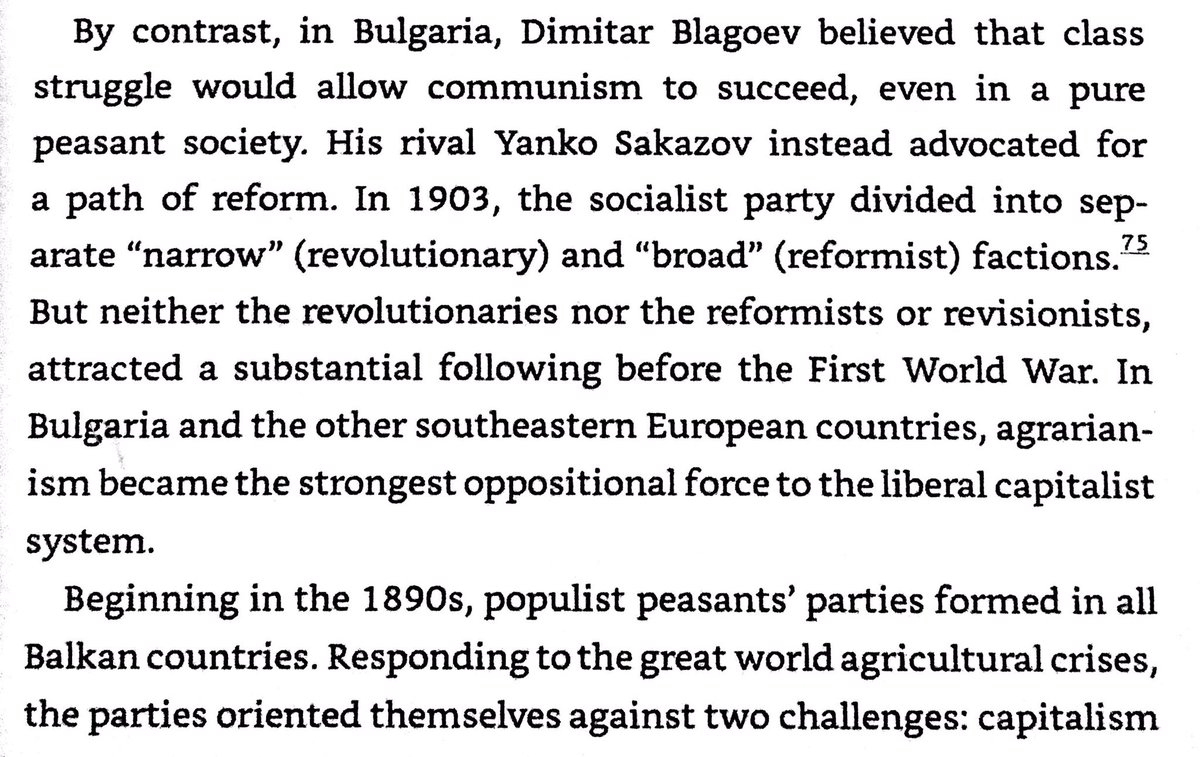
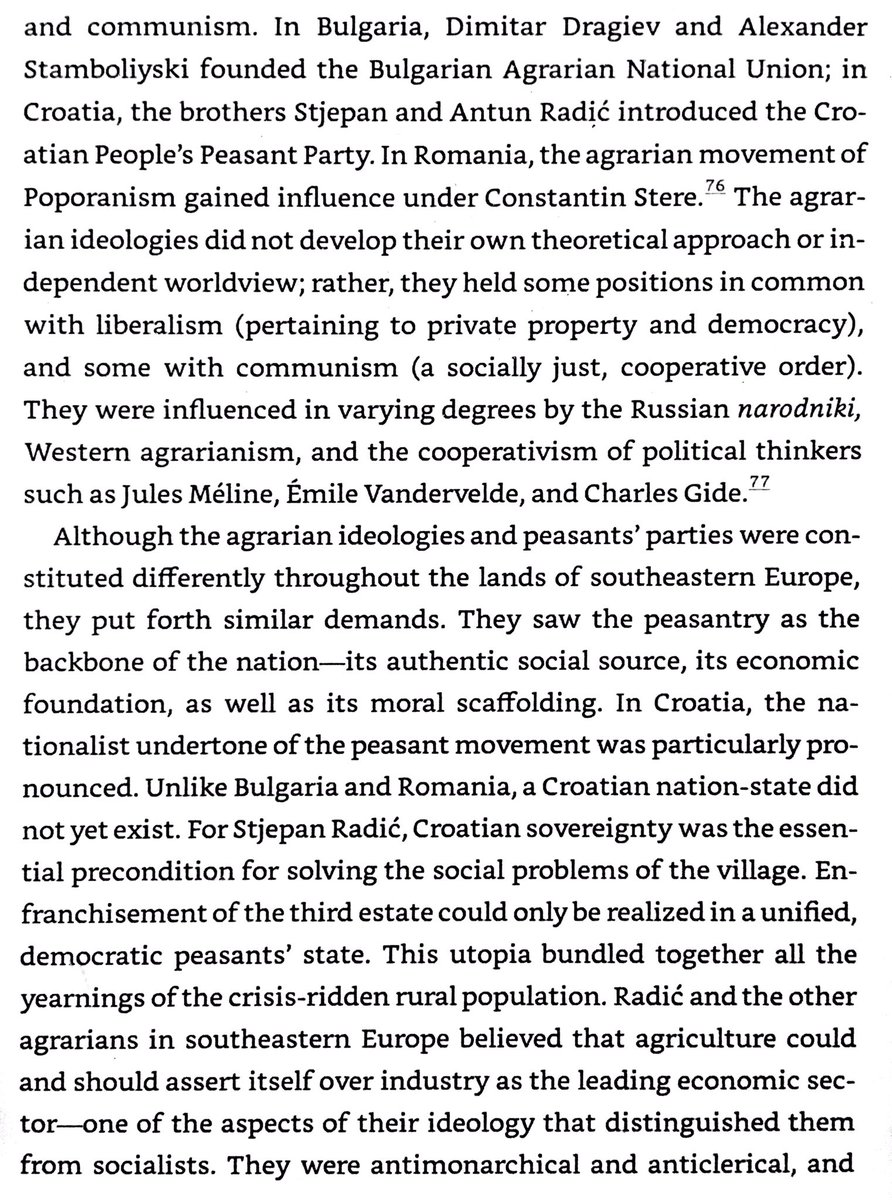
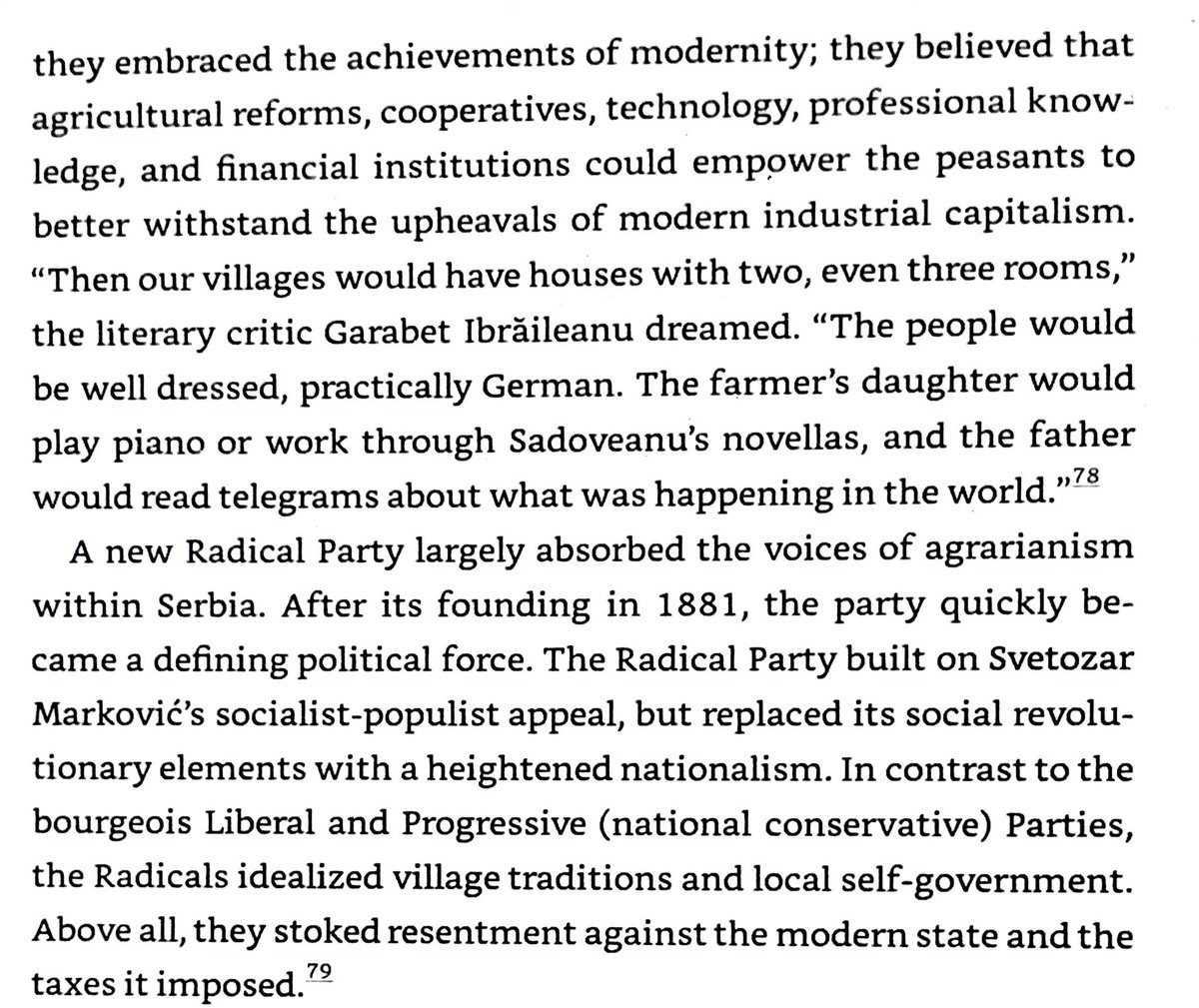
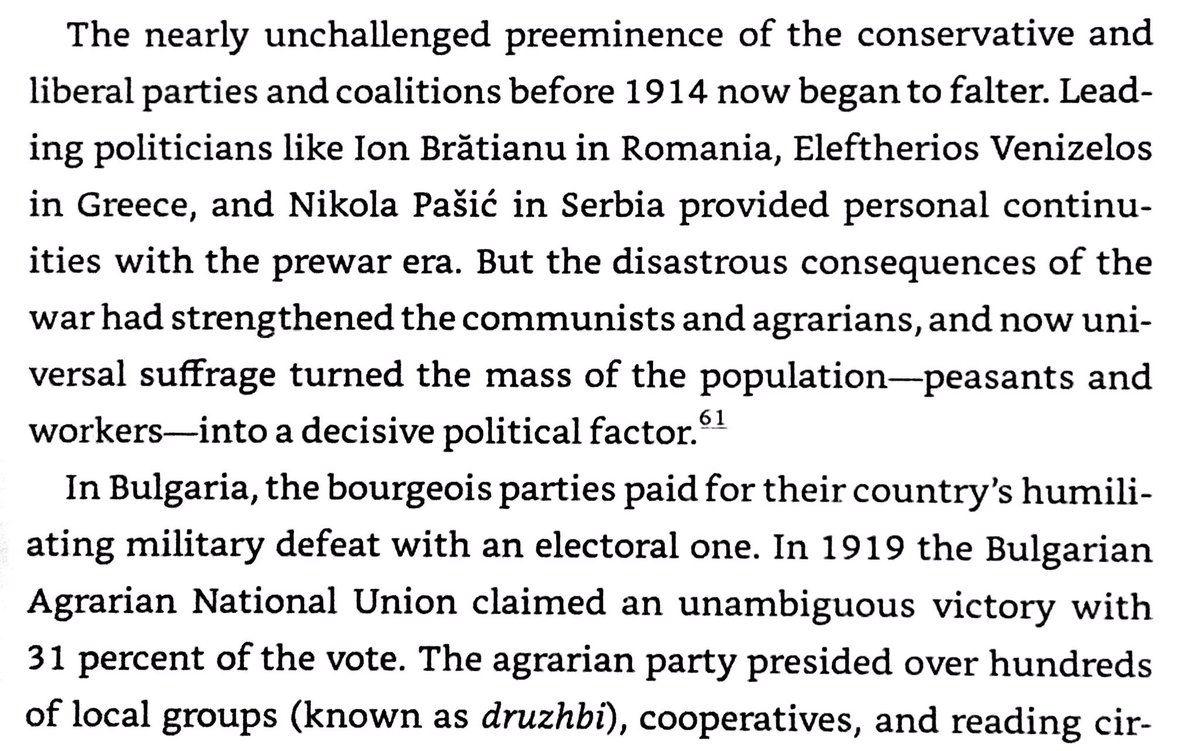
87% of Bosnia residents were illiterate in 1910, & 91.1% of landholders were Moslem. There were 5 secondary schools & no universities. 

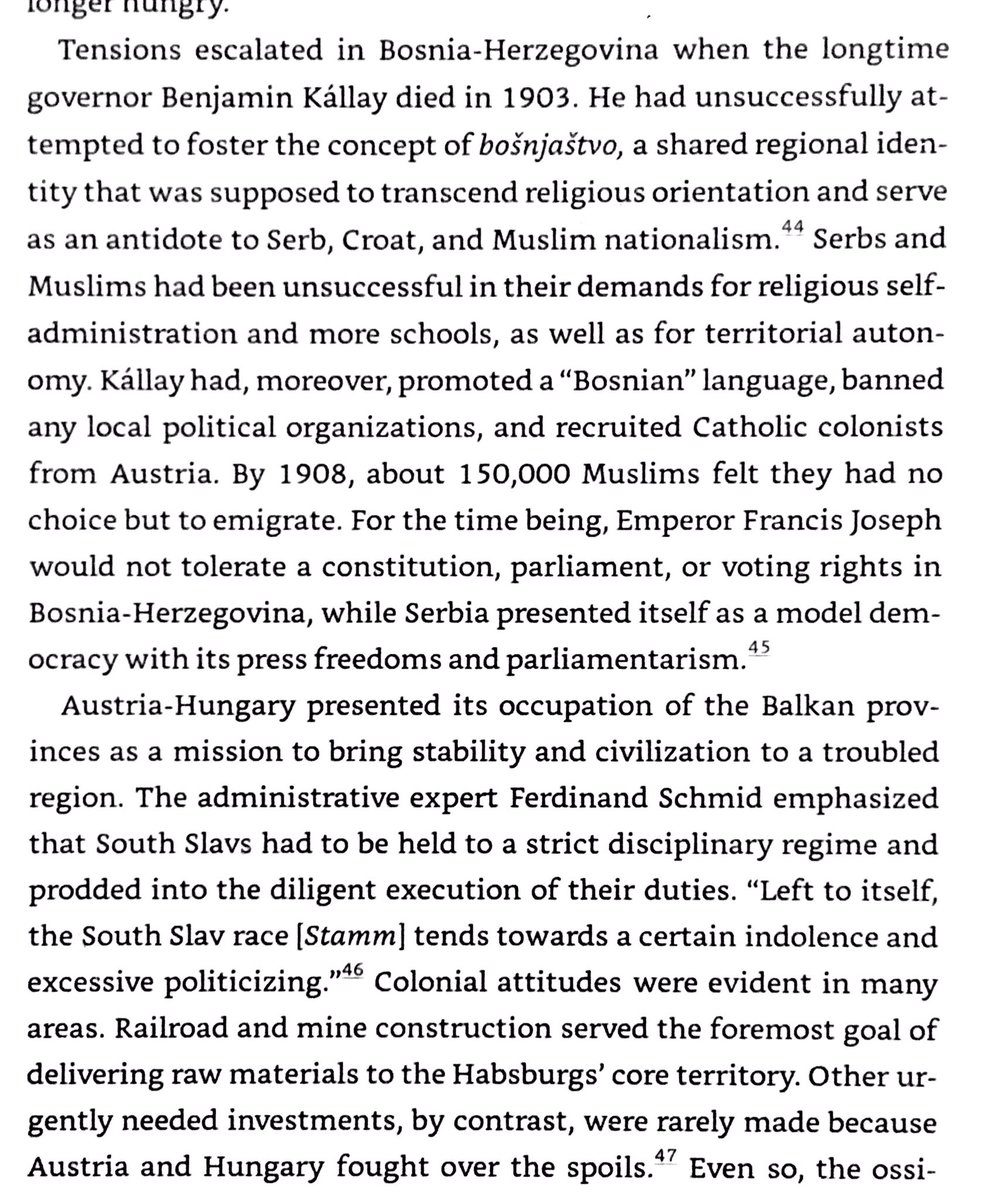
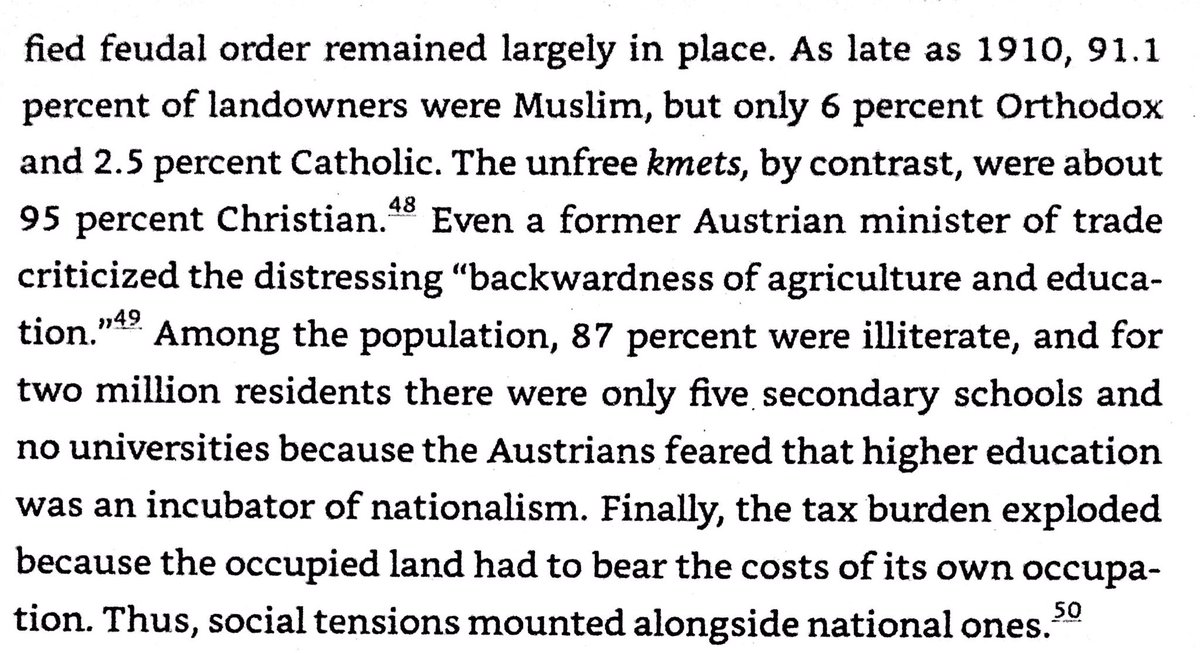
Young Turk Revolution in 1908 led Austria-Hungary to annex occupied Bosnia, Bulgaria to declare freedom, & Crete to reunite with Greece. Annexation inflamed S Slavic sentiments against Austria-Hungary, & Hapsburgs rejected idea of a triune monarchy with S Slav representation. 



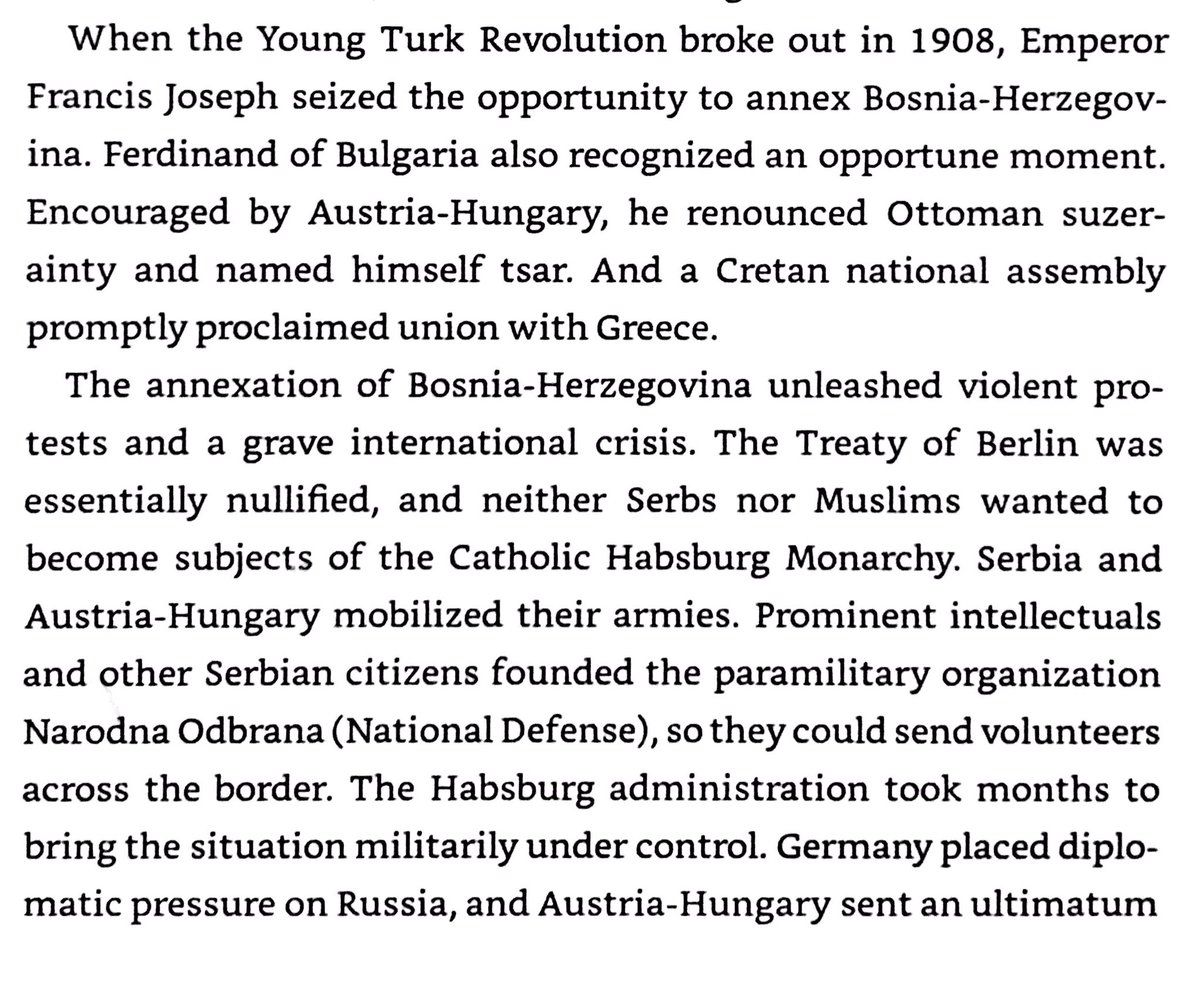
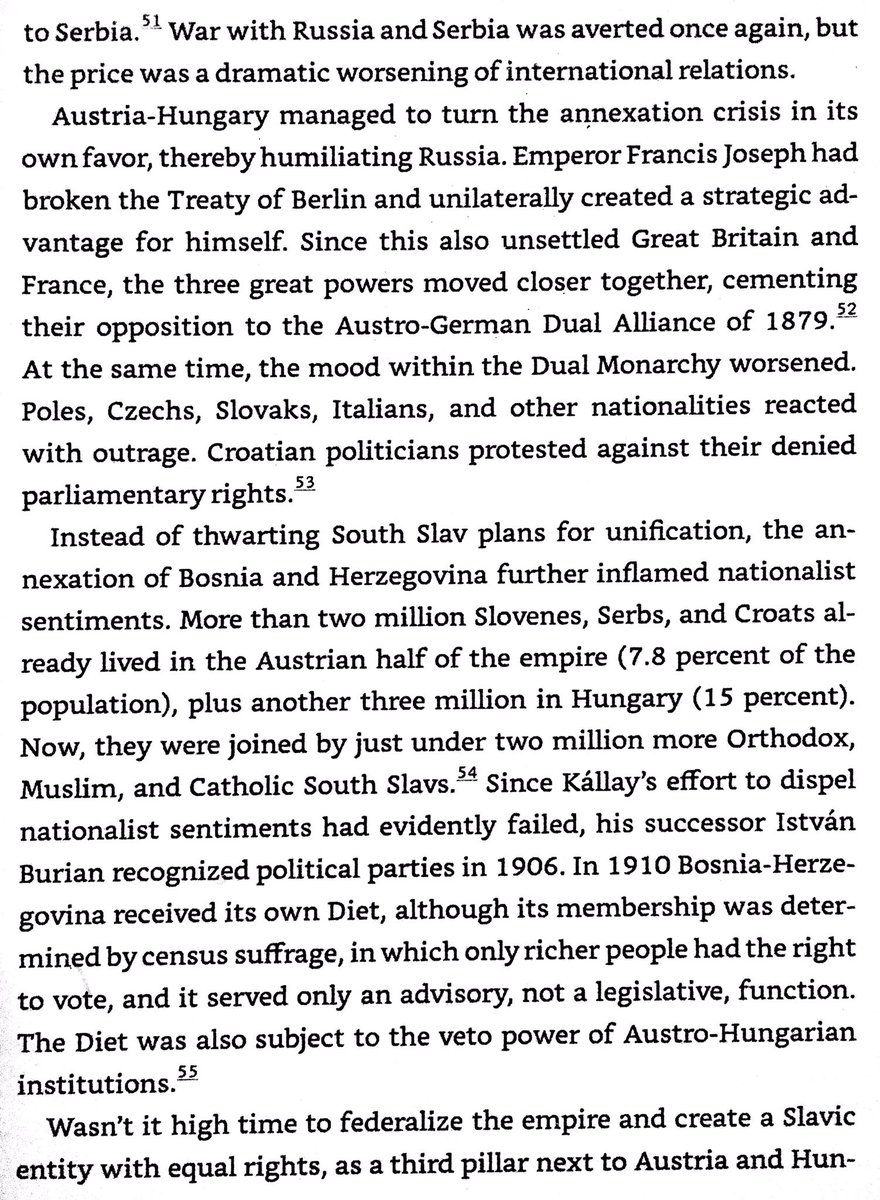
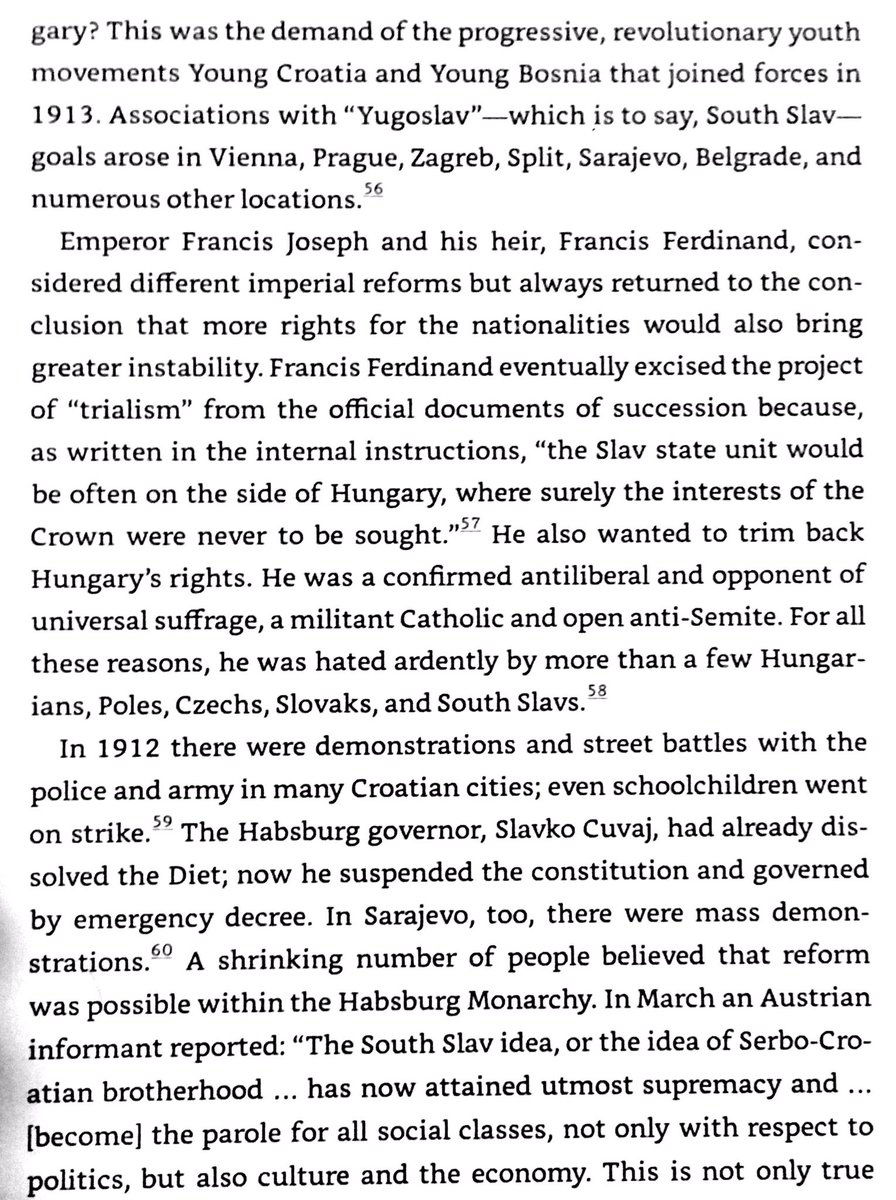

738,500 Balkans residents left for America 1900-1914, including 250k Greeks, 80k Bulgarians, 83k Romanians, 1.5k Serbs, 200k Slovenes & Croats. They settled in areas with preexisting immigrant communities, & sent a lot of money back home. 



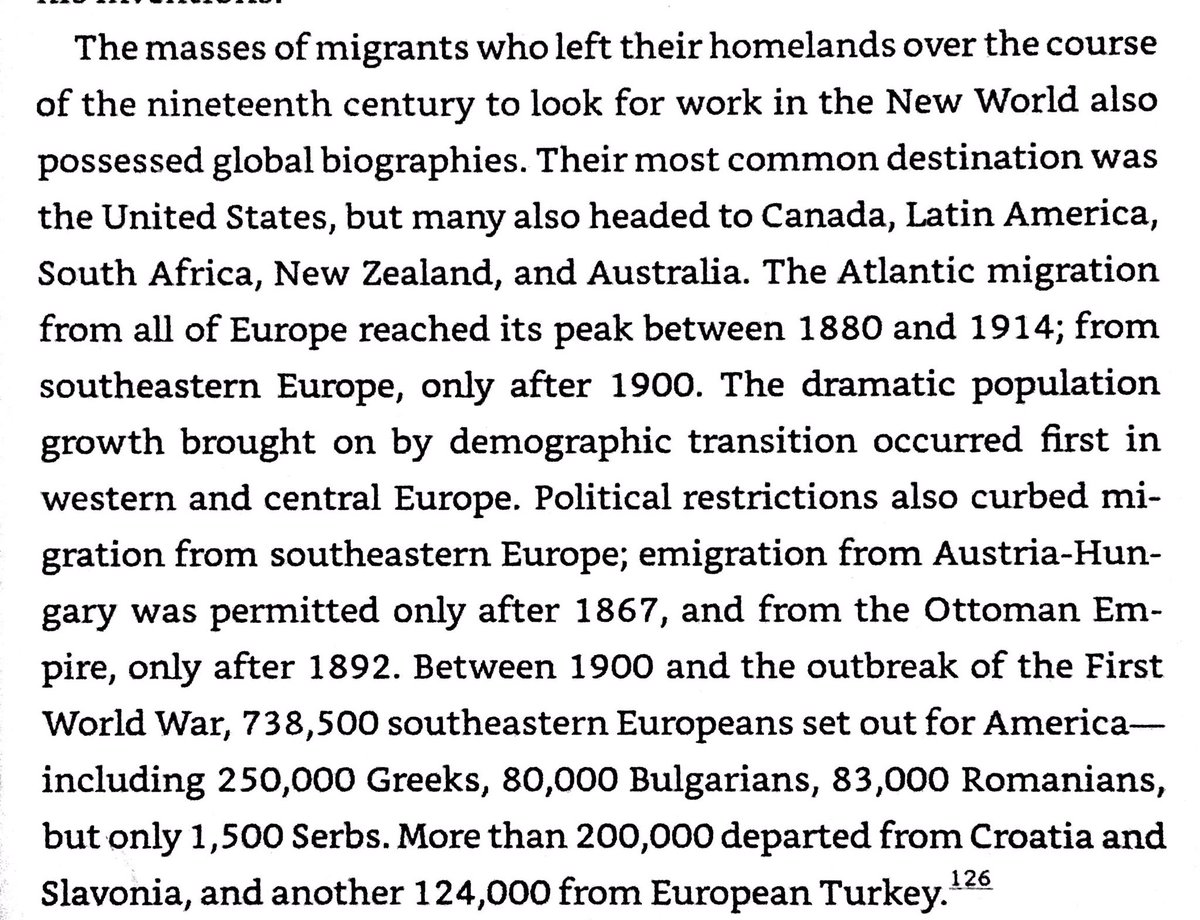
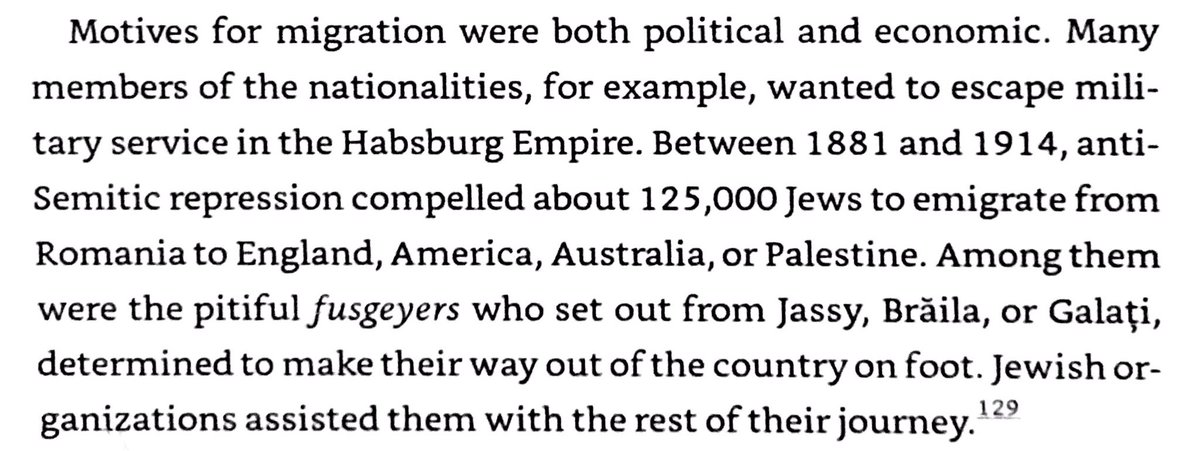
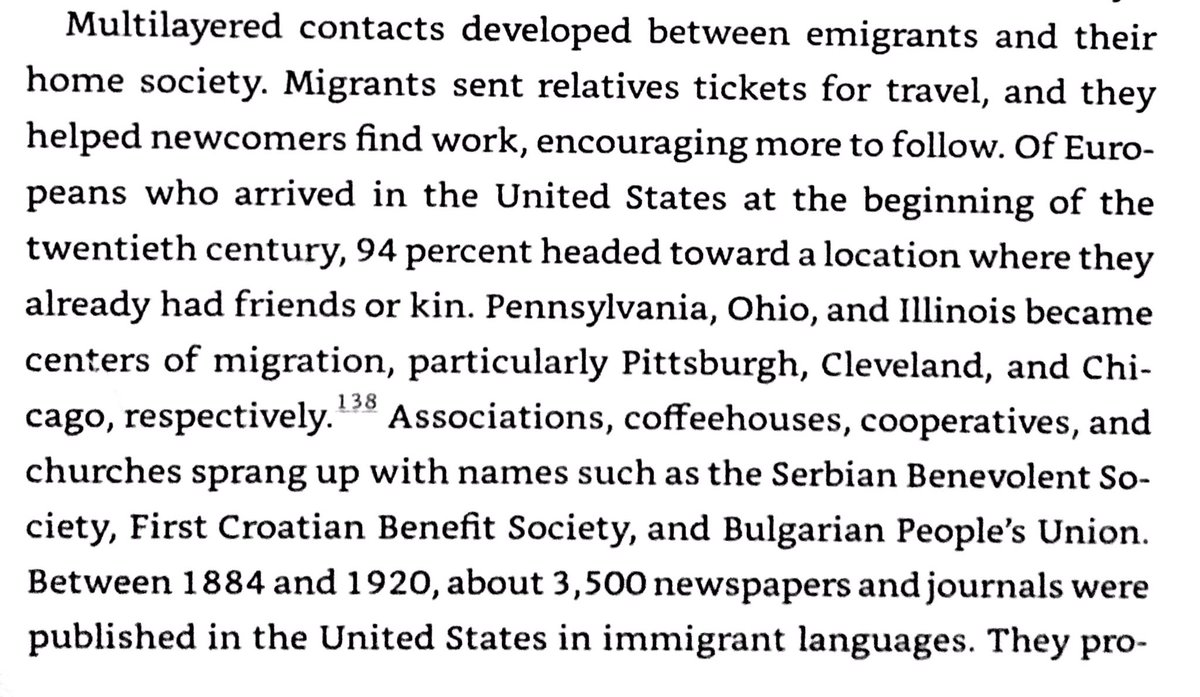

Balkan states ended up greatly indebted to Western banks, mostly due to railway construction. Investment was lacking, & Western countries used their more advanced economies to dominate the Balkans. In 1890s Balkan states adopted protectionist policies to combat that. 



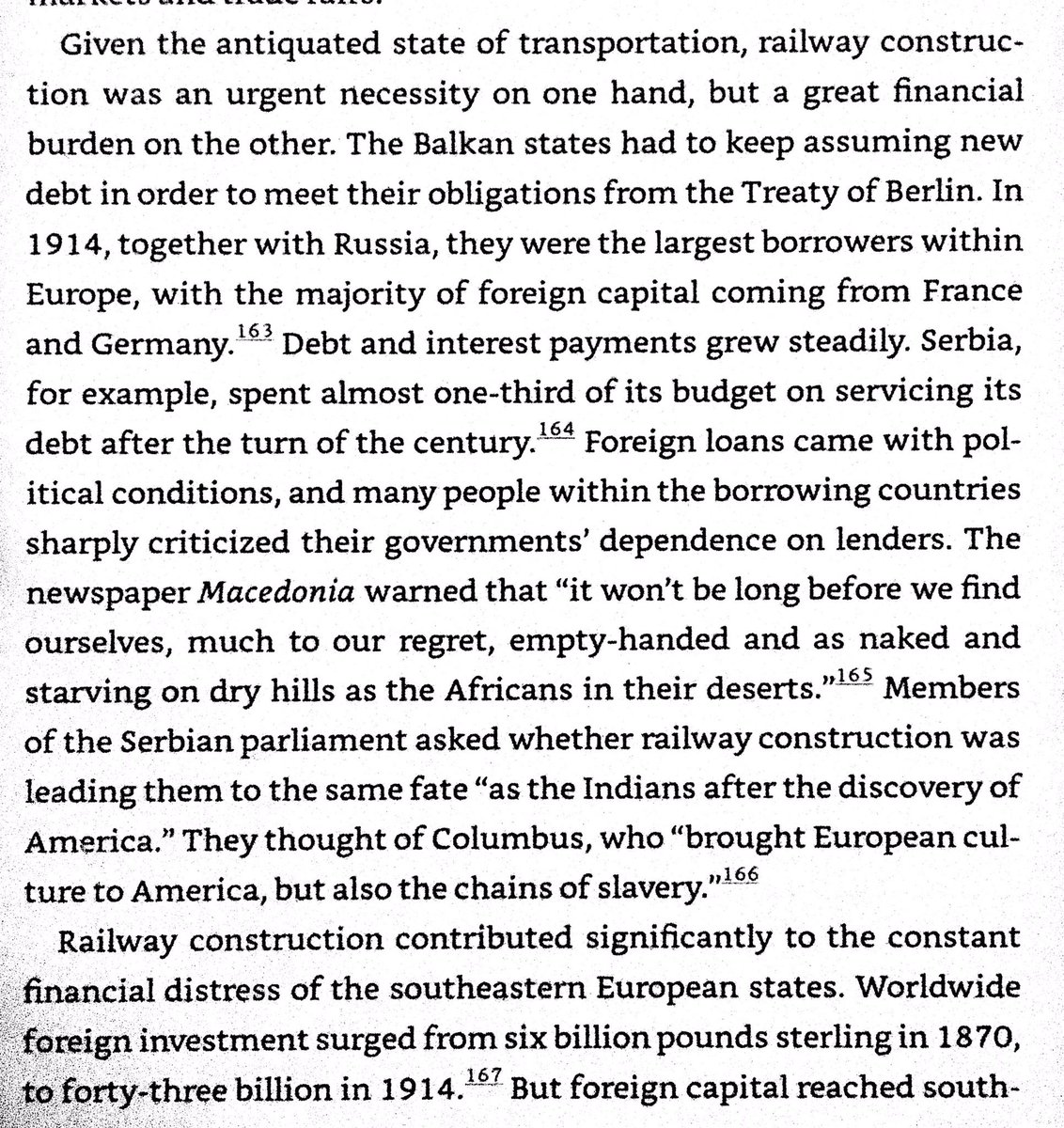
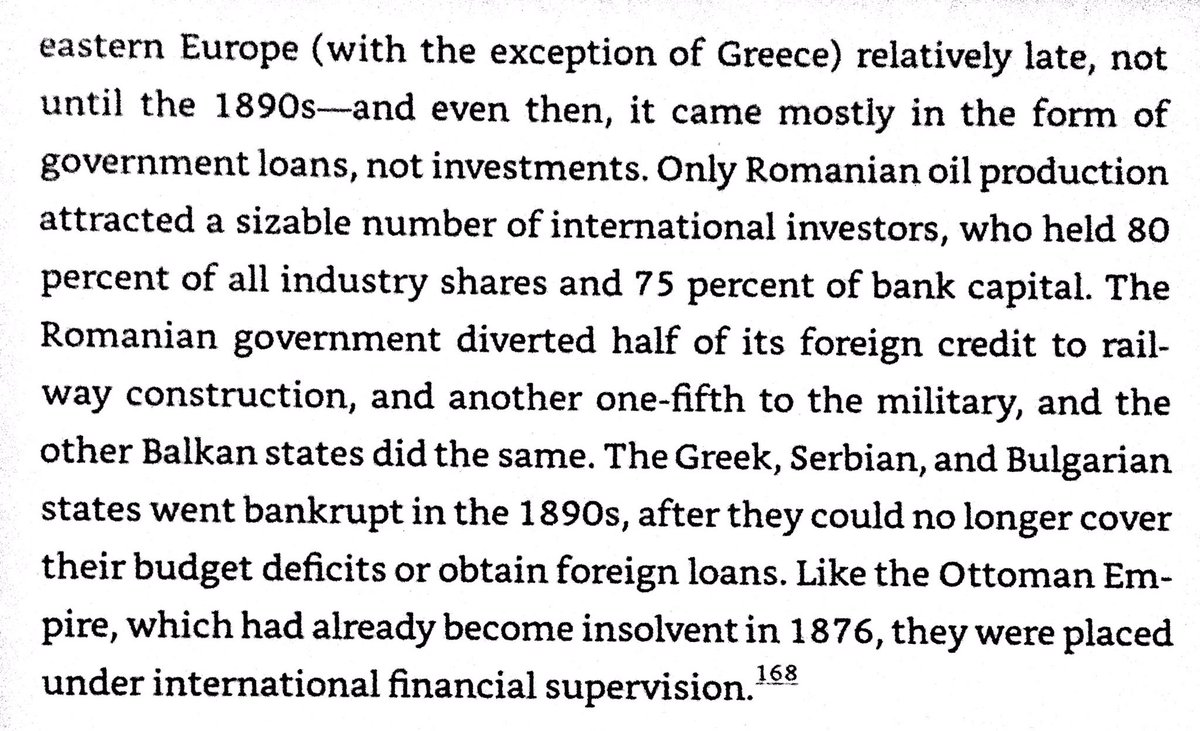

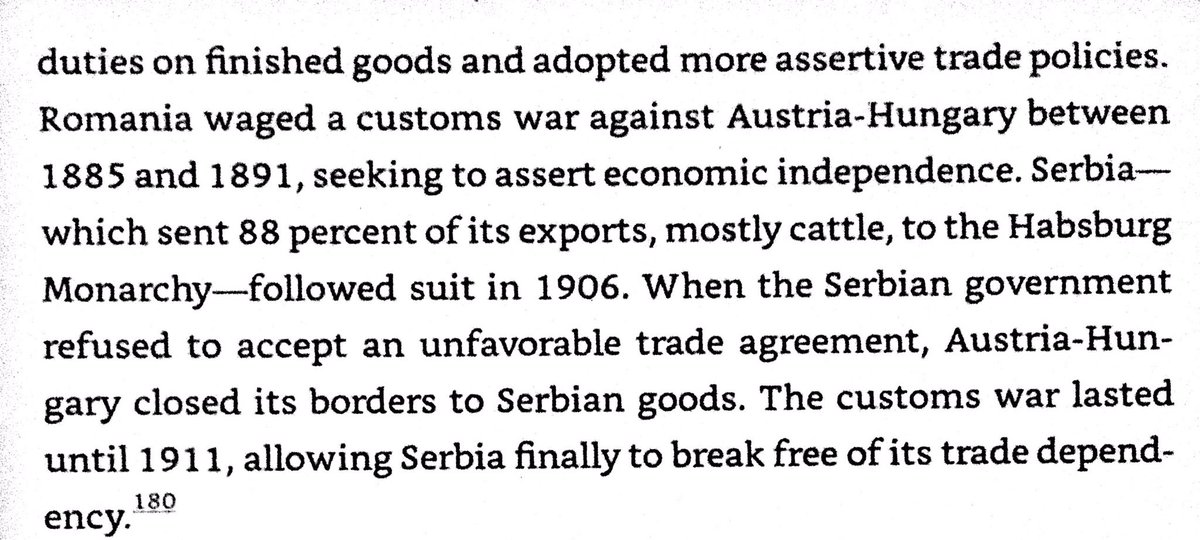
Industrialization of Balkans from 1890s to WWI successfully reduced reliance on imported manufactured goods & improved per capita GDP, but gap in production between Western states & Balkan states still increased. 



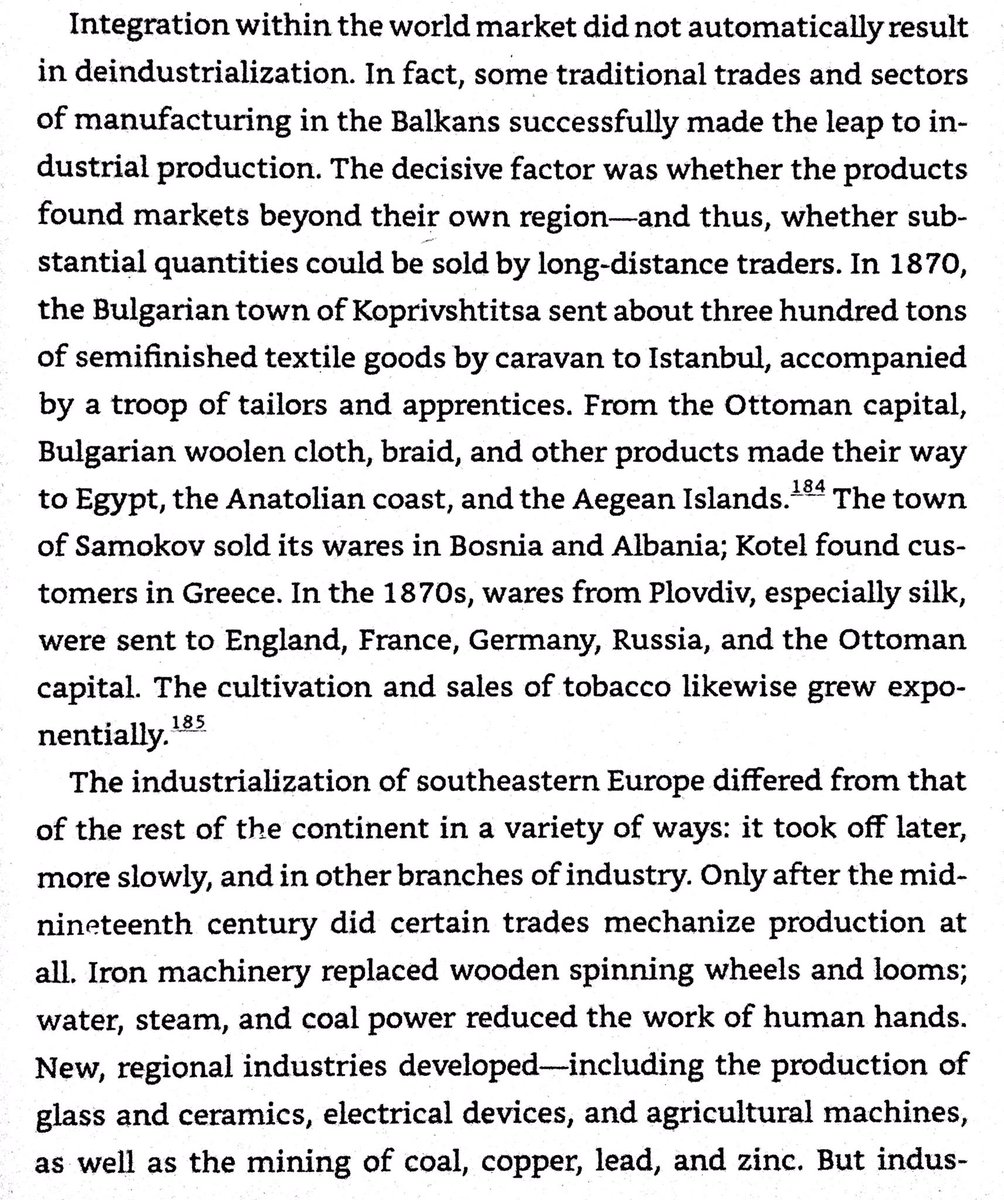

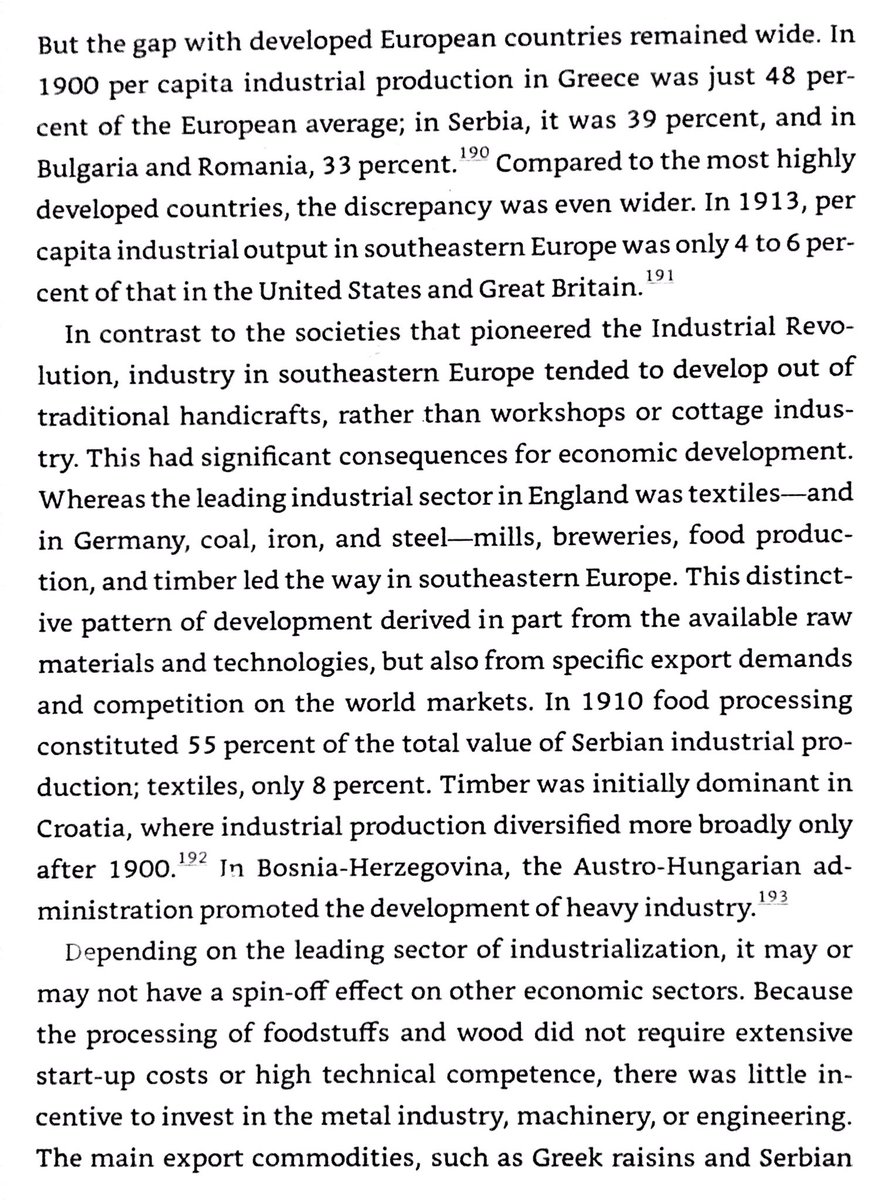
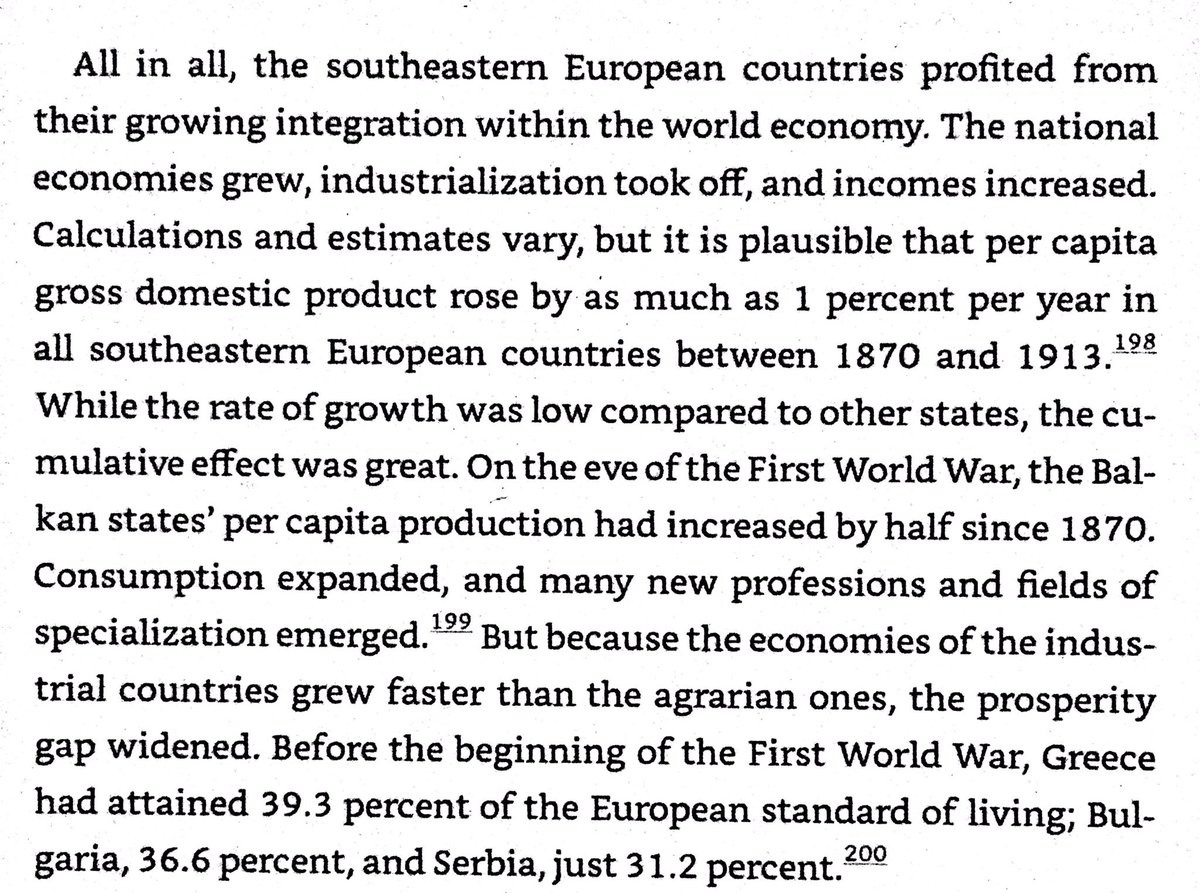
1912 🇷🇸🇬🇷🇧🇬🇲🇪 went to war with 🇹🇷& conquered most of 🇹🇷’s European territories by 1913. One month later 🇧🇬 went to war with 🇷🇸 & 🇬🇷 over the spoils - 🇧🇬 lost. 🇷🇸 had made huge gains, but was overstretched & surrounded by bitter enemies. 



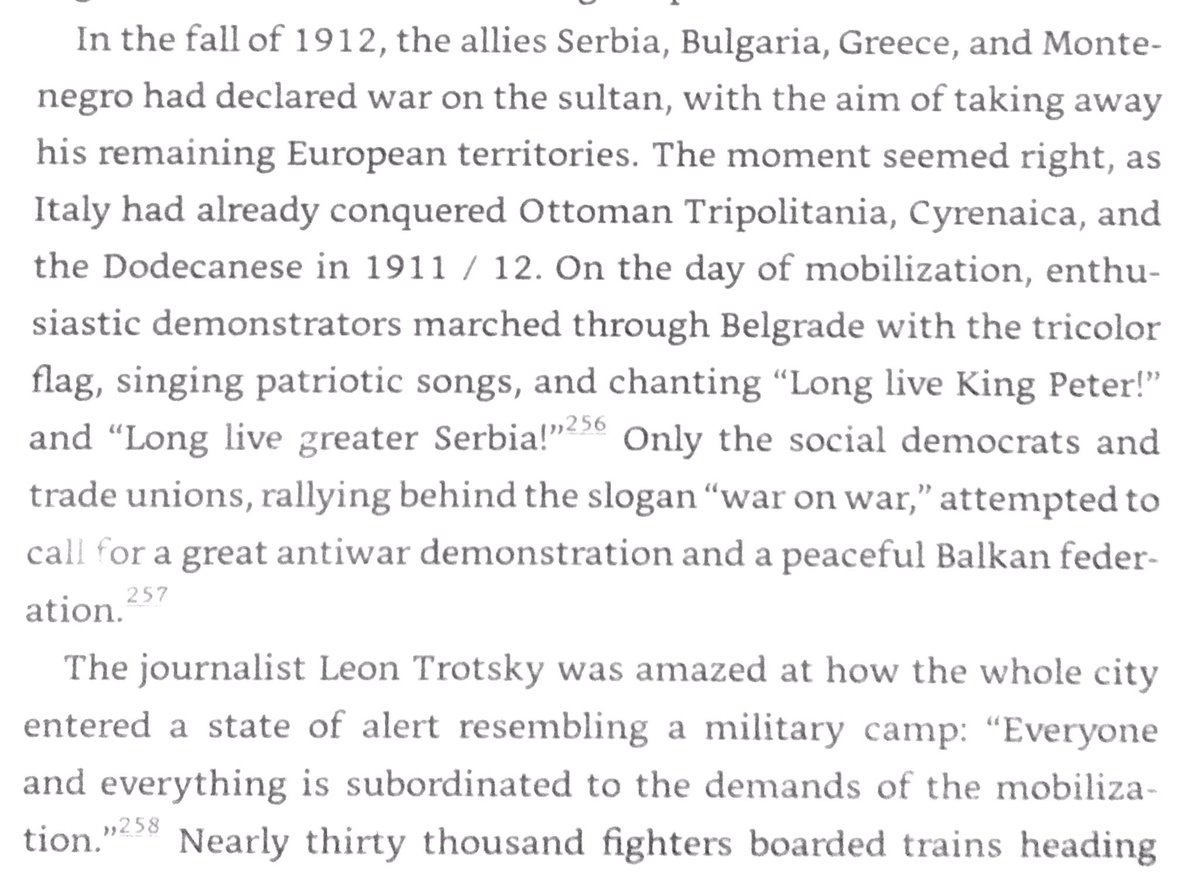
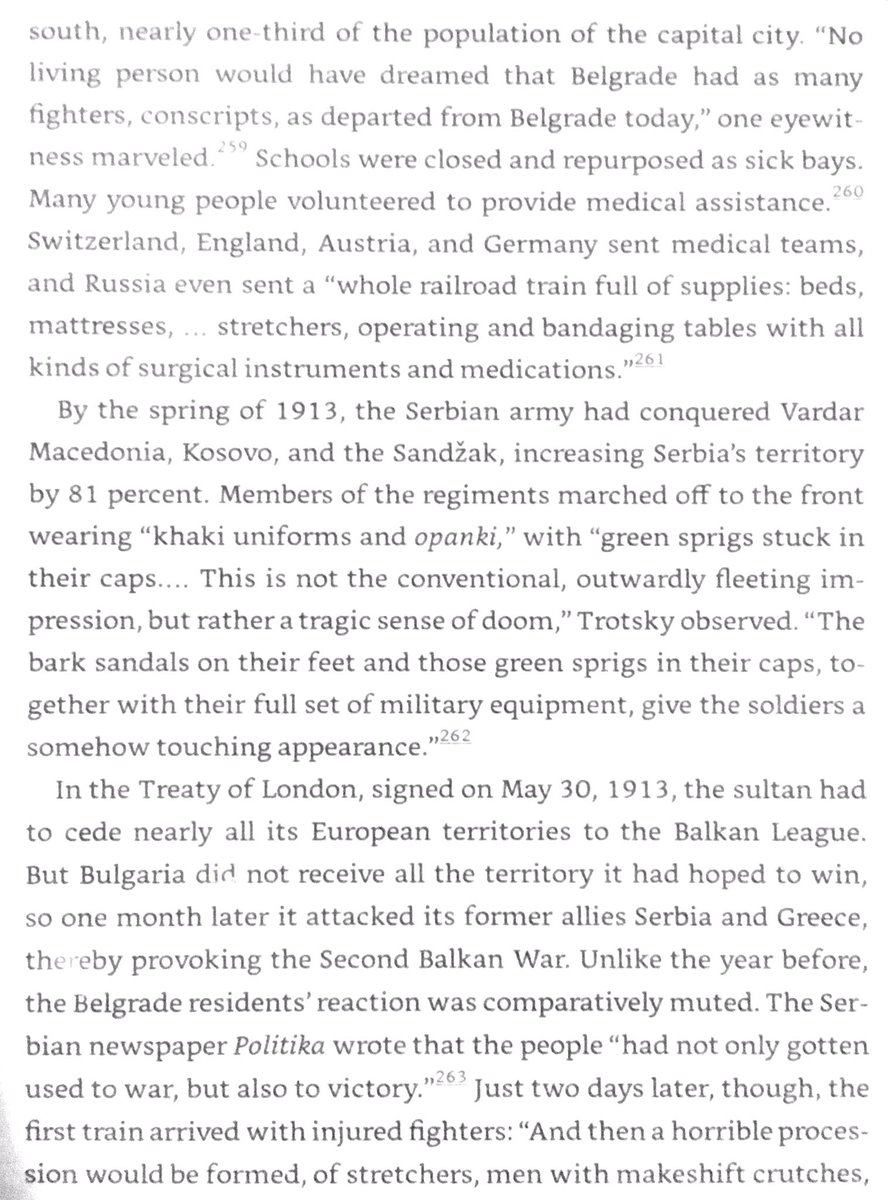
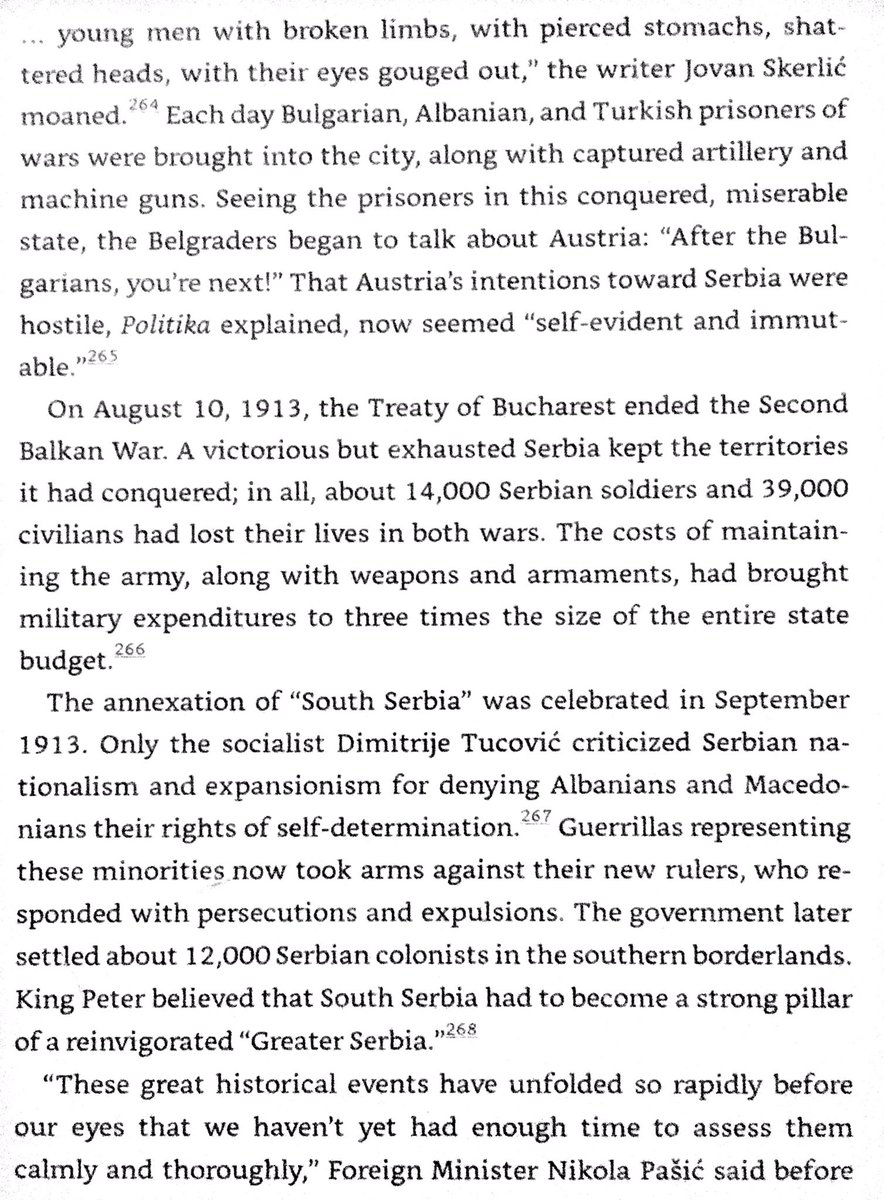
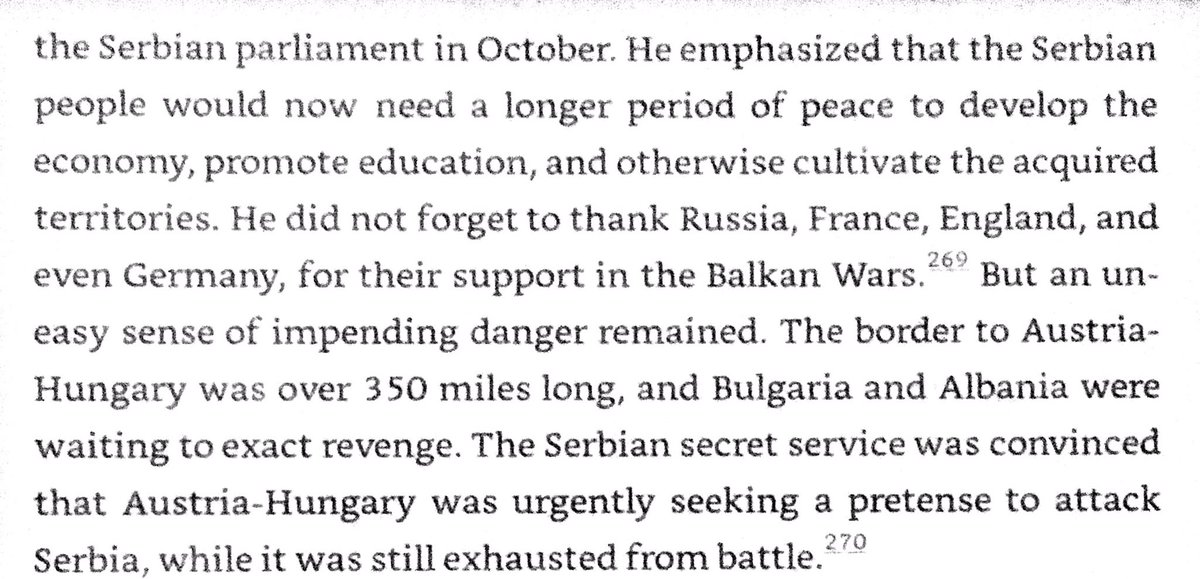
Black Hand was a Serb officers association which had killed the Obrenovic dynasty King of Serbia in 1903 & installed the Karadjordje dynasty to the throne. They equipped Gavrilo Princip & his crew, the assassins of Archduke Franz Ferdinand. 

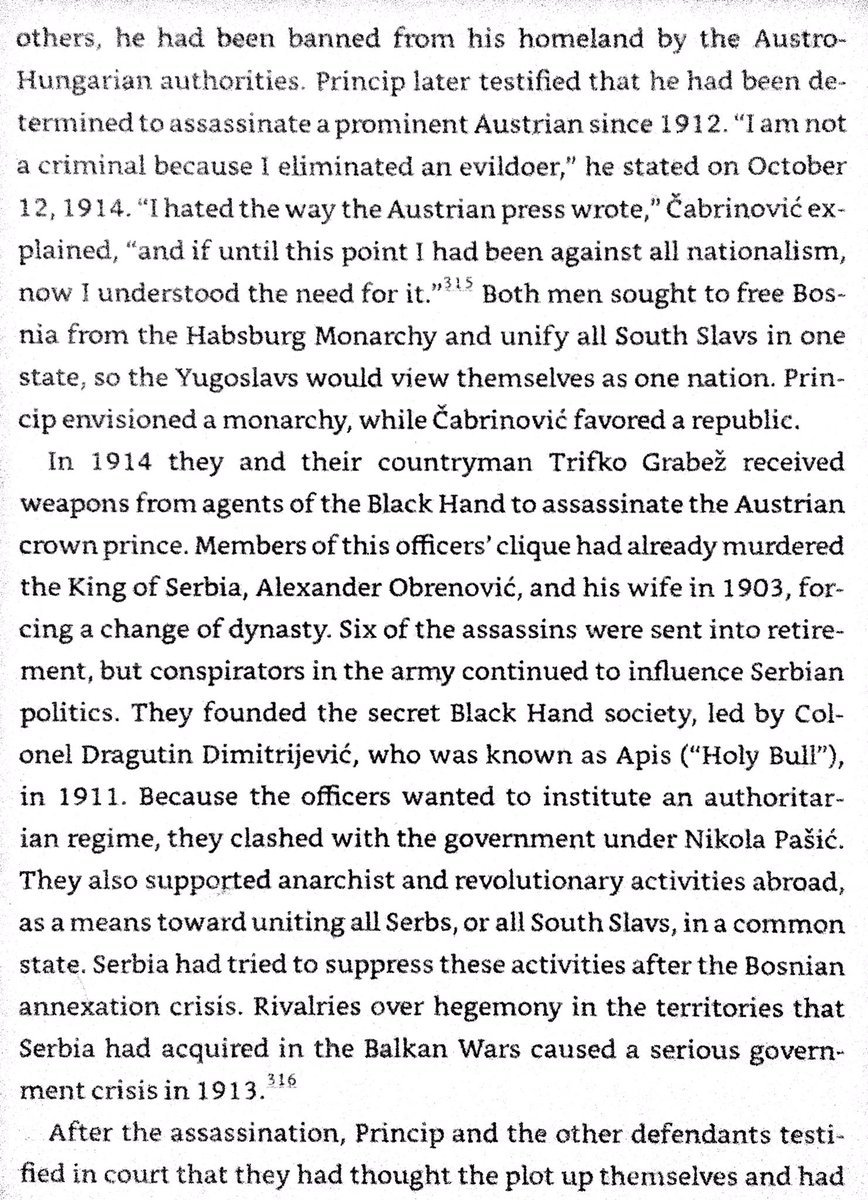
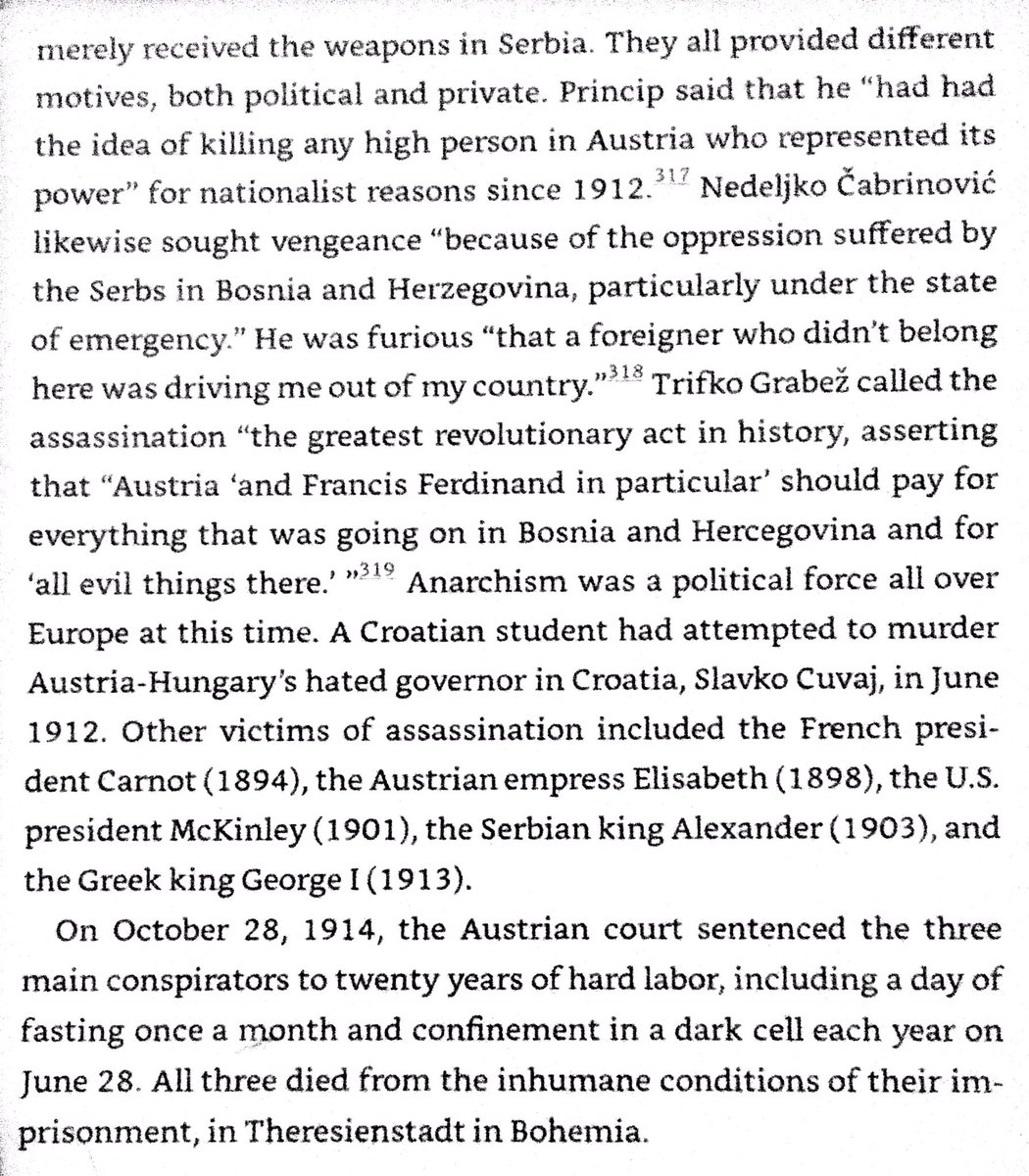
Serbia lost 16% of her population in WWI, Romania 9%, Bulgaria 3%, & Greece 3%. 20% of the Greek population were refugees. 


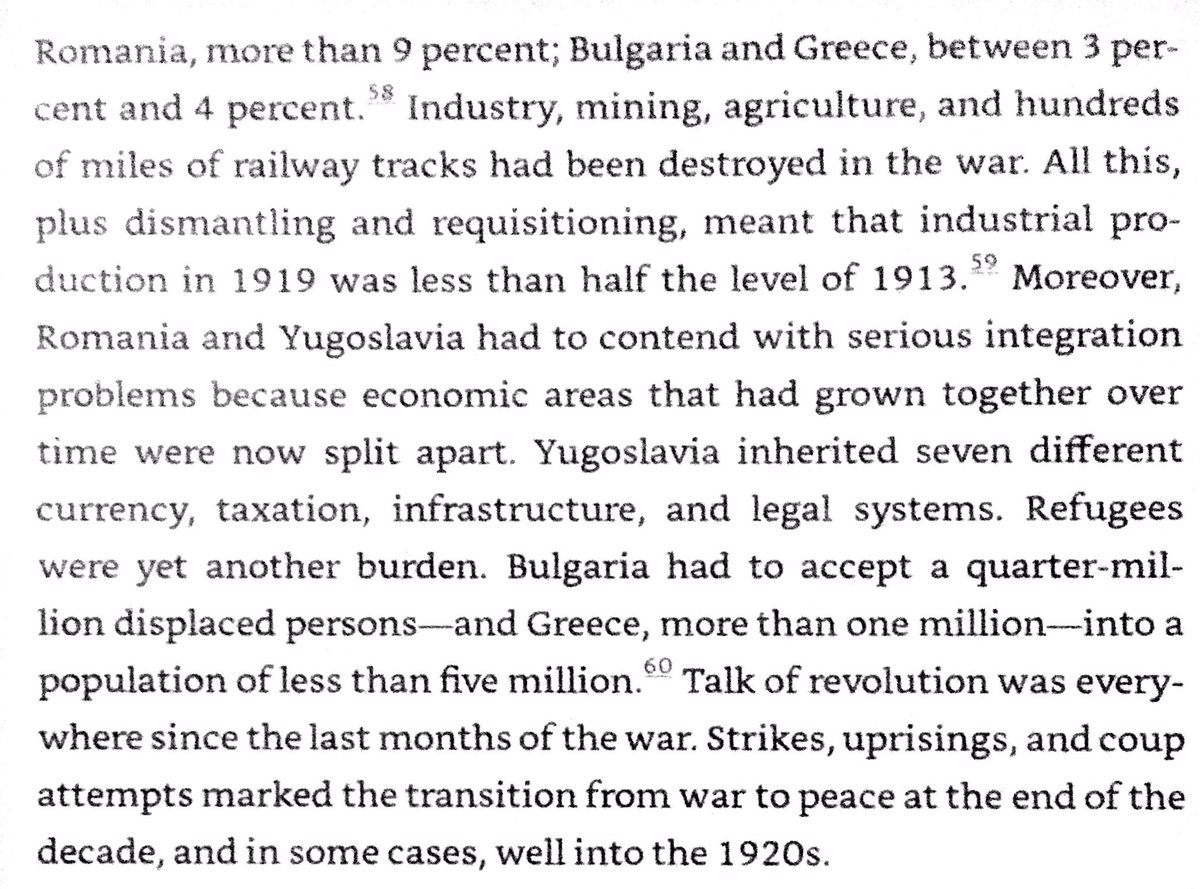
Serbs united Yugoslavia under the principle of a single South Slavic people comprised of three tribes - Serbs, Croats, & Slovenes. Romanian territorial gains left her only 73% Romanian, with some of her cities dominated by foreigners. 

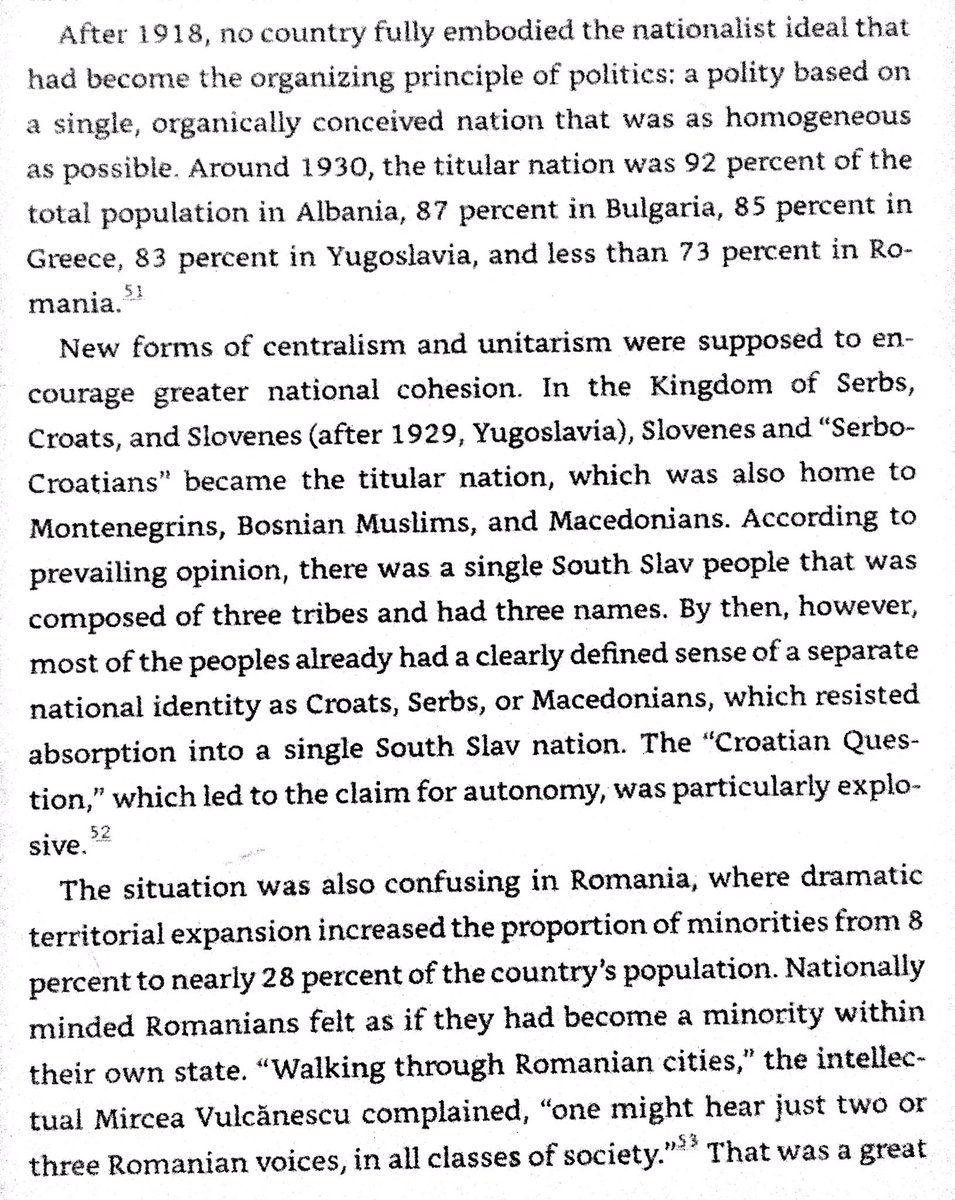
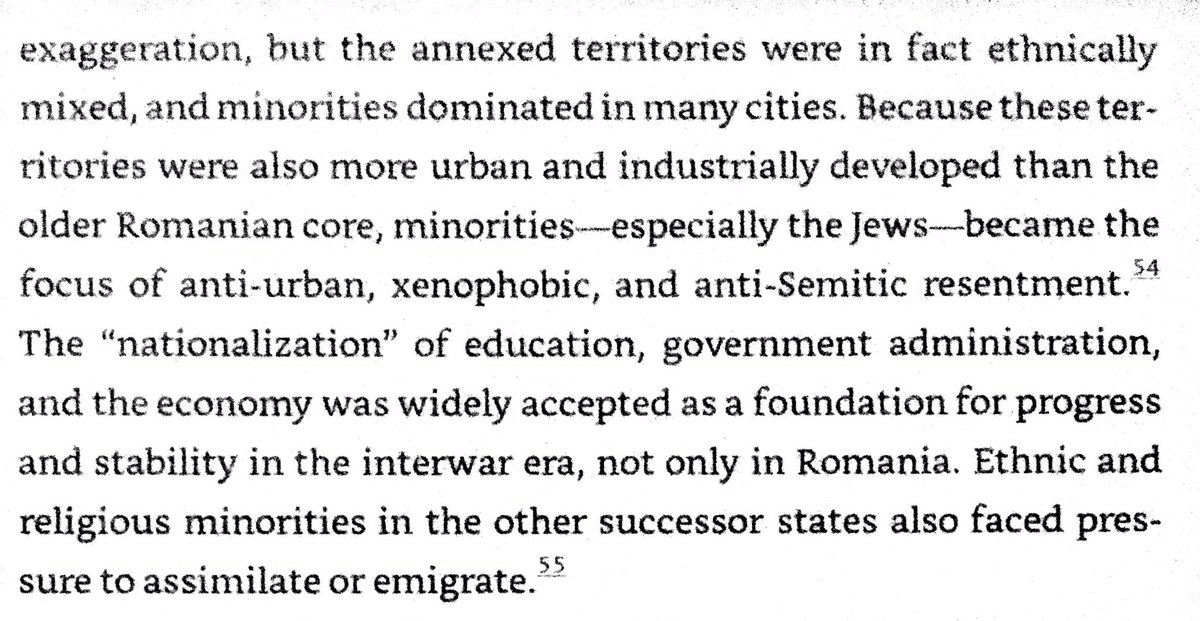
Agrarians won elections in Bulgaria in 1919 & 1923 & embarked on successful modernization program. They offended the middle classes, Macedonian militants, church, & tsar with extra-parliamentary committees & paramilitaries. 1923 coup tortured him to death for his peace treaty. 


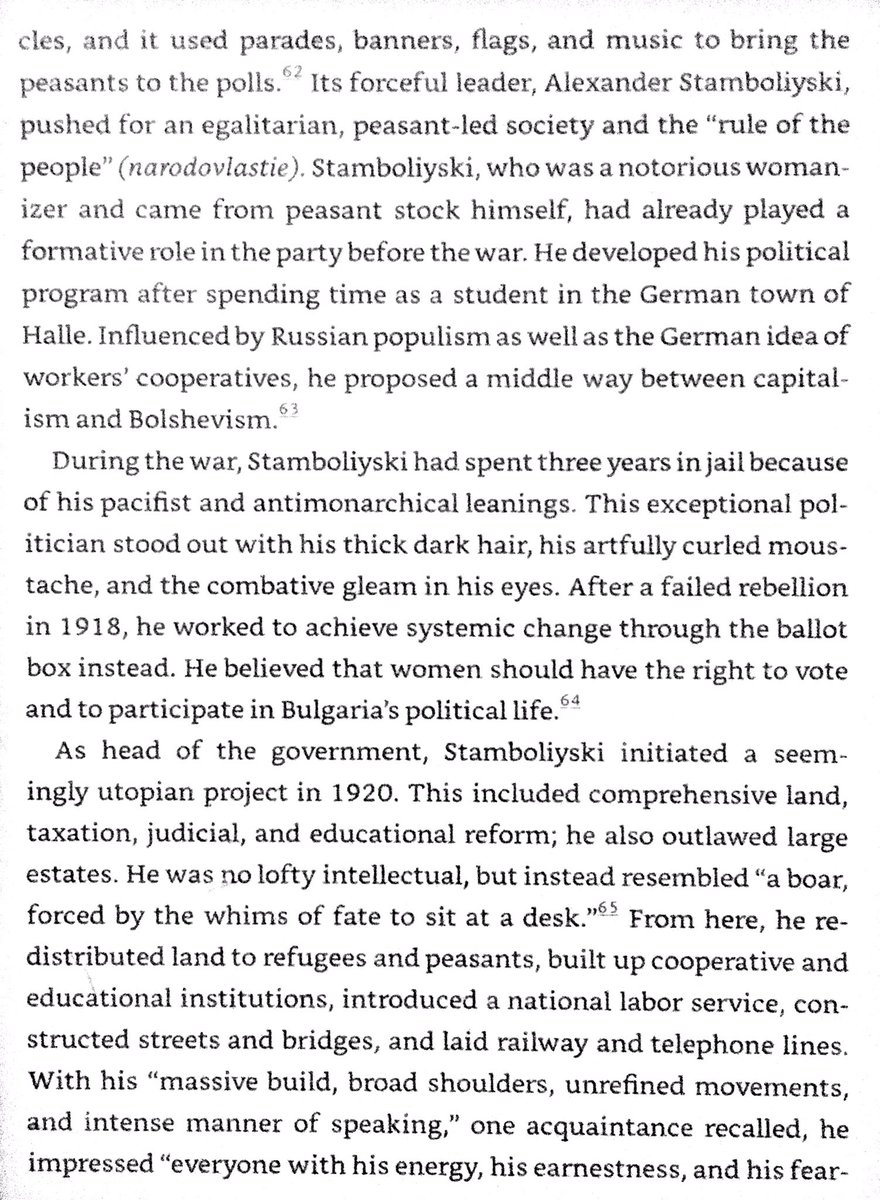
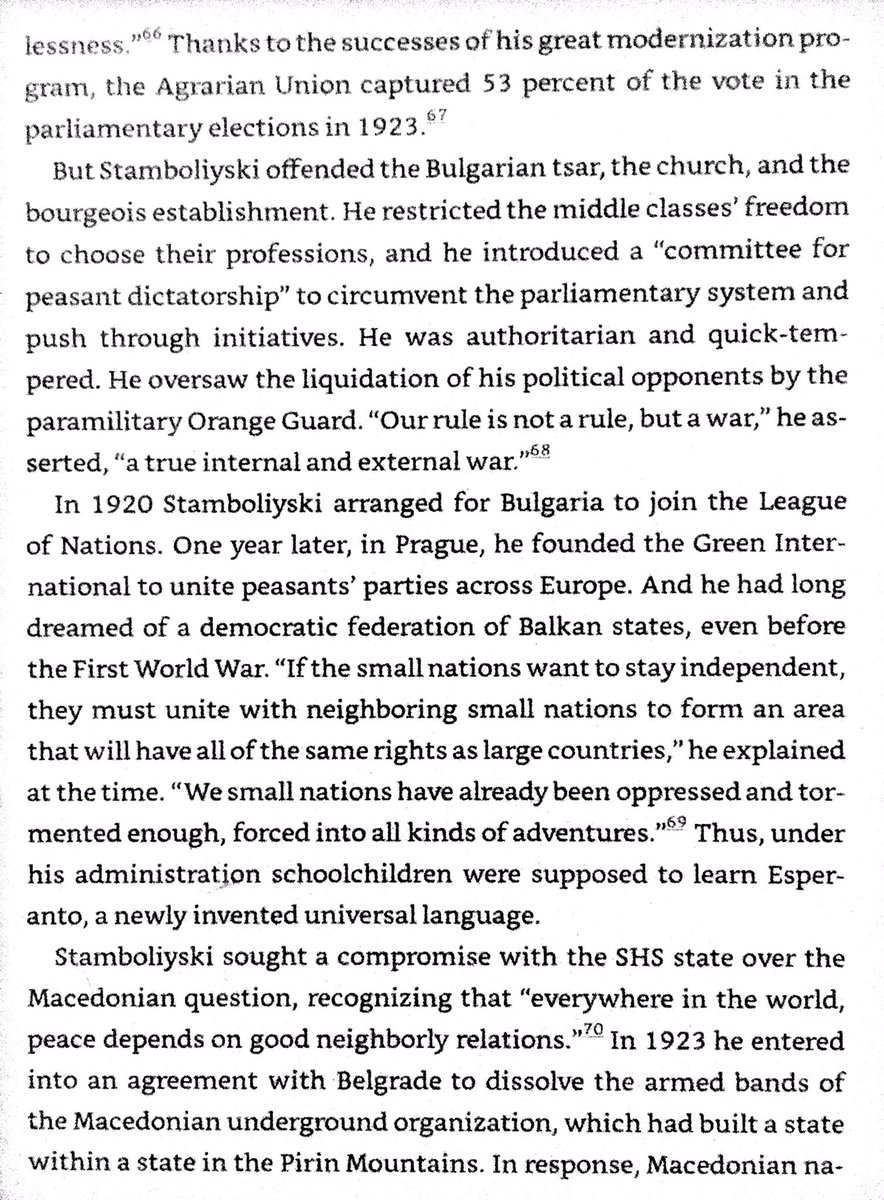
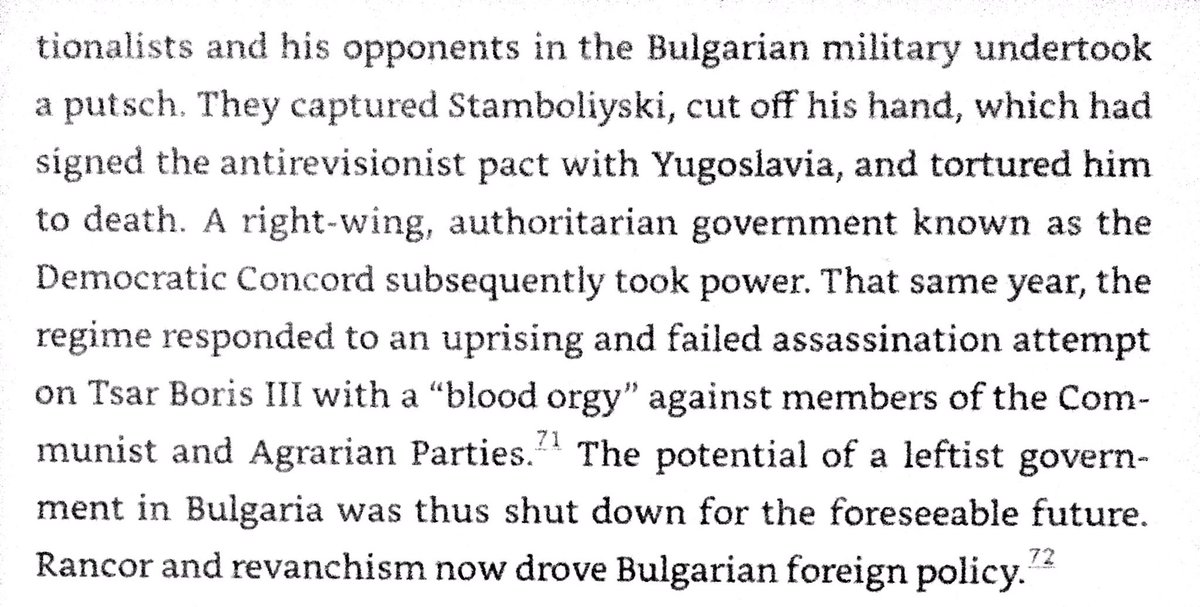
Foreign troops occupied anarchic Albania for years after WWI. Tribes & landholders fought liberal bourgeois. 1924 the liberals tried to make gradual reforms, but ran into intense opposition from landholders. President Ahmet Zogu expelled liberals, then in 1928 became king. 


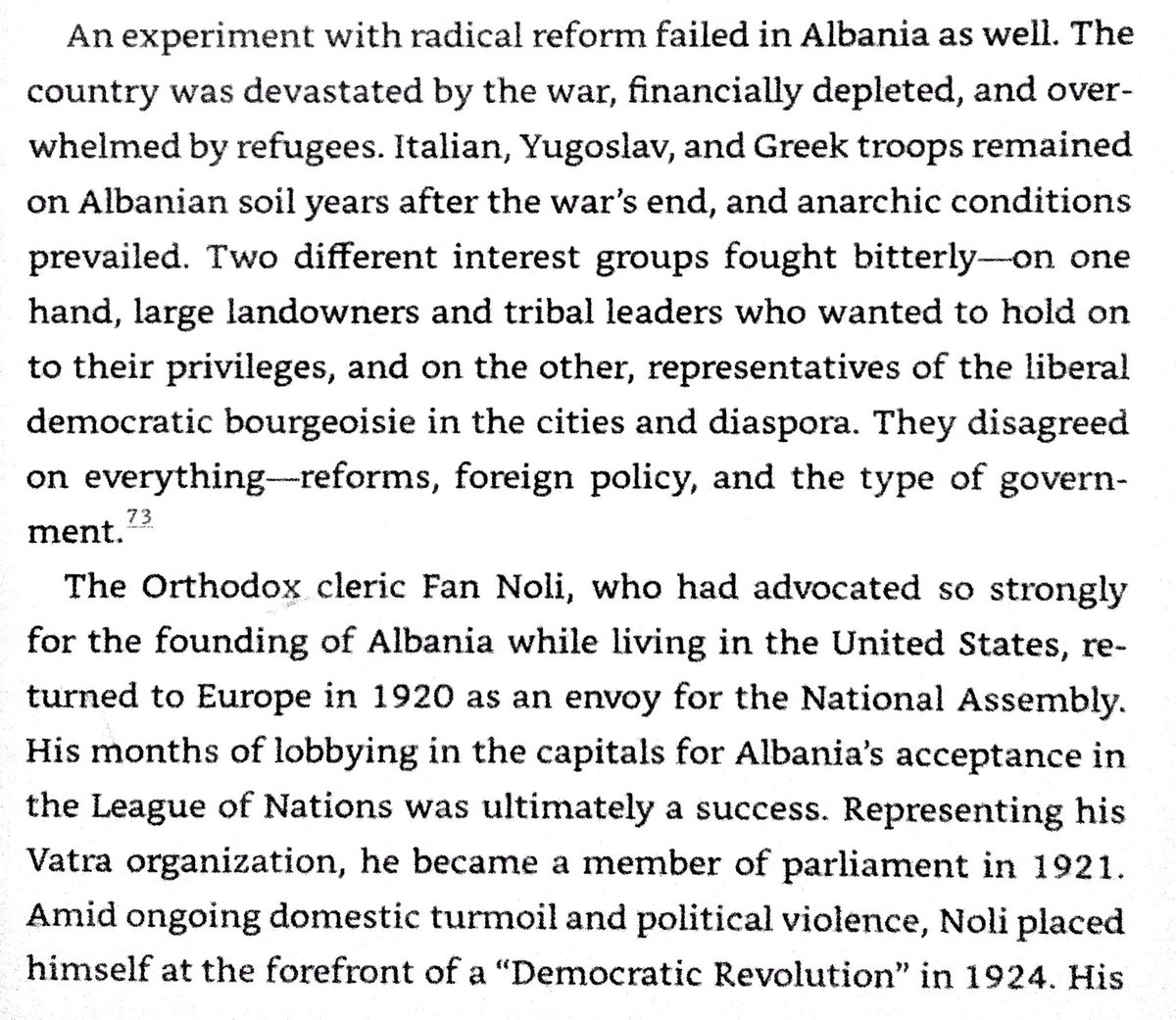
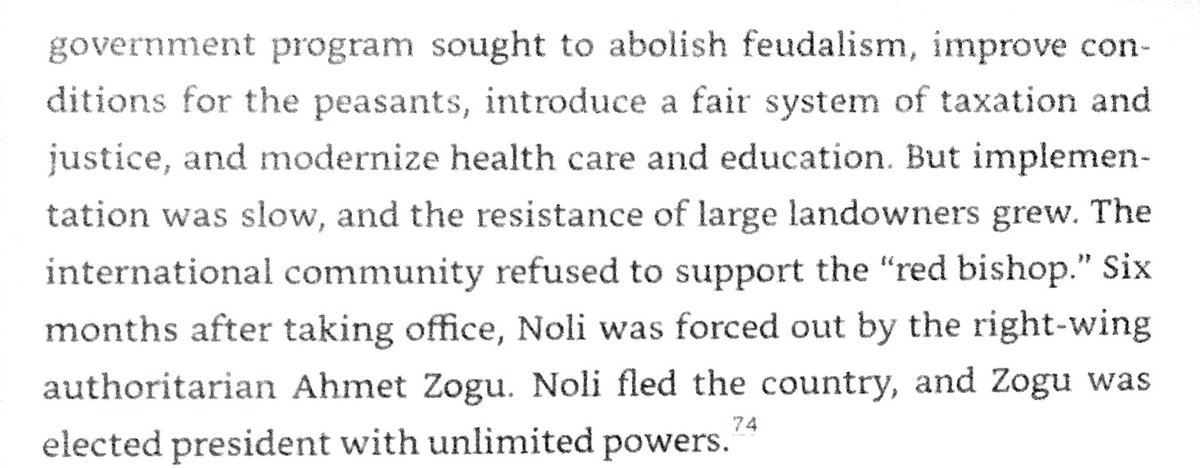

Authoritarian states of the interwar Balkans weren’t fascist, but conservative alliances of old elites, bourgeoisie, bureaucracy, & military. Romania & Croatia were the only two Balkan states with sizeable fascist movements. 


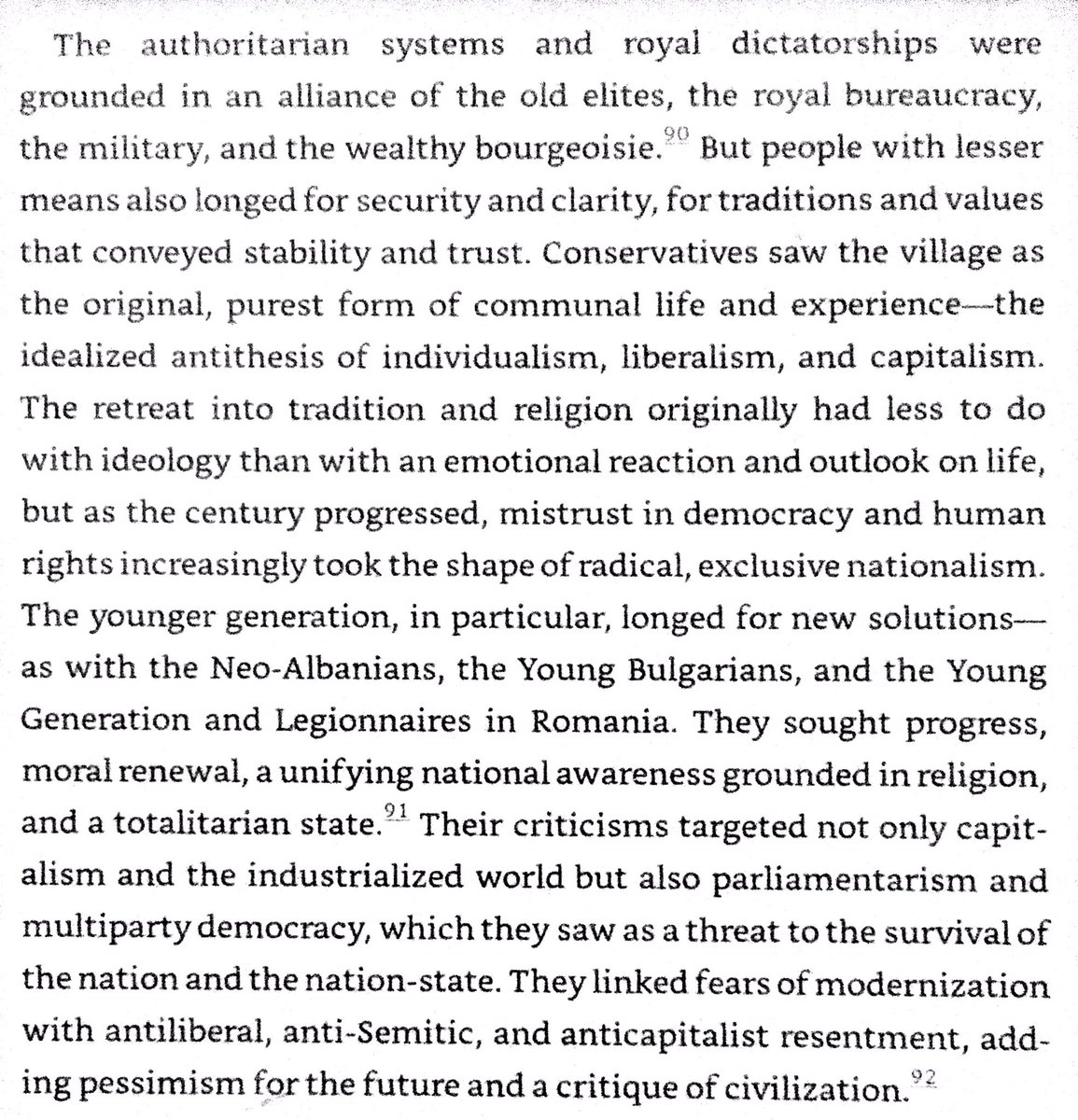
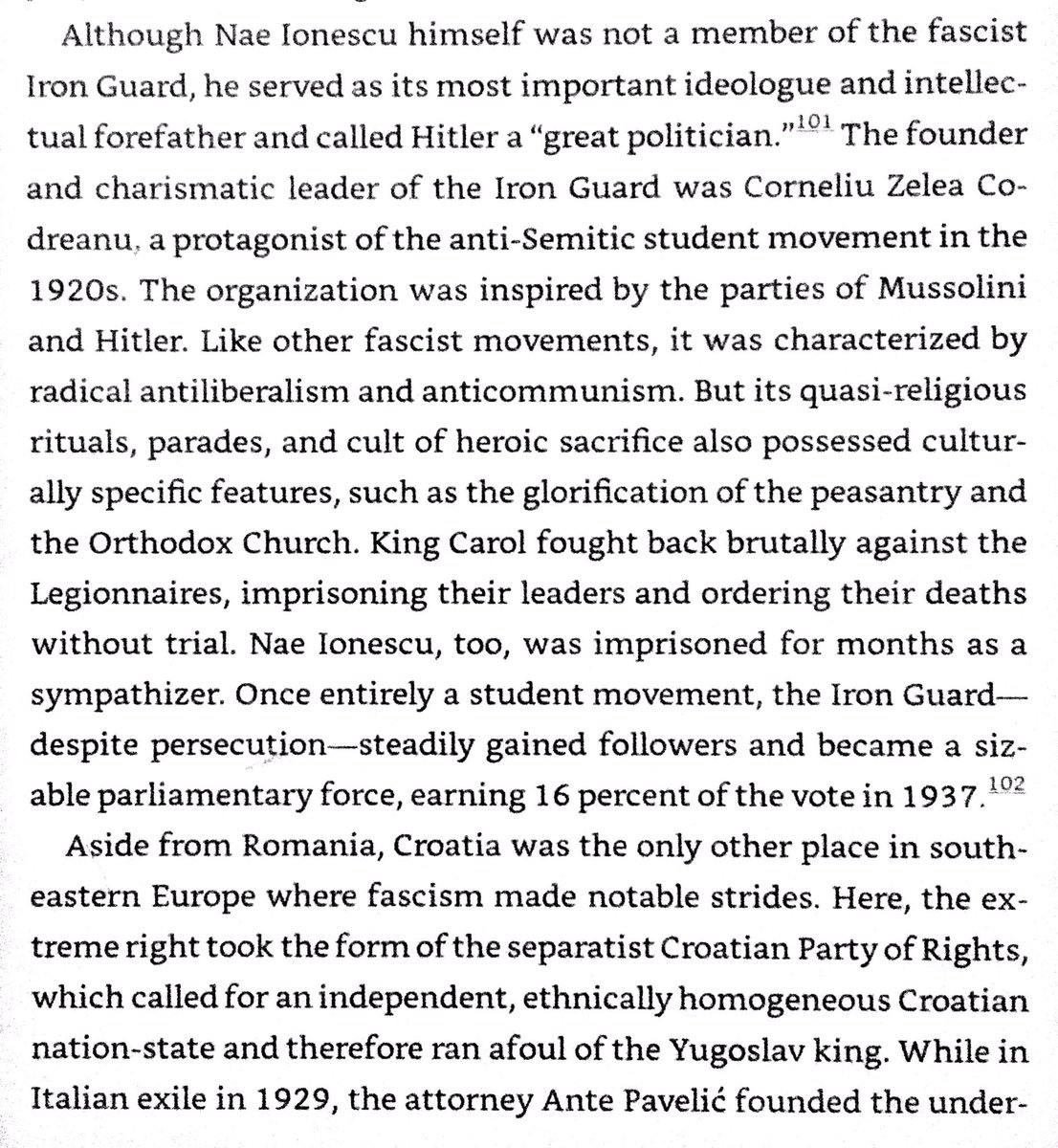
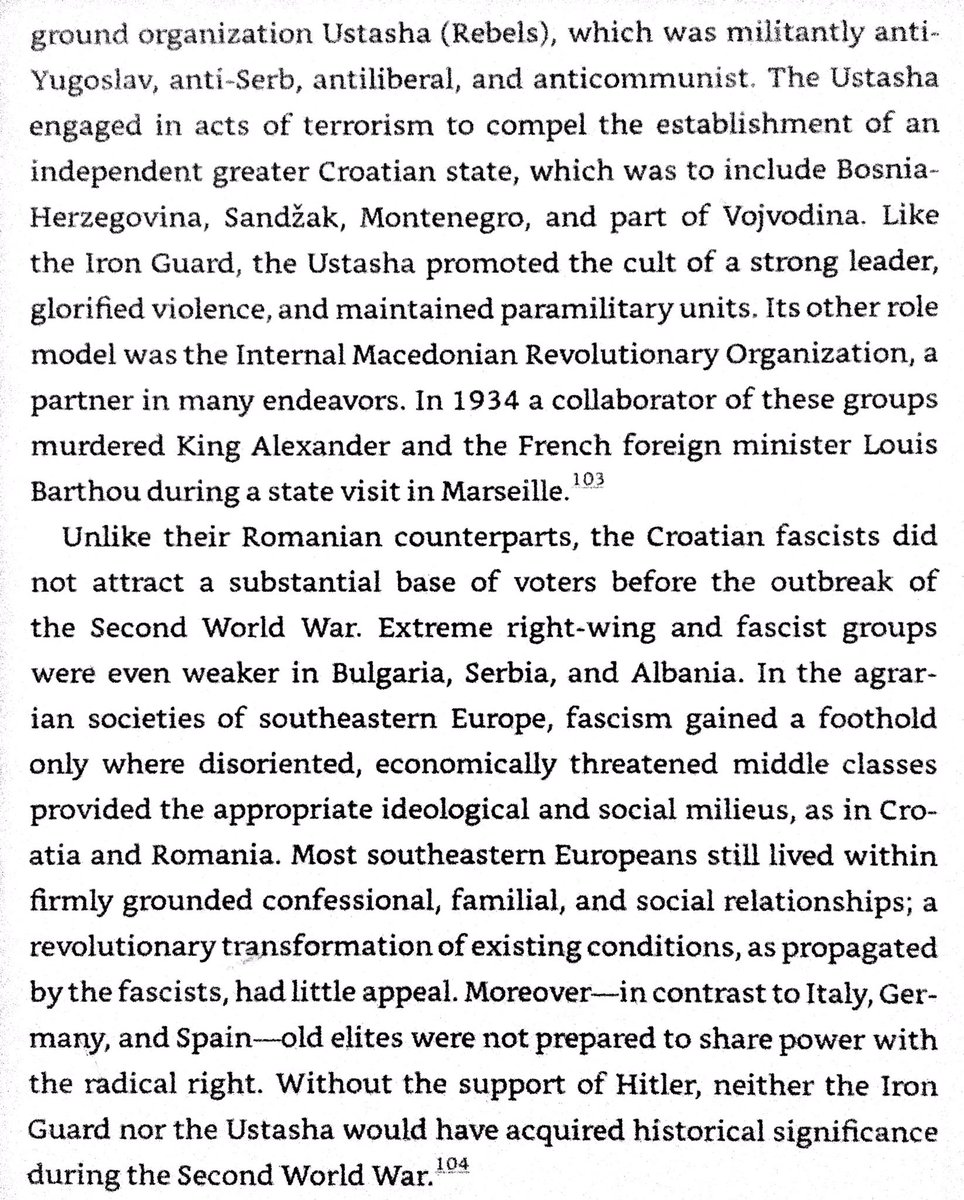
Support for a Balkans Federation among leftists. International Brigades veterans from Spanish Civil War strengthened global communist ties & formed cadres for the communist parties. 



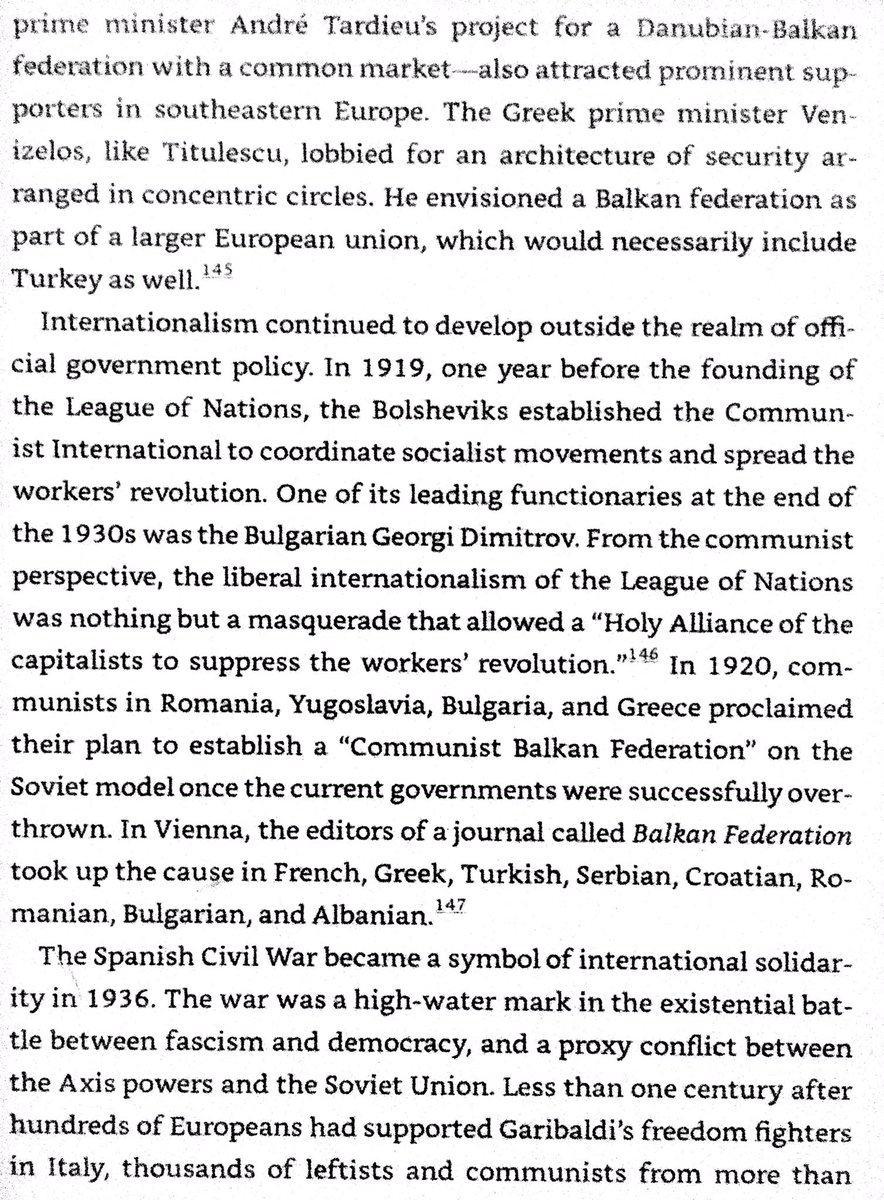
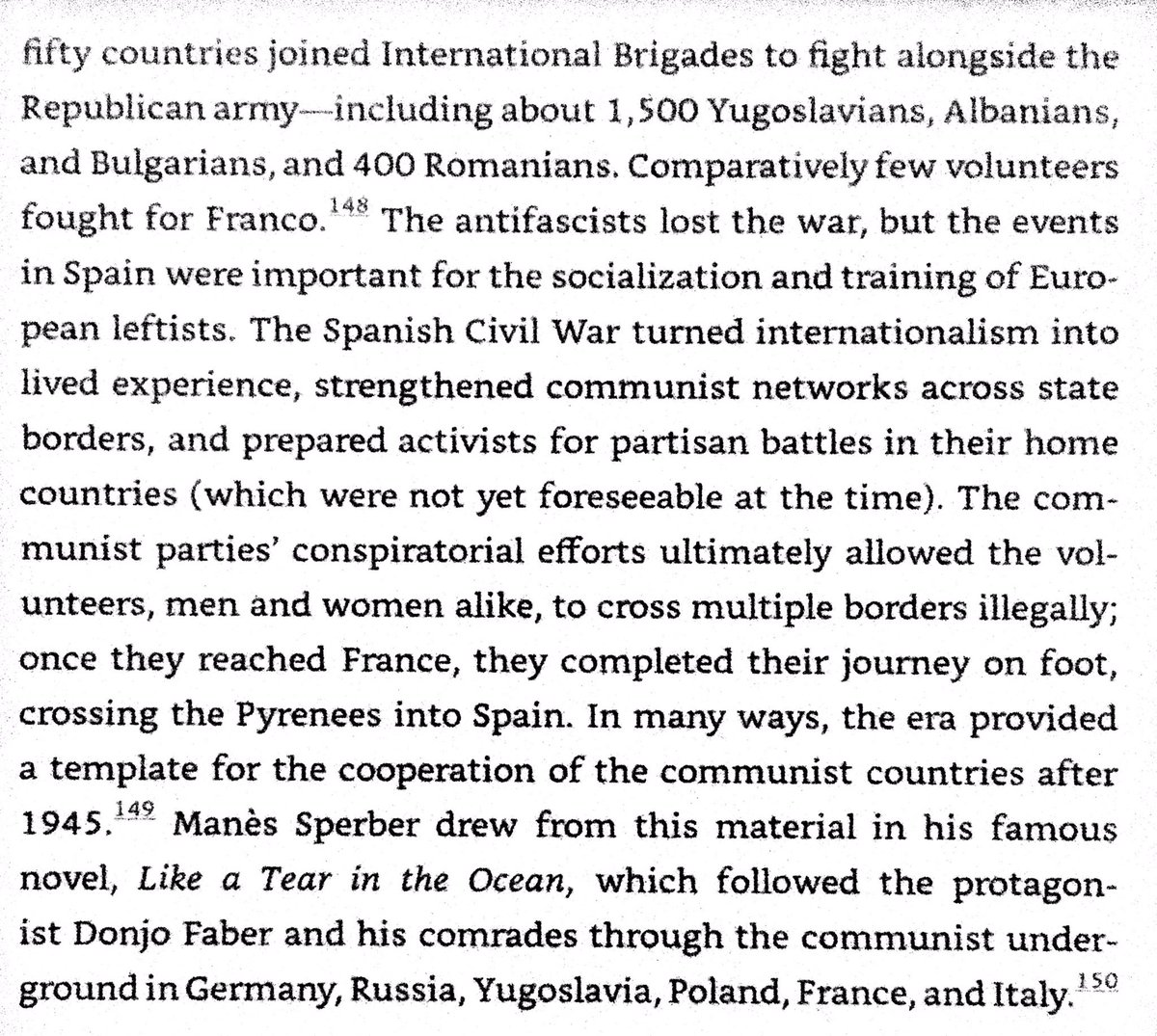
Agricultural productivity per worker in Balkans was half the European average in 1930s, & malnutrition was common. Population growth & smaller plots of farmland combined with primitive farming techniques were major factors in this. 

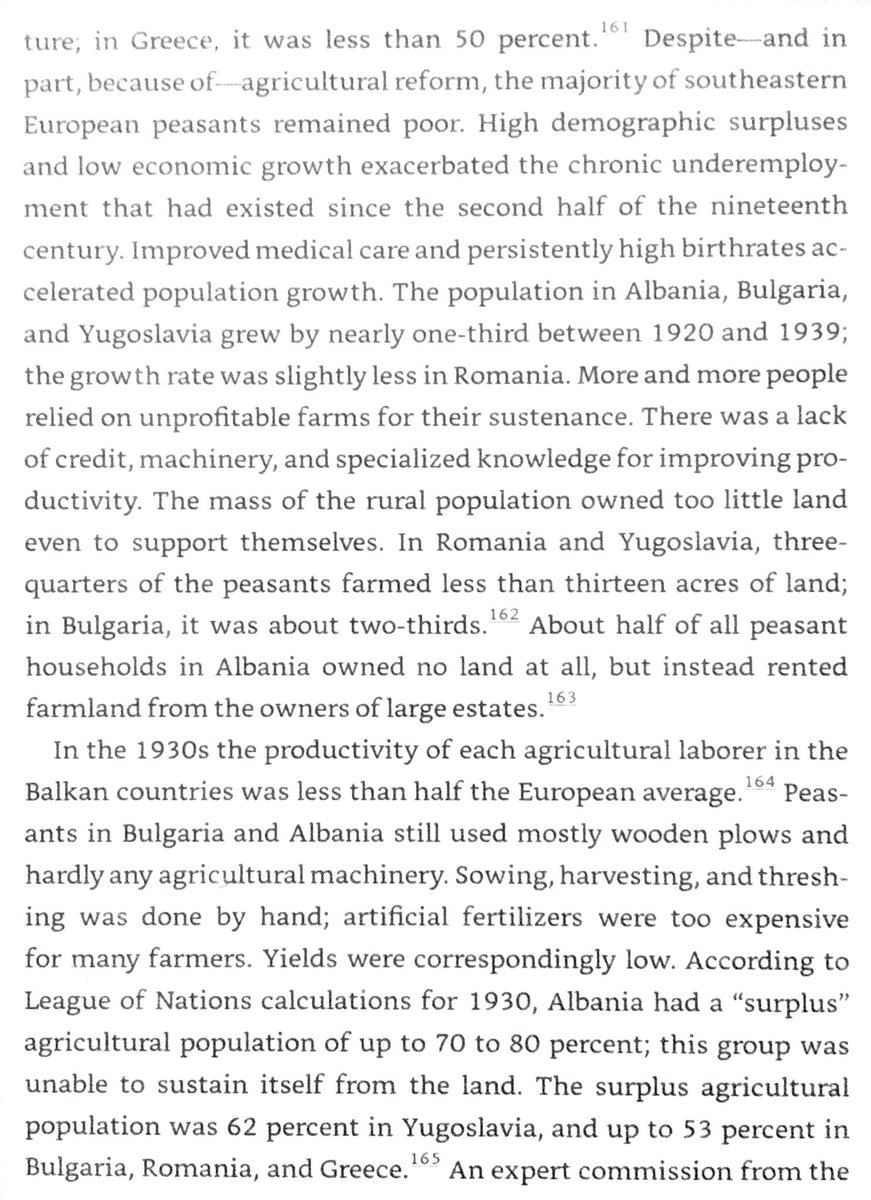

Interwar Germany’s economic relations with the Balkans: Germany could influence domestic production & require purchase of German consumer goods in exchange for overpriced raw materials & food. Germany grew to dominate trade with all Balkan states other than Albania. 

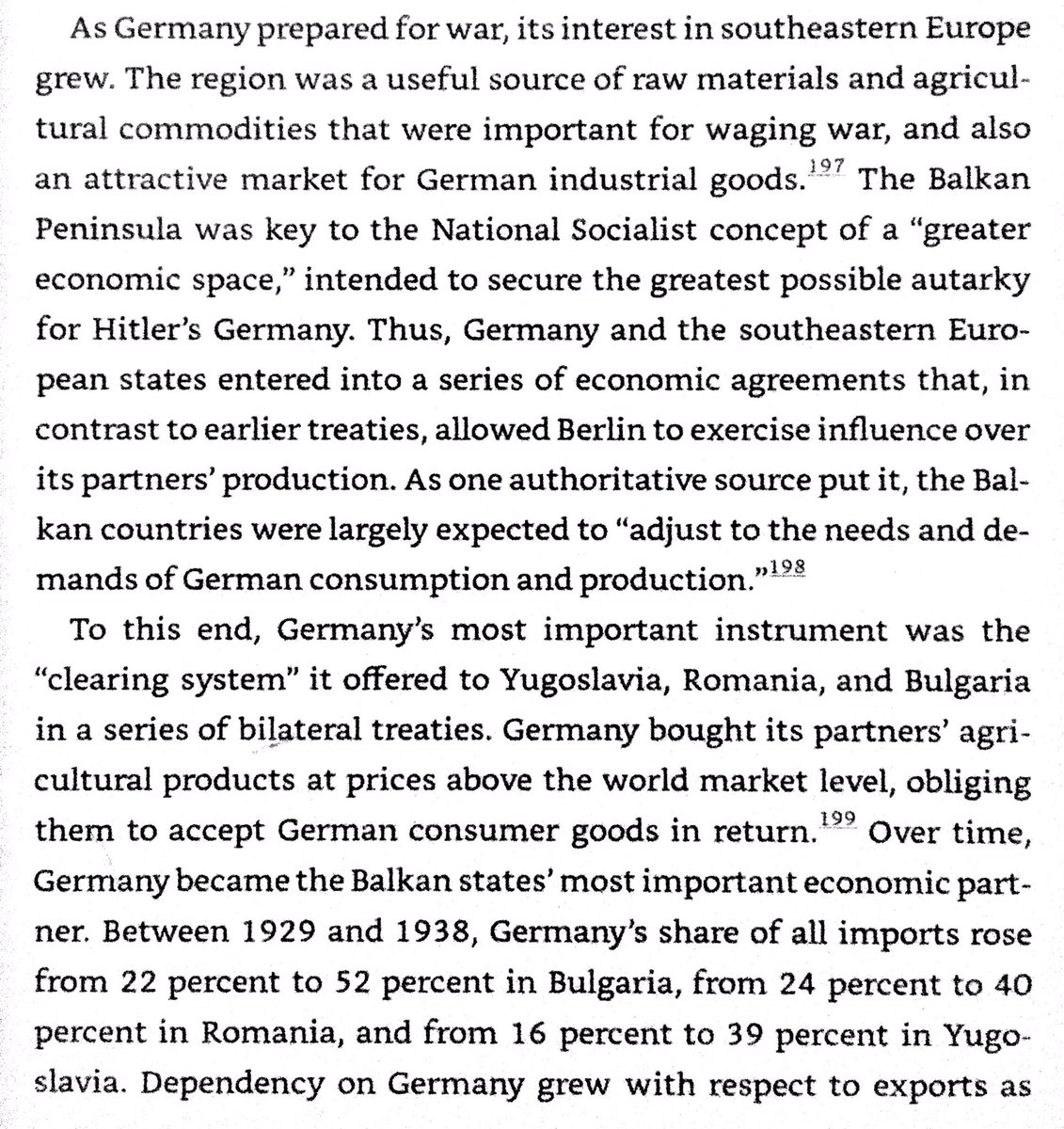
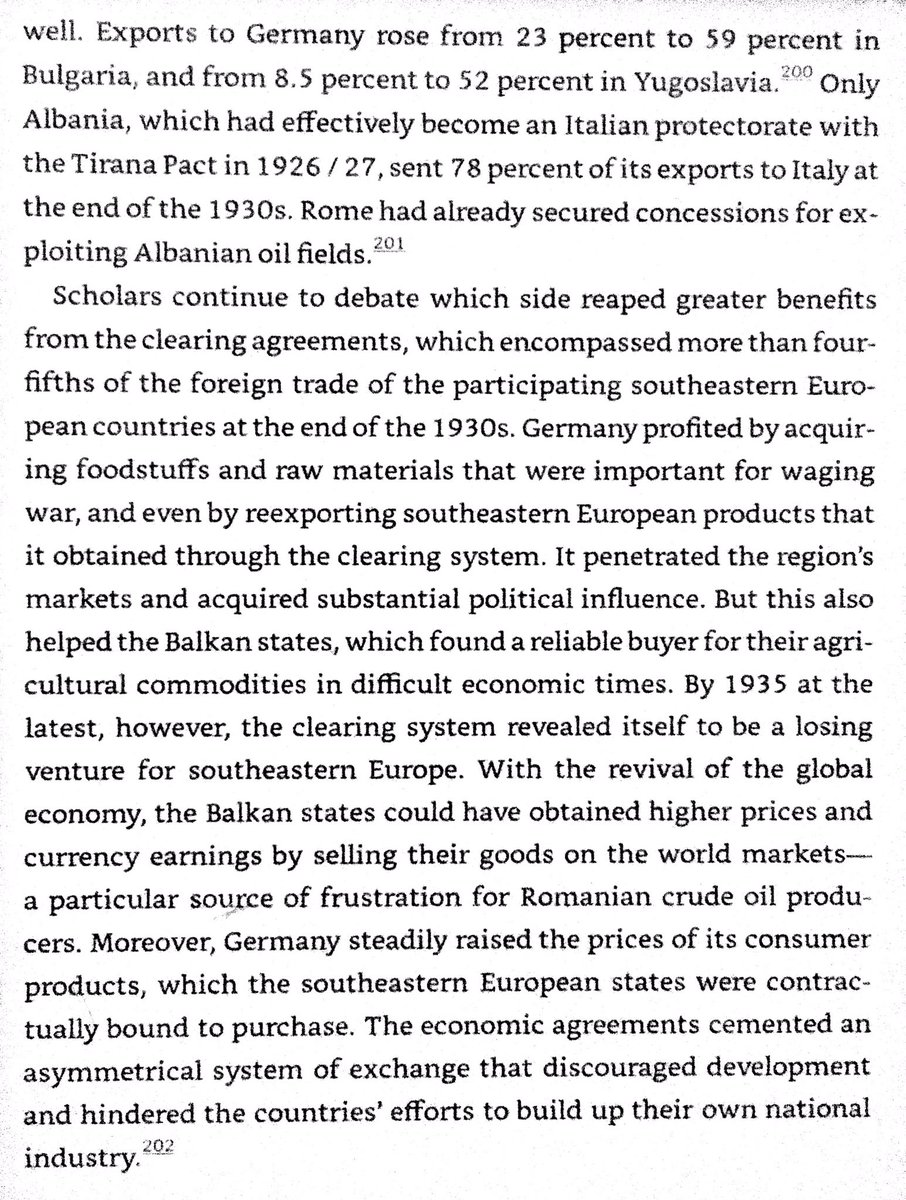
Fascist Croatia loathed Serbs, but considered Muslims to be “Croats of the Islamic faith”. Albanians & Bosnian Moslems were recruited into the SS & participated in brutal anti-partisan campaigns. 



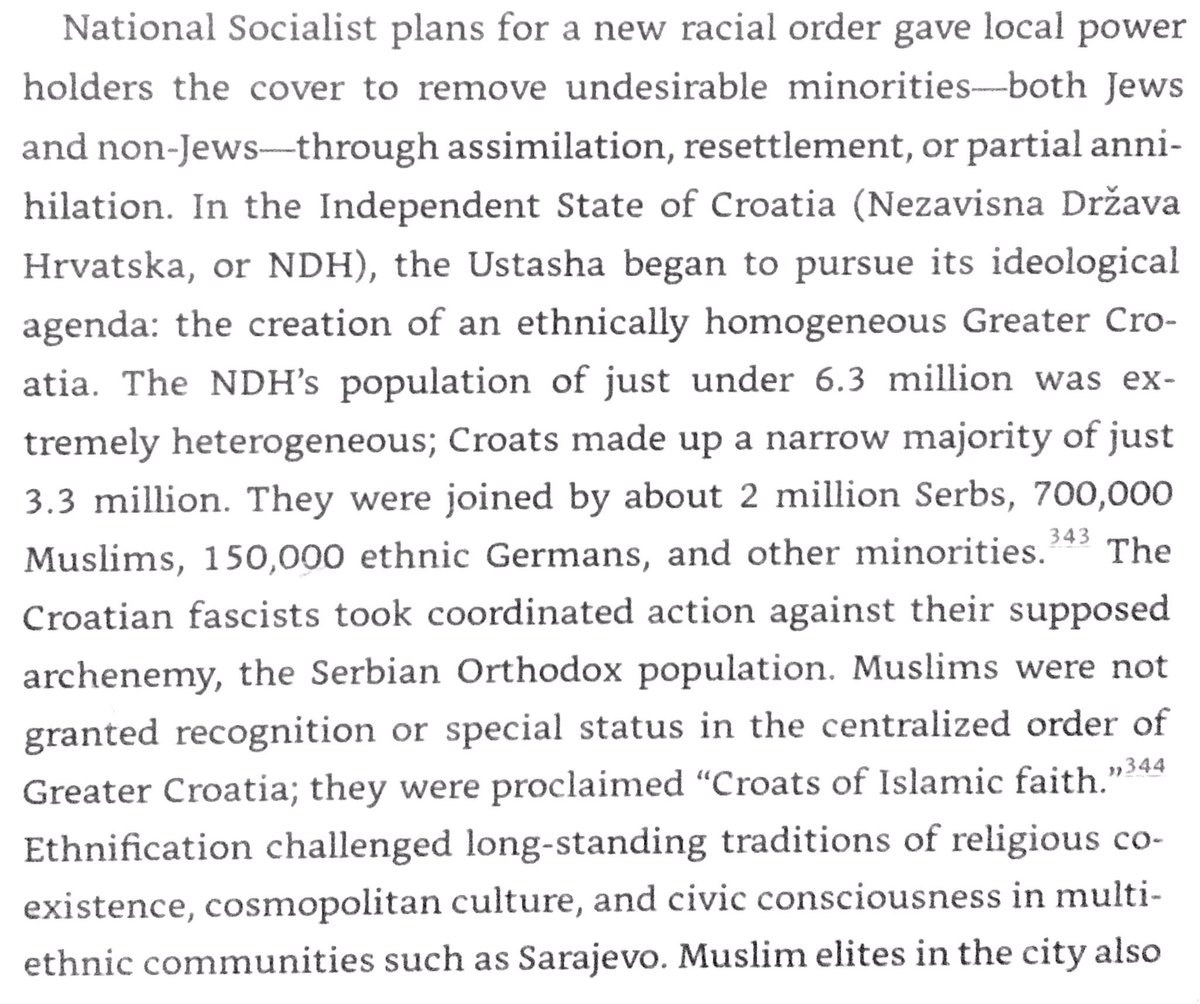
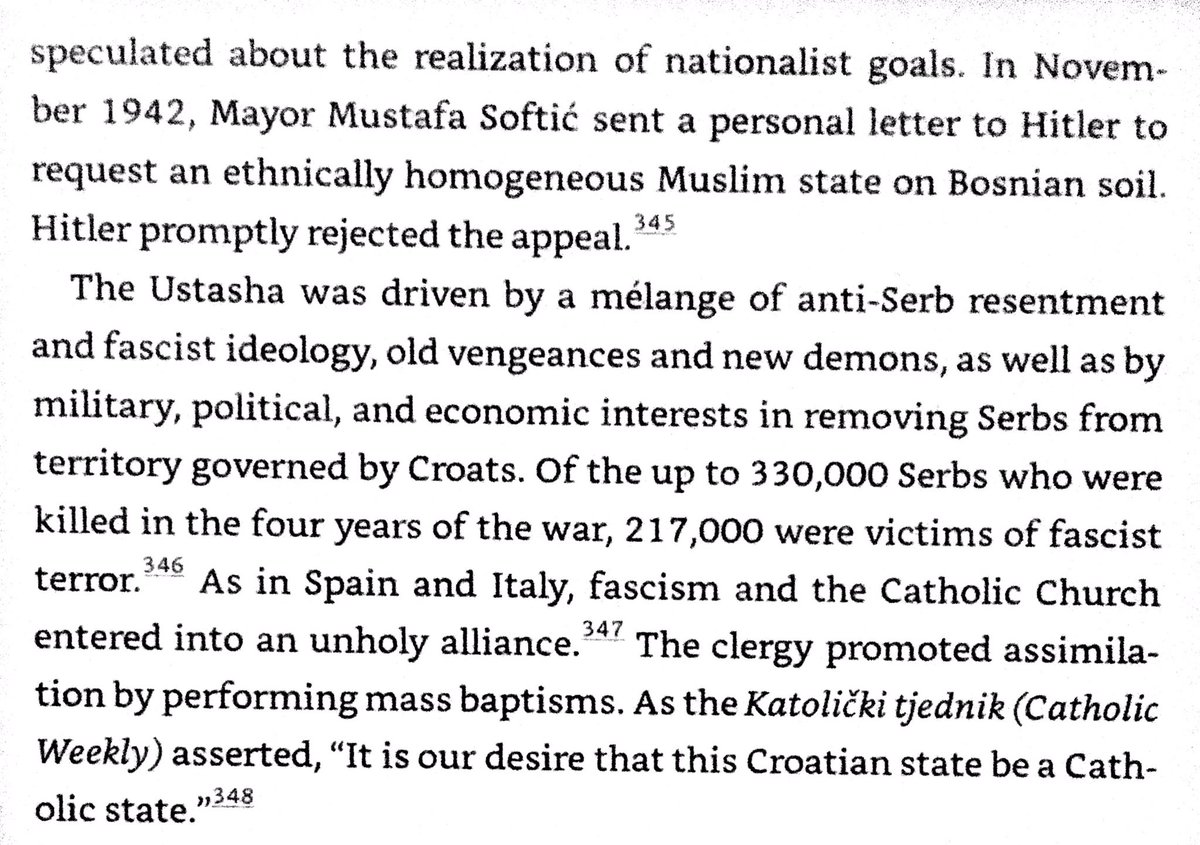

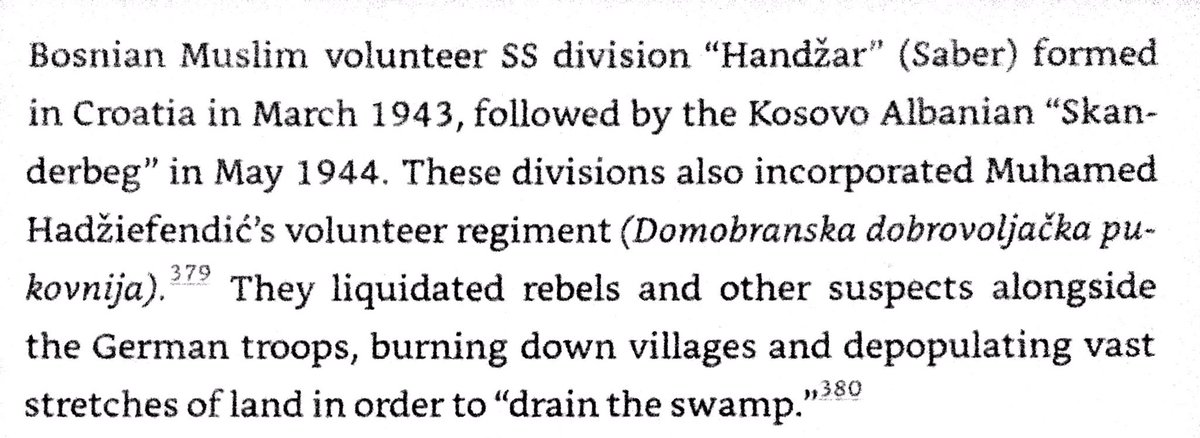
Partisans were majority Serb, but also 18.6% Croat, 9.2% Slovene, 3.5% Bosnian Moslem, 5.5% Montenegrin, & 2.7% Macedonian. 
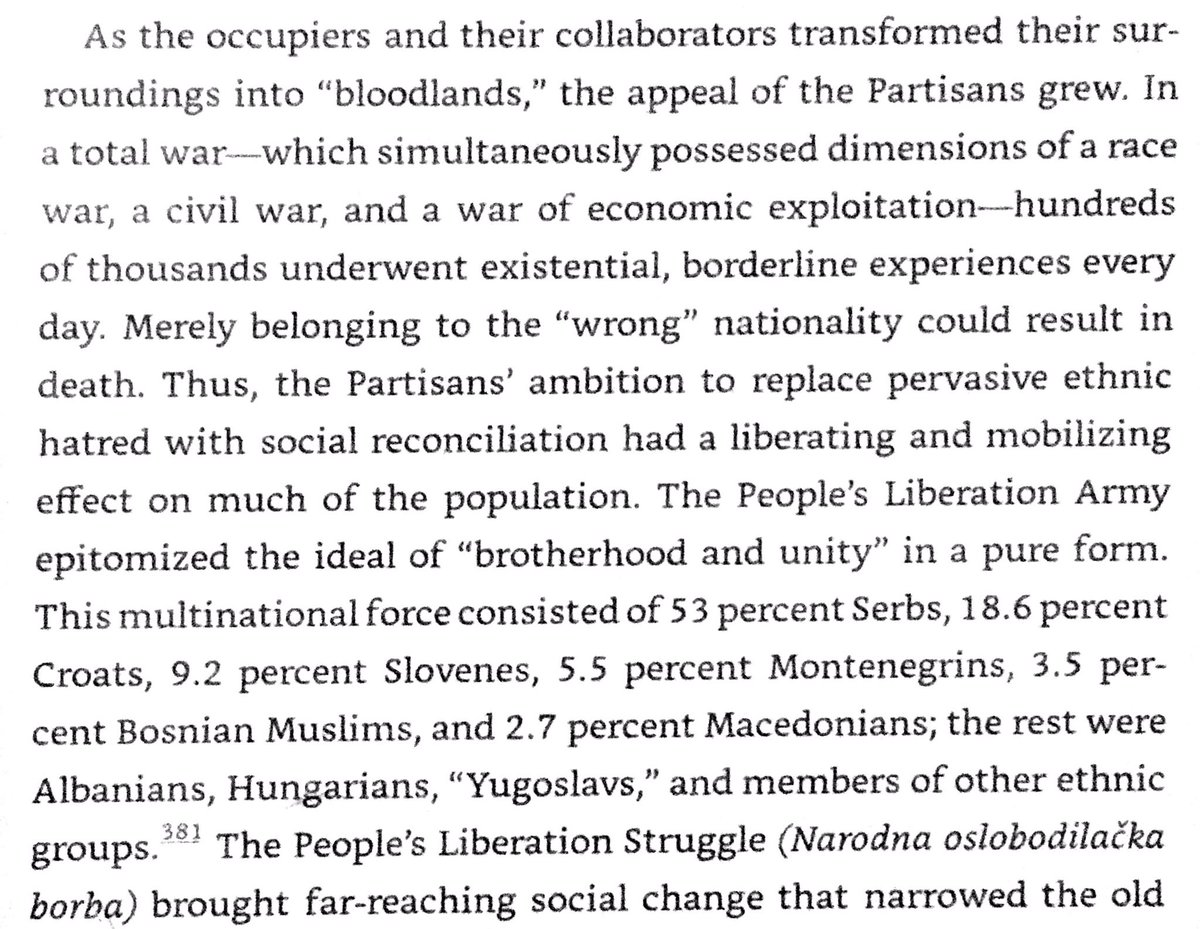
Yugoslavia’s active participation in Non-Aligned movement was beneficial - contacts from it led to $1.5 billion in yearly exports in weapons, shipping, & construction. 
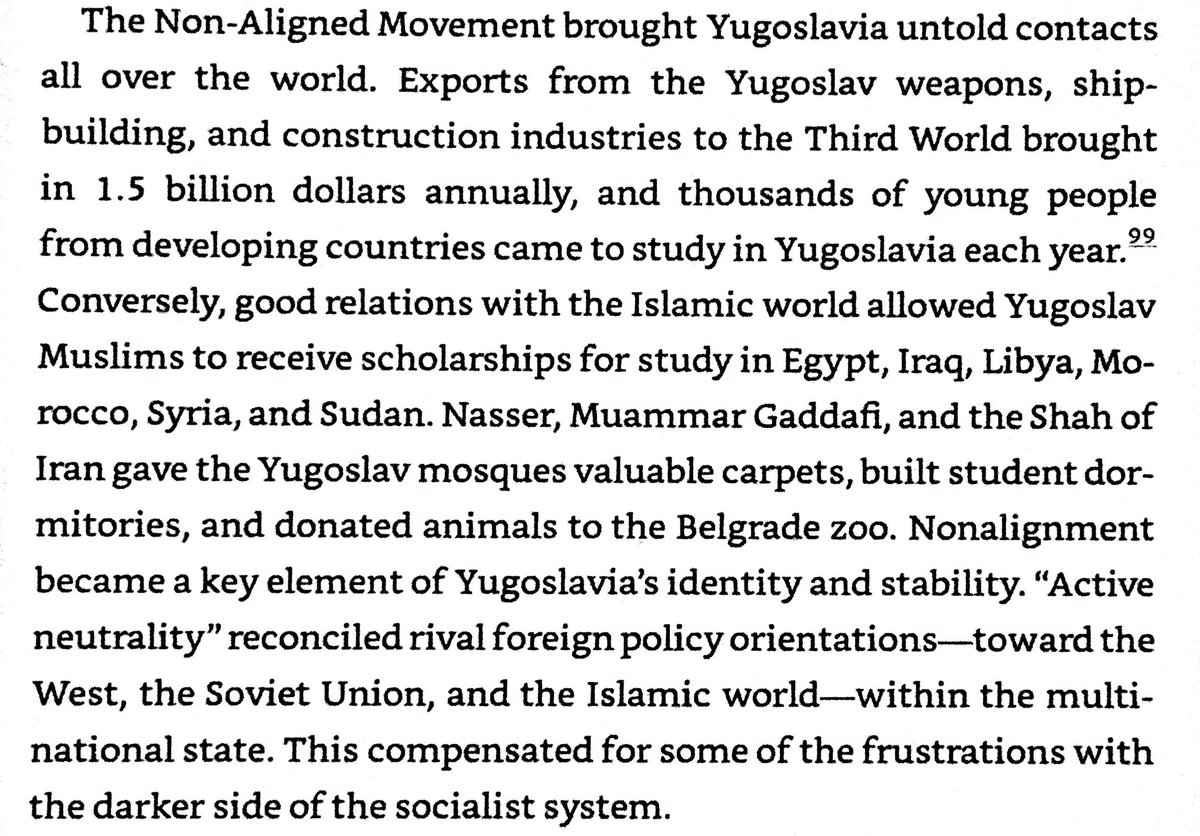
Balkan economies were hit hard by the global economic issues of the 1970s originating from the oil crisis & end of Bretton Woods, & they didn’t improve in the 1980s. 



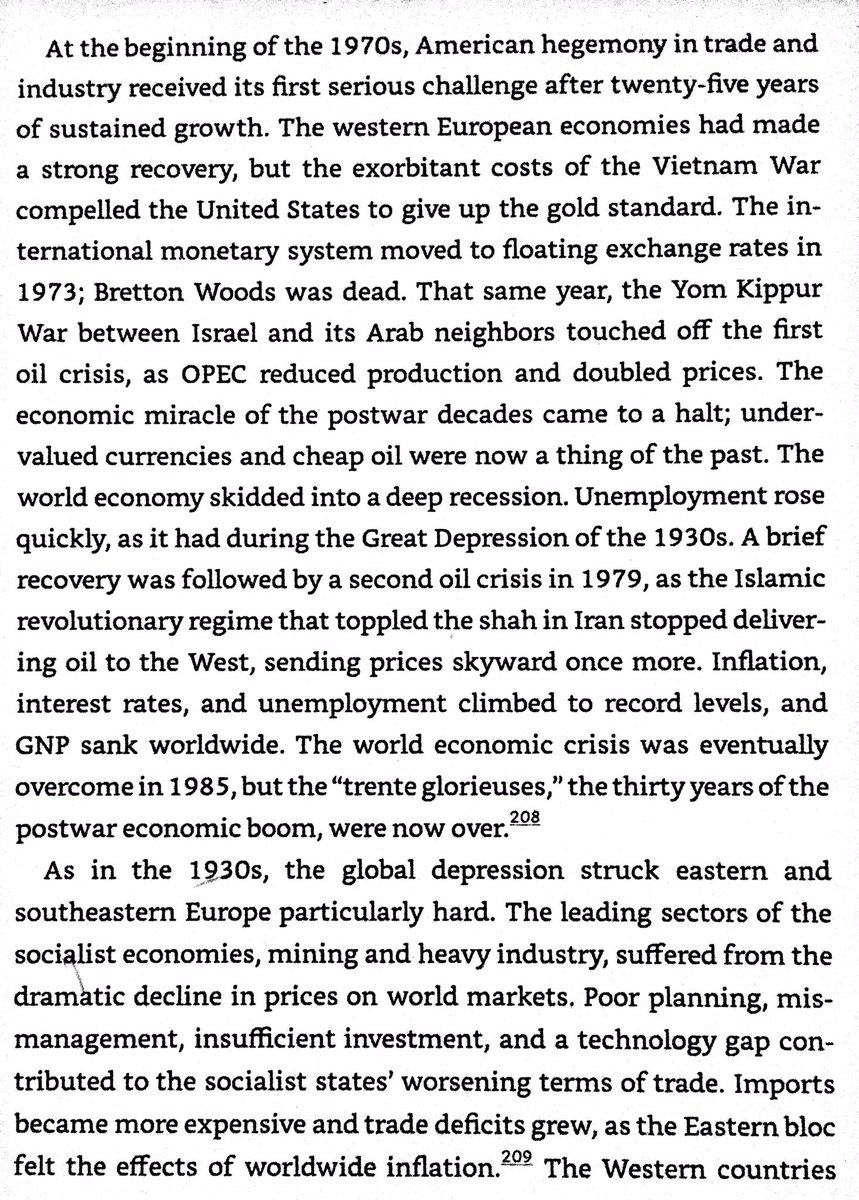
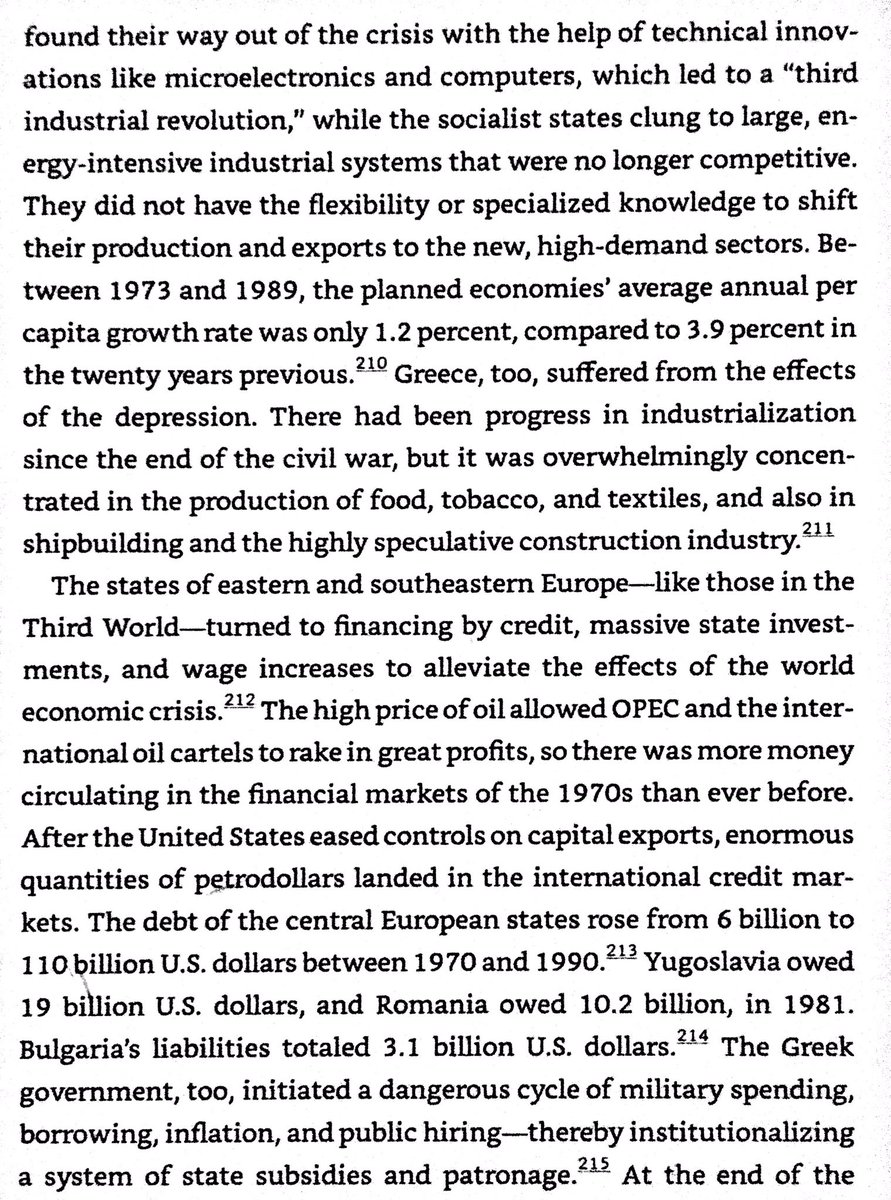
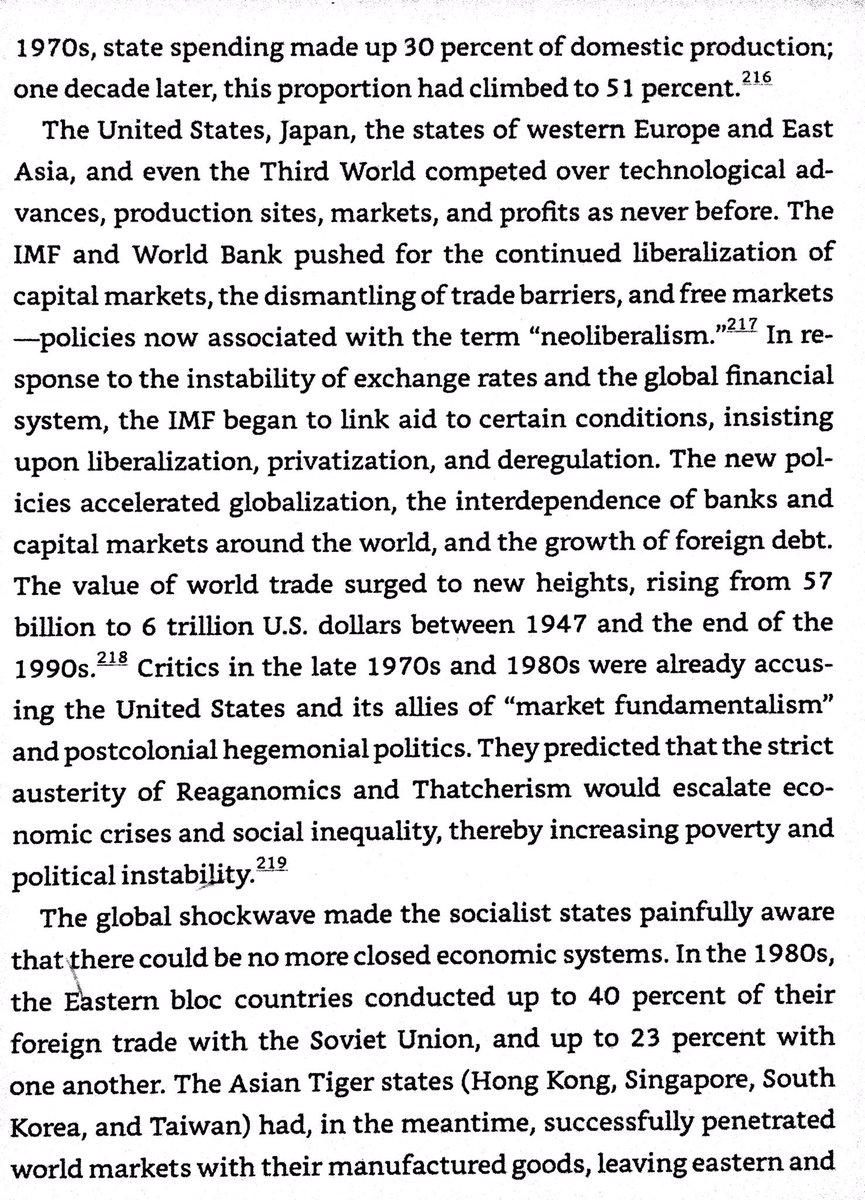

Seselj, Tudjman, Demaci, & Izetbegovic’s early careers as incendiary political figures persecuted by the Yugoslav government. 

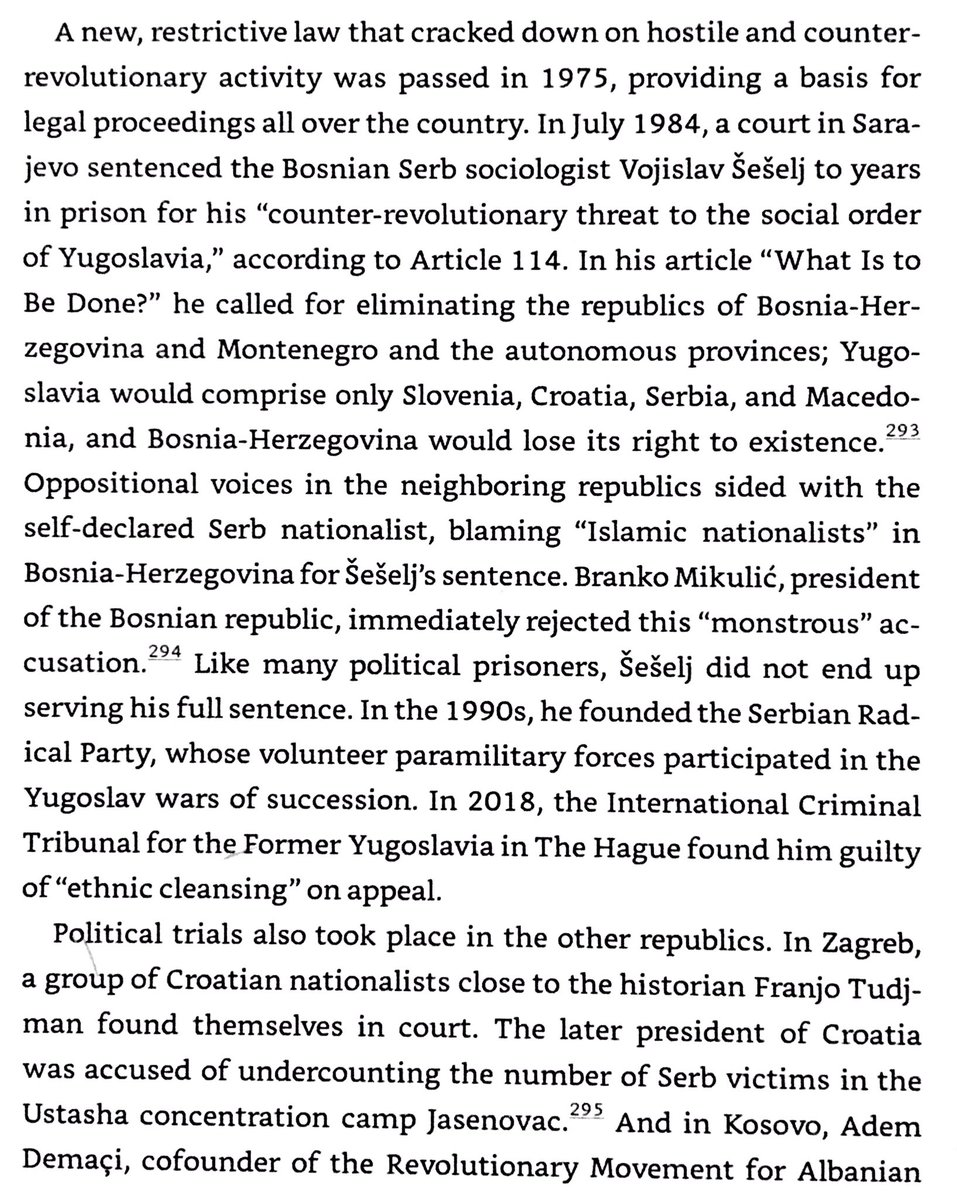
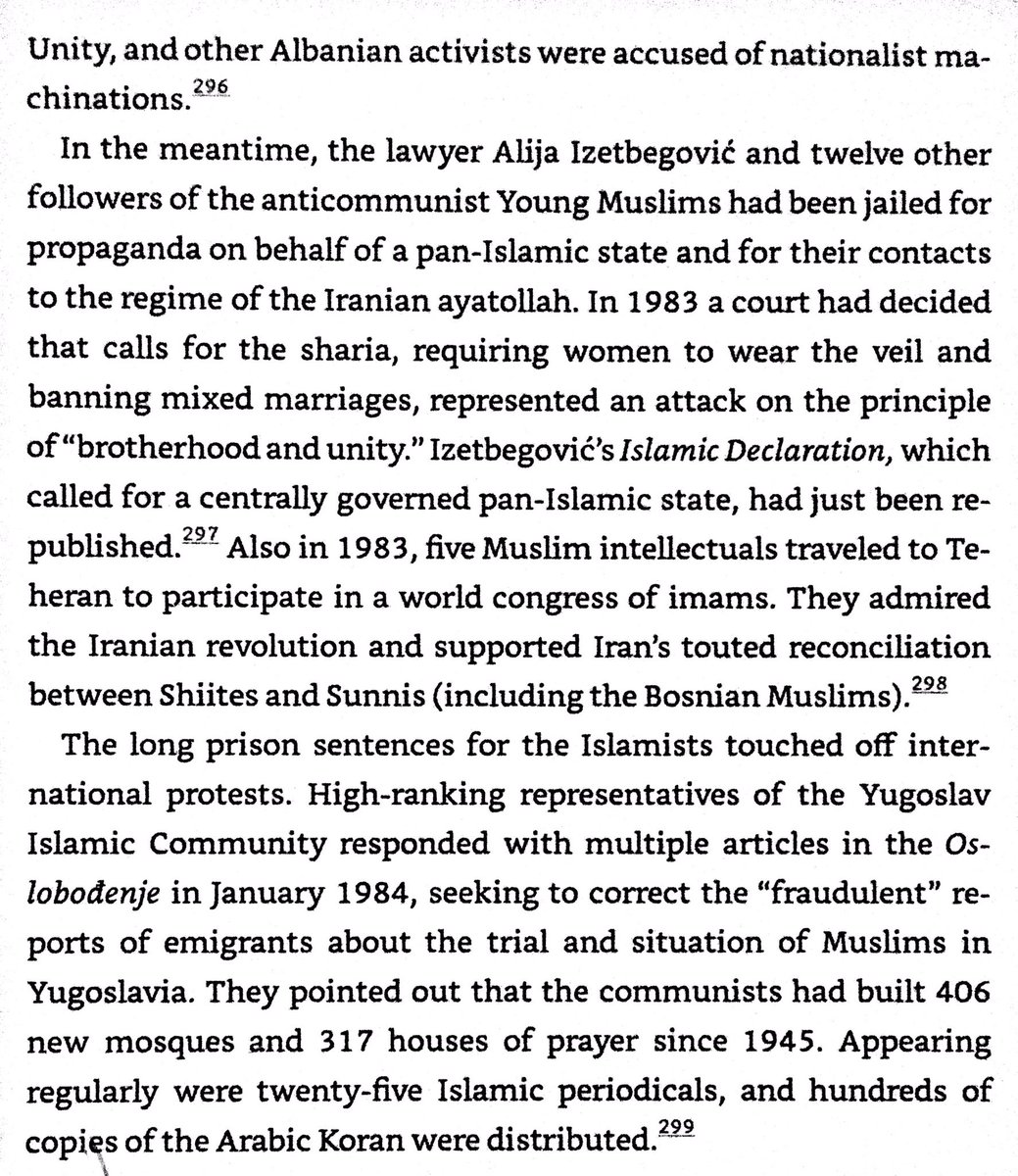
5x growth in NGOs from 1950s to 1980s. Their spending in the post-communist Balkans has created an artificial civil society driven by exclusively foreign interests. 


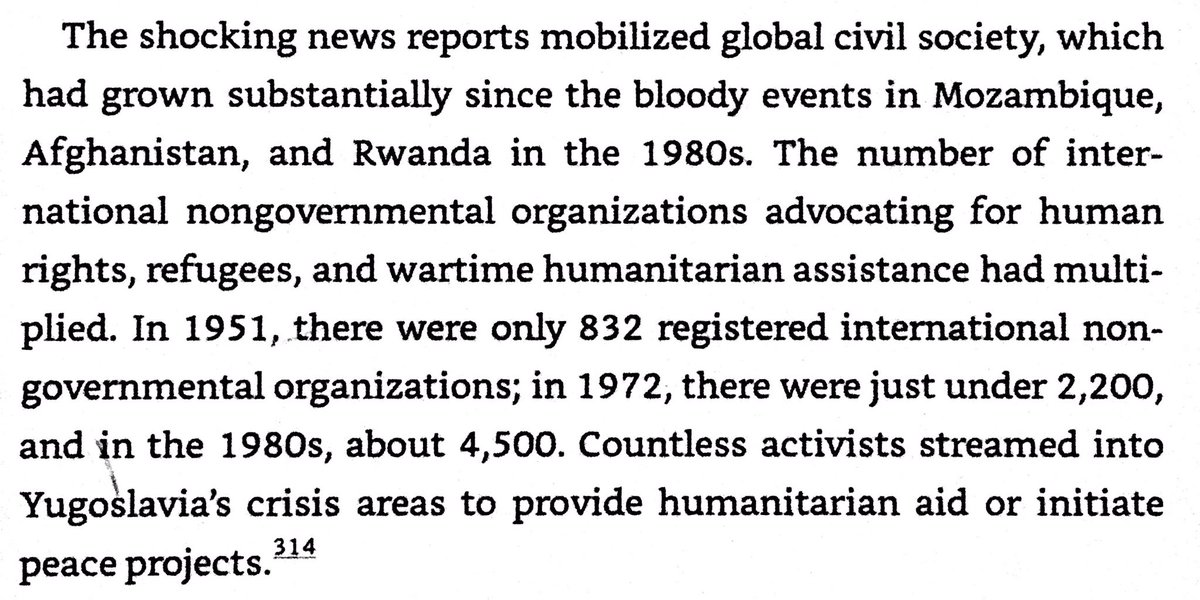
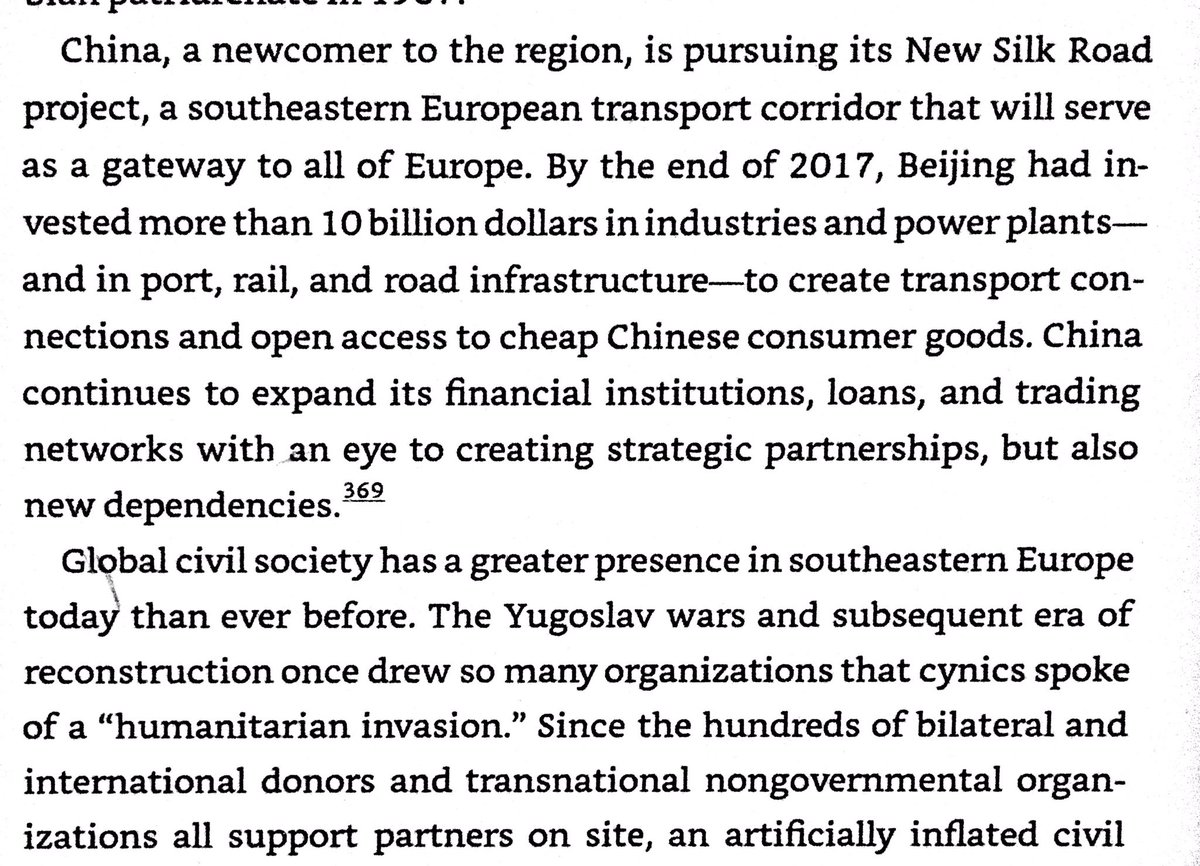
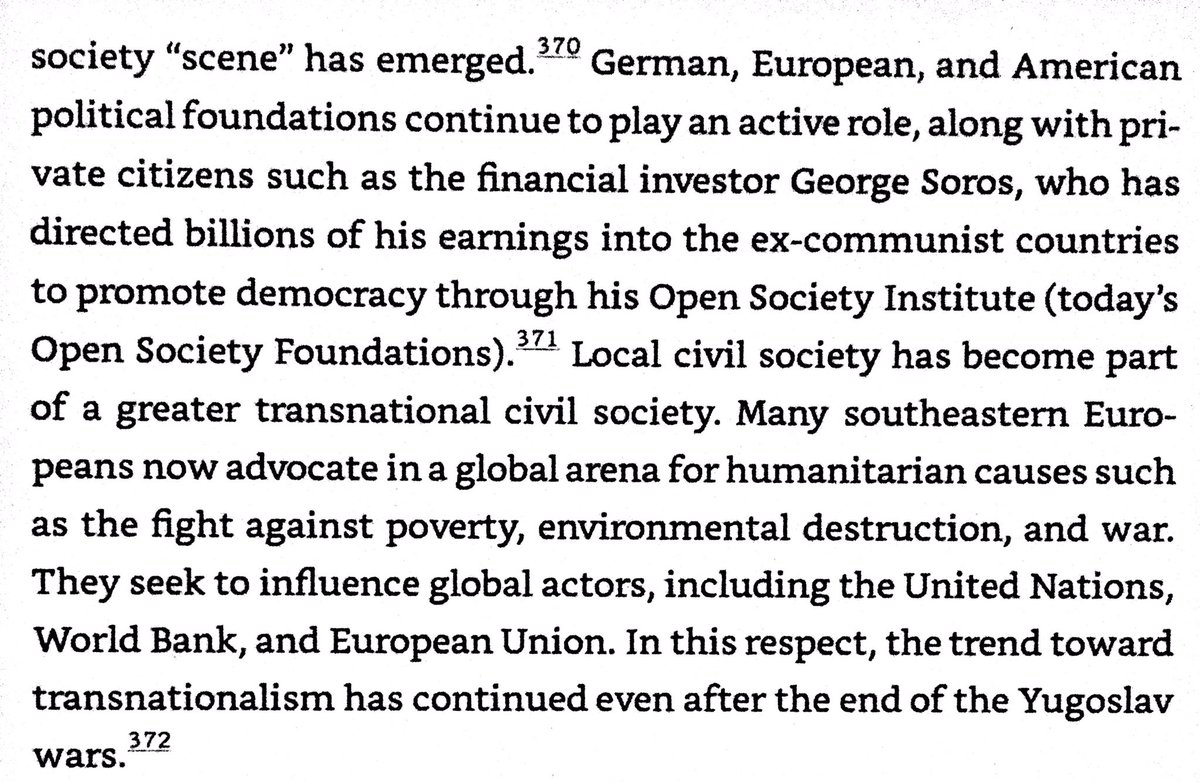
As an ignorant non-Balkan guy, I thought the book was decent. Author is a Croat in Germany, & Serb efriends said she is unreliable. She seemed like she tried to be fair-minded, even if of her numbers seemed dicey. Worth a read, & pretty short.
• • •
Missing some Tweet in this thread? You can try to
force a refresh

